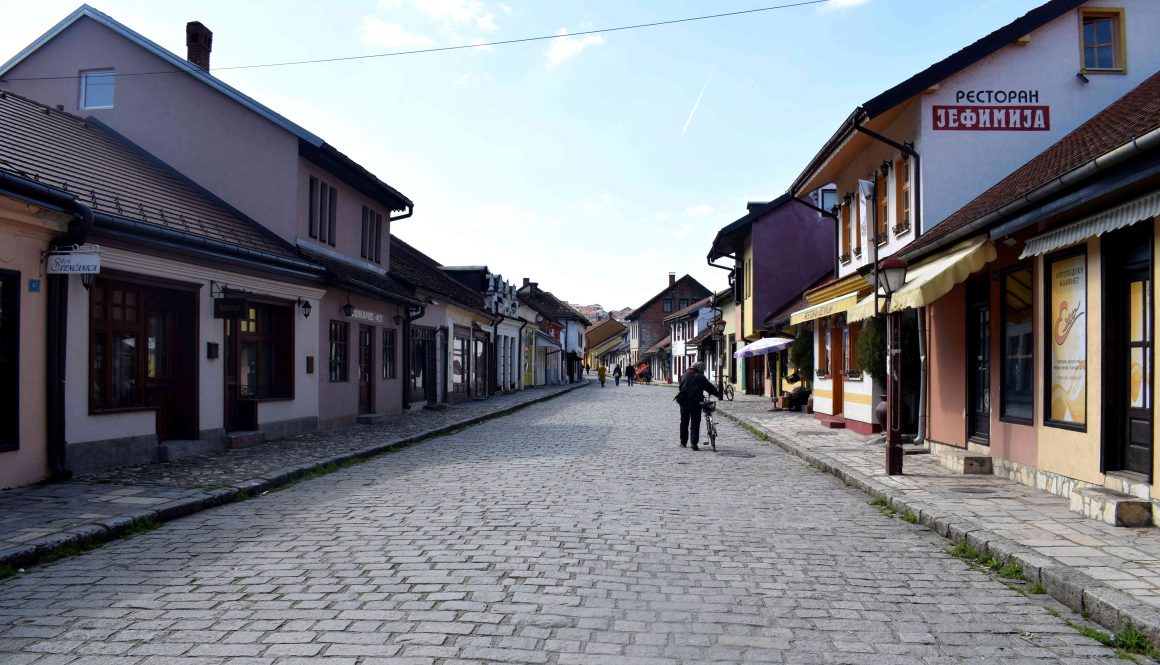Valjevo, Serbia: A City That Managed To Save Its Past
Valjevo is a small Serbian city of around 59,000 people located 90 kilometers southwest of Belgrade on the road that leads to Bosnia and connects Belgrade with Sarajevo.
Geographically, the city lies in Western Serbia. The terrain in this part of the country is mountainous, and the local dialect already morphs into something that more closely resembles neighboring Bosnia then that of Belgrade and Vojvodina in the north.
And while the hills, rivers and nature that surrounds Valjevo are reason enough to visit, perhaps the city’s biggest selling point is the Tesnjar district, a historic neighborhood located in the very heart of Valjevo that offers a glimpse into what life was like in Serbia in the early 19th century.
Across the world, cities have seen their historic centers vanish under the threat of modern development. A high-rise there, a shopping center here. When you do the math and add everything up, you’ll find that very little historic buildings are left. But Valjevo is an exception. The city has miraculously managed to save its historical center to this very day.
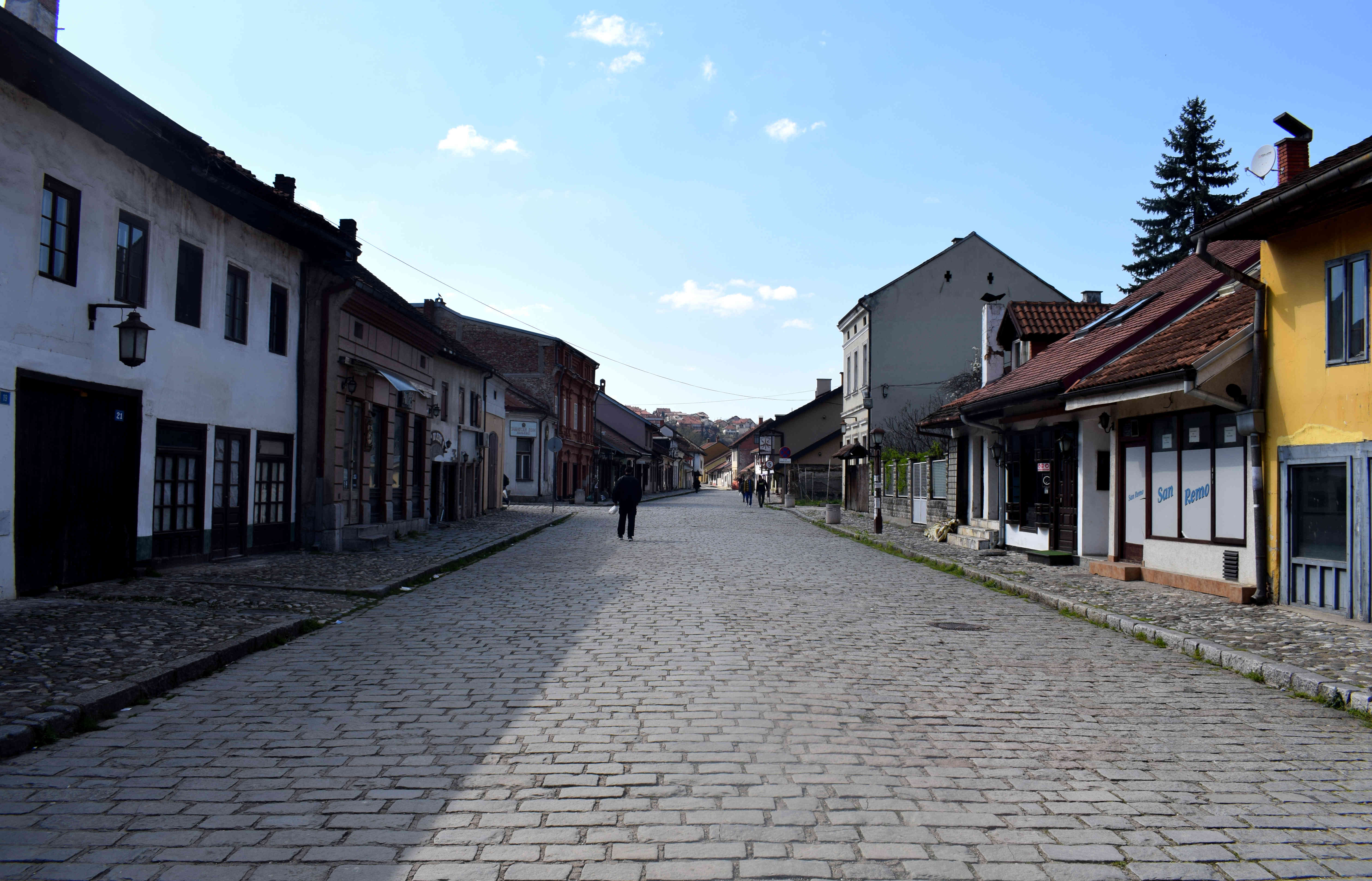 It was early April 2021 when we visited. COVID restrictions had been in place in Serbia for over two months. Cafes, bars, restaurants were all prevented from operating.
It was early April 2021 when we visited. COVID restrictions had been in place in Serbia for over two months. Cafes, bars, restaurants were all prevented from operating.
This was a major blow to the city. As anyone from the Balkans knows, cafe culture is huge here. You shut down the cafes, you shut down a major facet of what makes life in the Balkans so great.
Because of all this, the streets were pretty empty. But we did find a cute dog laying out in the sun, relishing the situation.
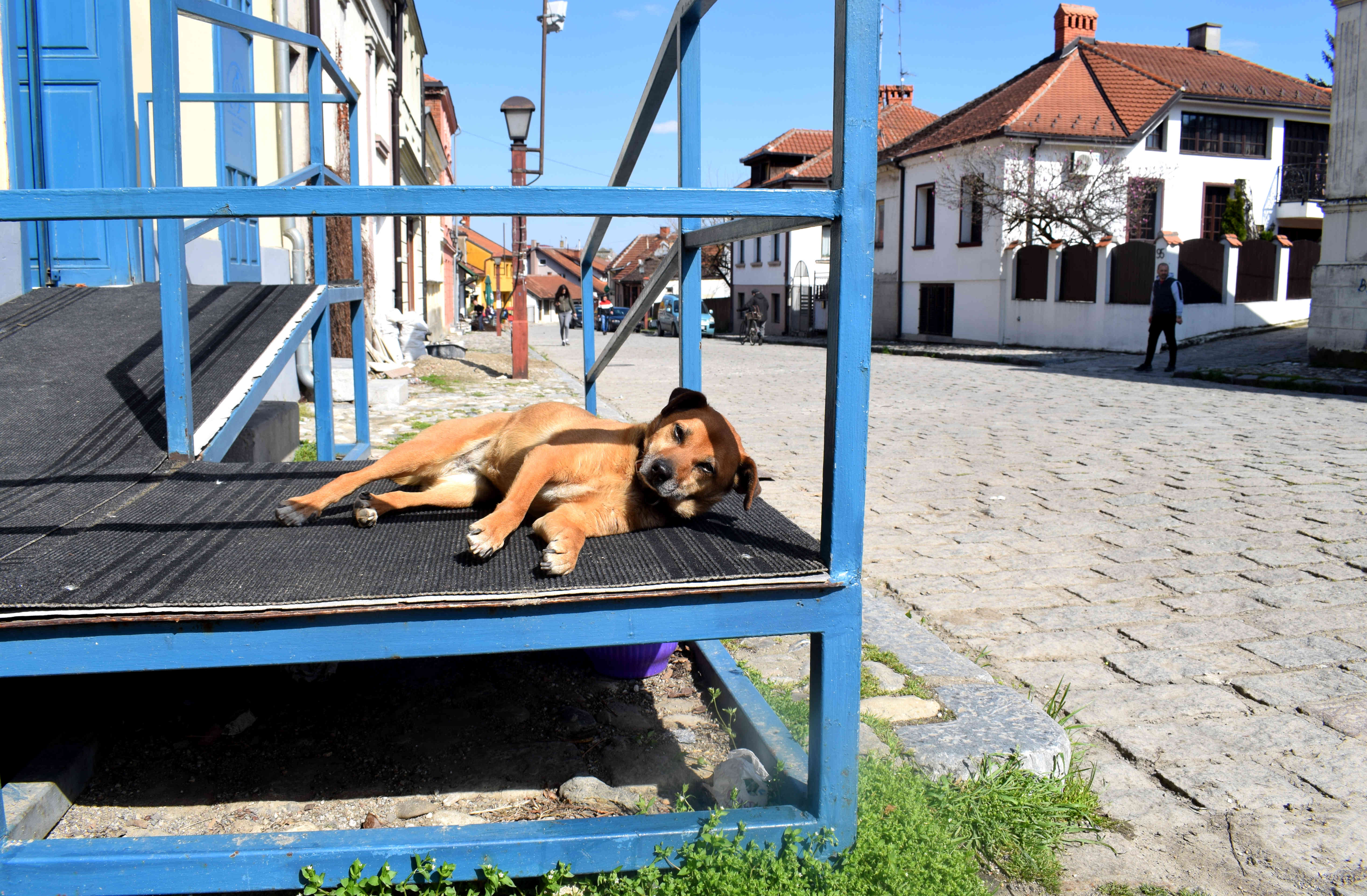 Across the city you have a ton of old buildings from the 19th century still standing. This is reason enough to visit Valjevo.
Across the city you have a ton of old buildings from the 19th century still standing. This is reason enough to visit Valjevo.
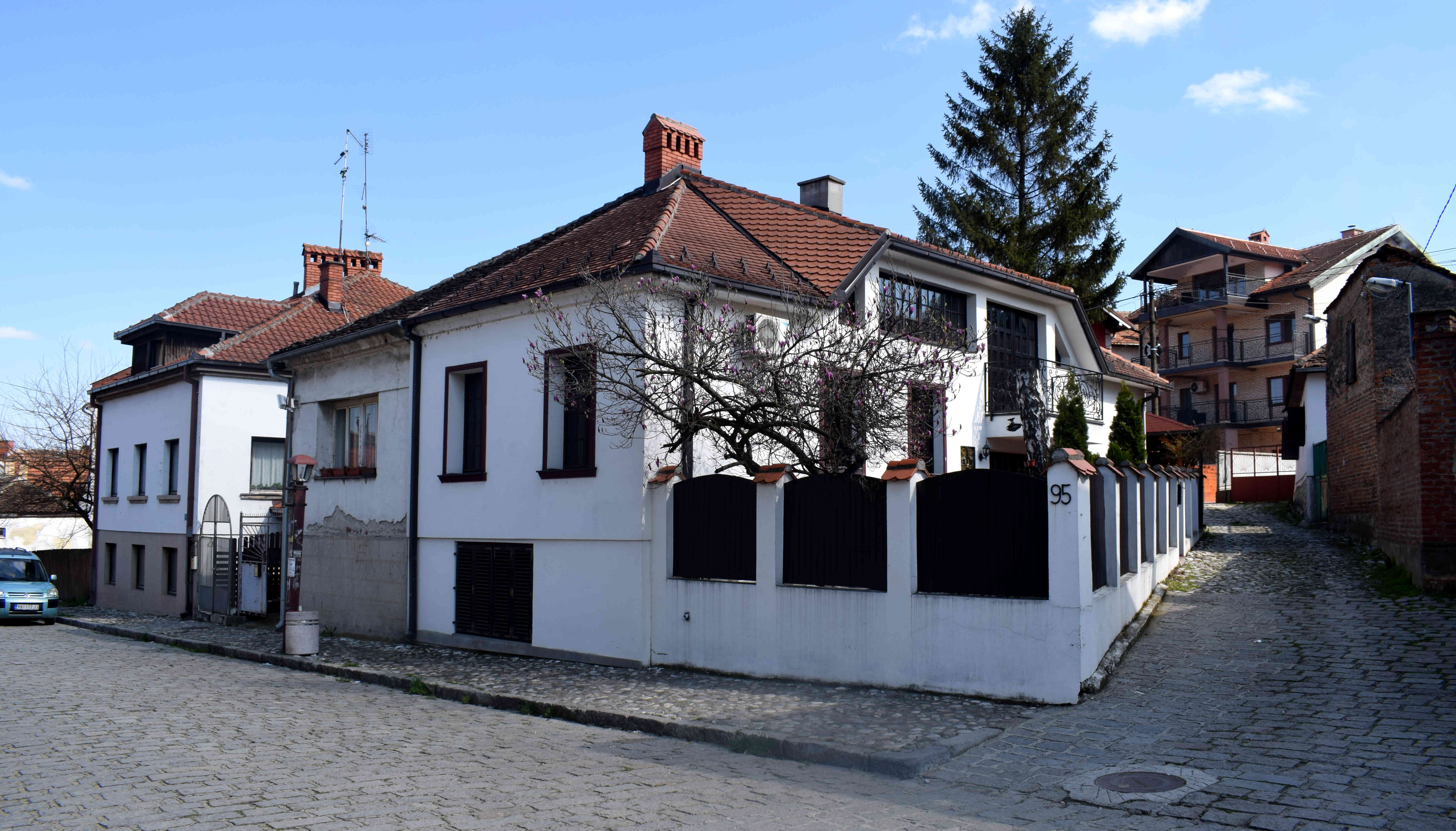 But there is a practical reason to visit too. Valjevo is easily accessible from Belgrade. The best way is to take a train. It takes only 1.5 hours. The new trains are modern and comfortable. It’s cheap. A roundtrip ticket will set you back just $8 (as of April 2021). And you can also bring your bikes with you on the train. Bringing a bike with you will give you access to the surrounding nature outside the city not so easily accessible by foot.
But there is a practical reason to visit too. Valjevo is easily accessible from Belgrade. The best way is to take a train. It takes only 1.5 hours. The new trains are modern and comfortable. It’s cheap. A roundtrip ticket will set you back just $8 (as of April 2021). And you can also bring your bikes with you on the train. Bringing a bike with you will give you access to the surrounding nature outside the city not so easily accessible by foot.
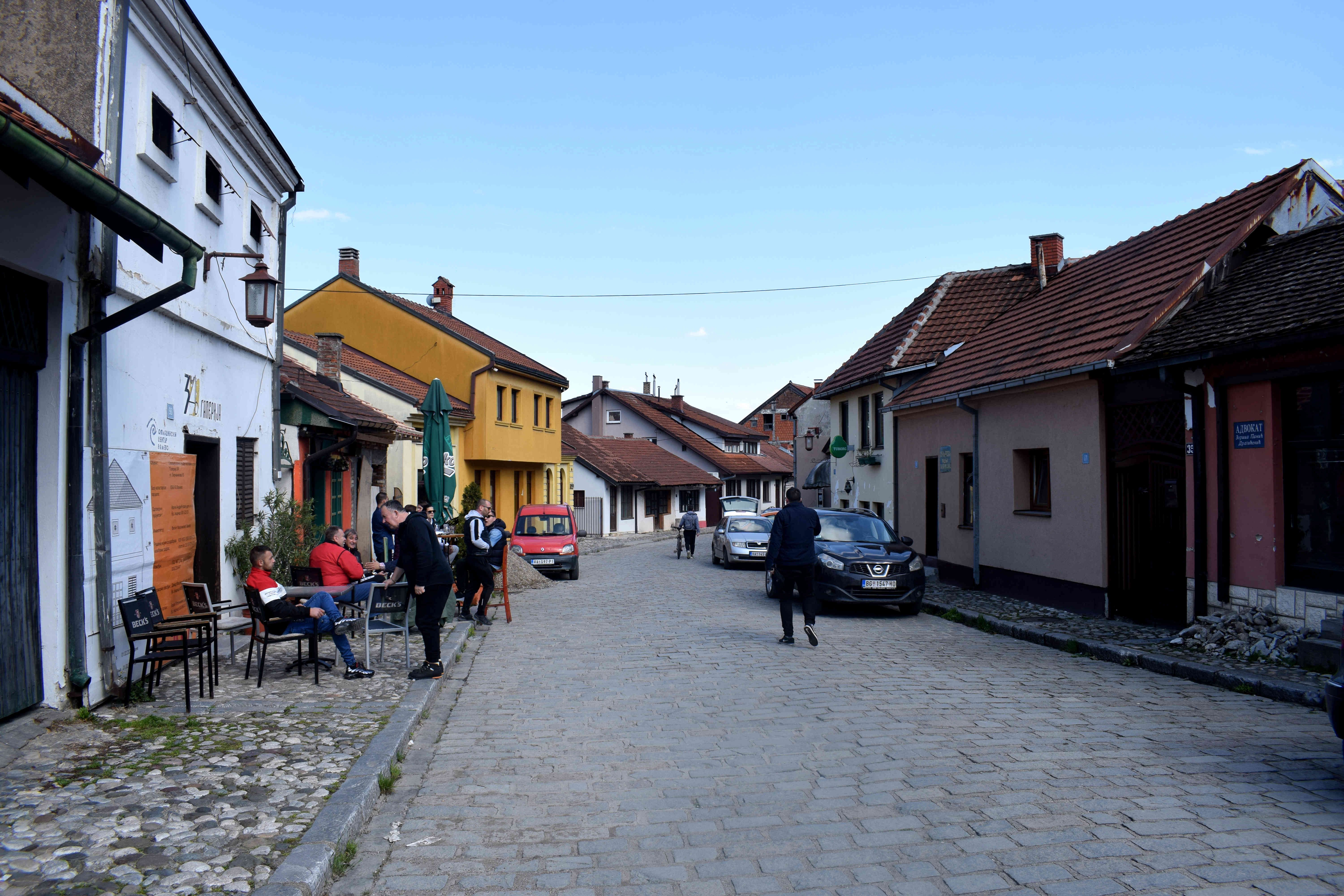 When you arrive, Tesnjar District is the first area you have to explore. It is the city’s historical district, where all the buildings have historical status.
When you arrive, Tesnjar District is the first area you have to explore. It is the city’s historical district, where all the buildings have historical status.
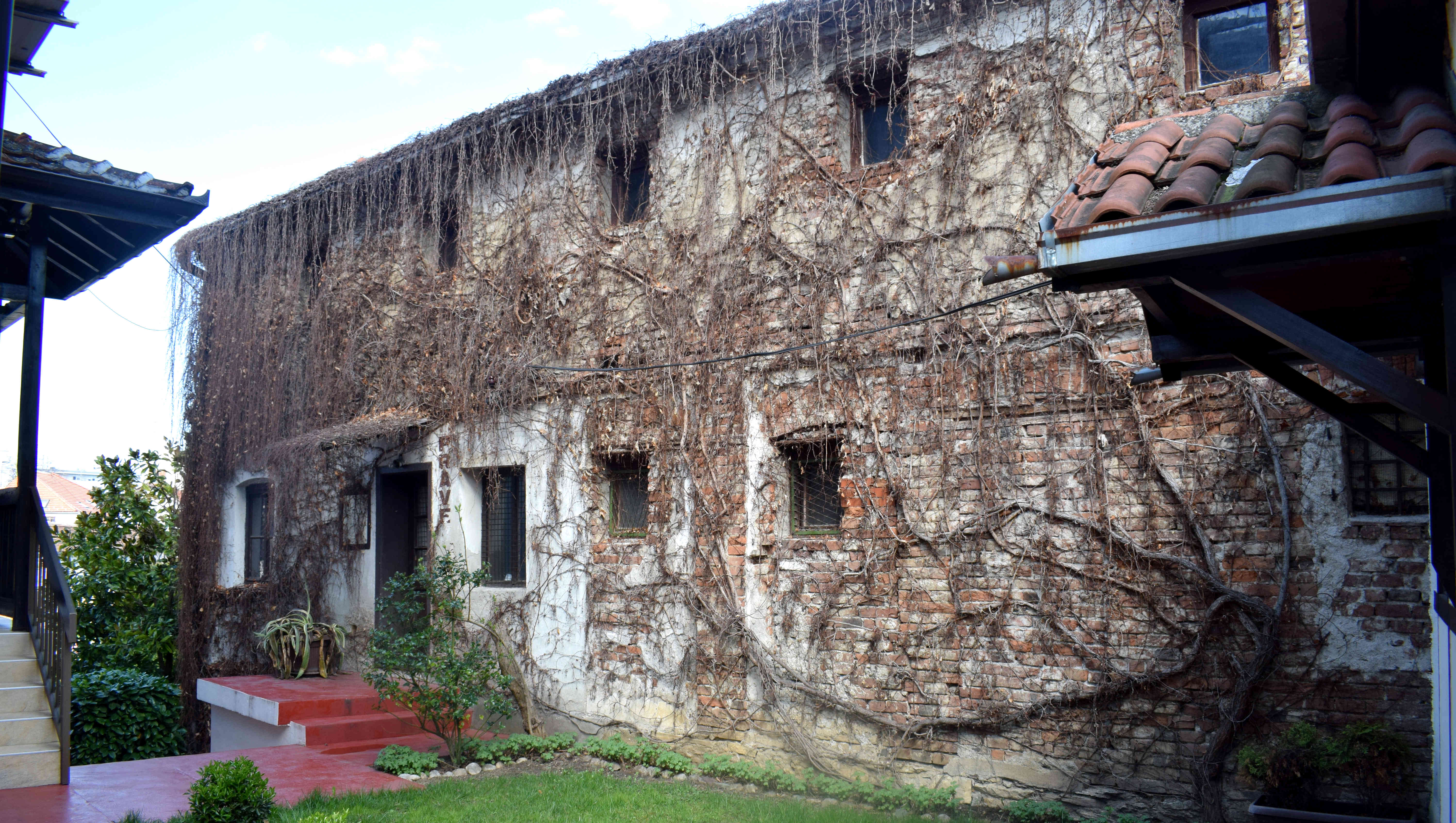 That means developers can’t just barge in, purchase an old building, tear it down, and build something new. Every business on the street, if it wishes to operate there, has to respect the historical outline of the street. Just take a look at this building: A dentistry, which has set up office in a building from the 19th century.
That means developers can’t just barge in, purchase an old building, tear it down, and build something new. Every business on the street, if it wishes to operate there, has to respect the historical outline of the street. Just take a look at this building: A dentistry, which has set up office in a building from the 19th century.
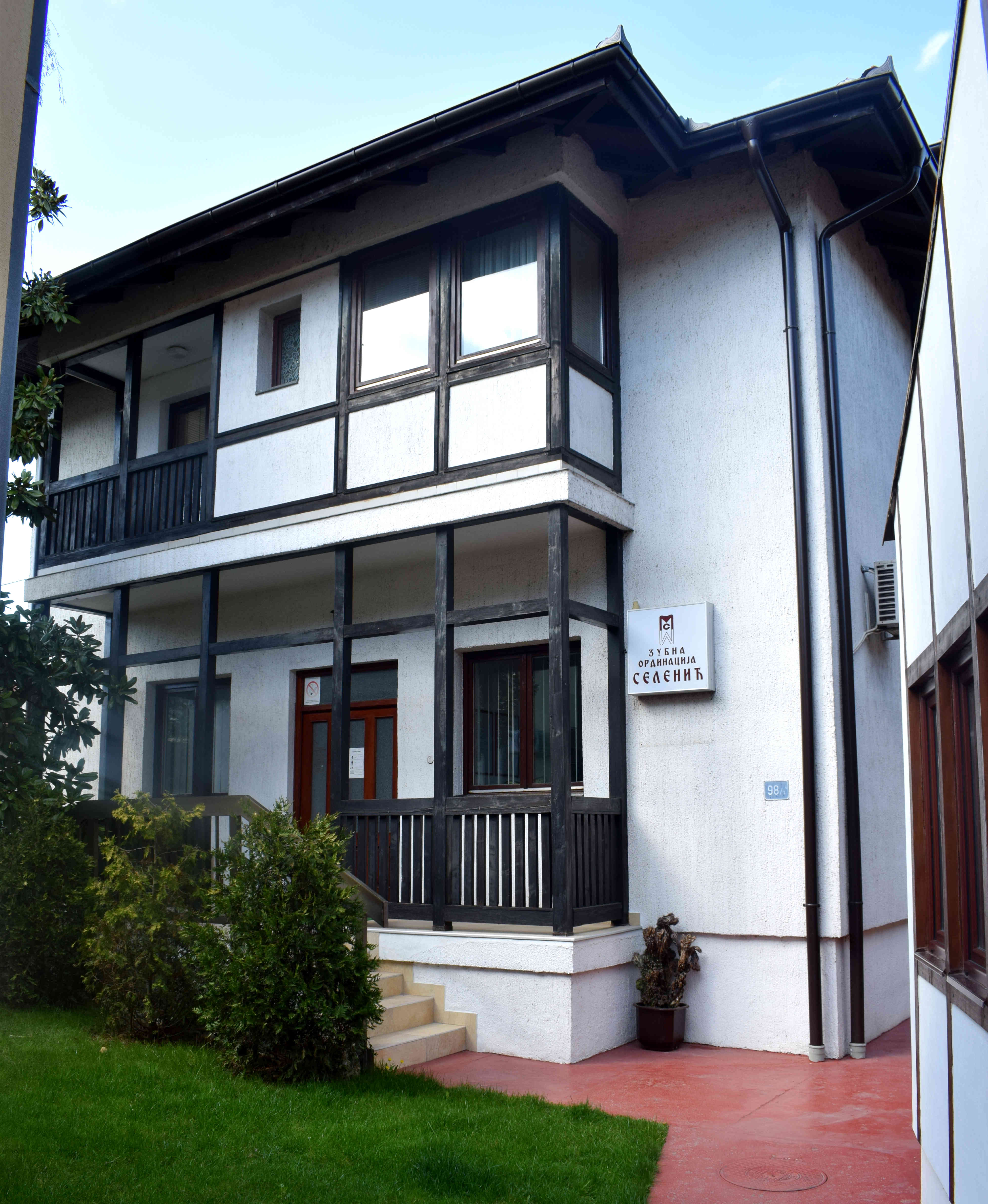 An original gate from 1909 greets visitors from the street.
An original gate from 1909 greets visitors from the street.
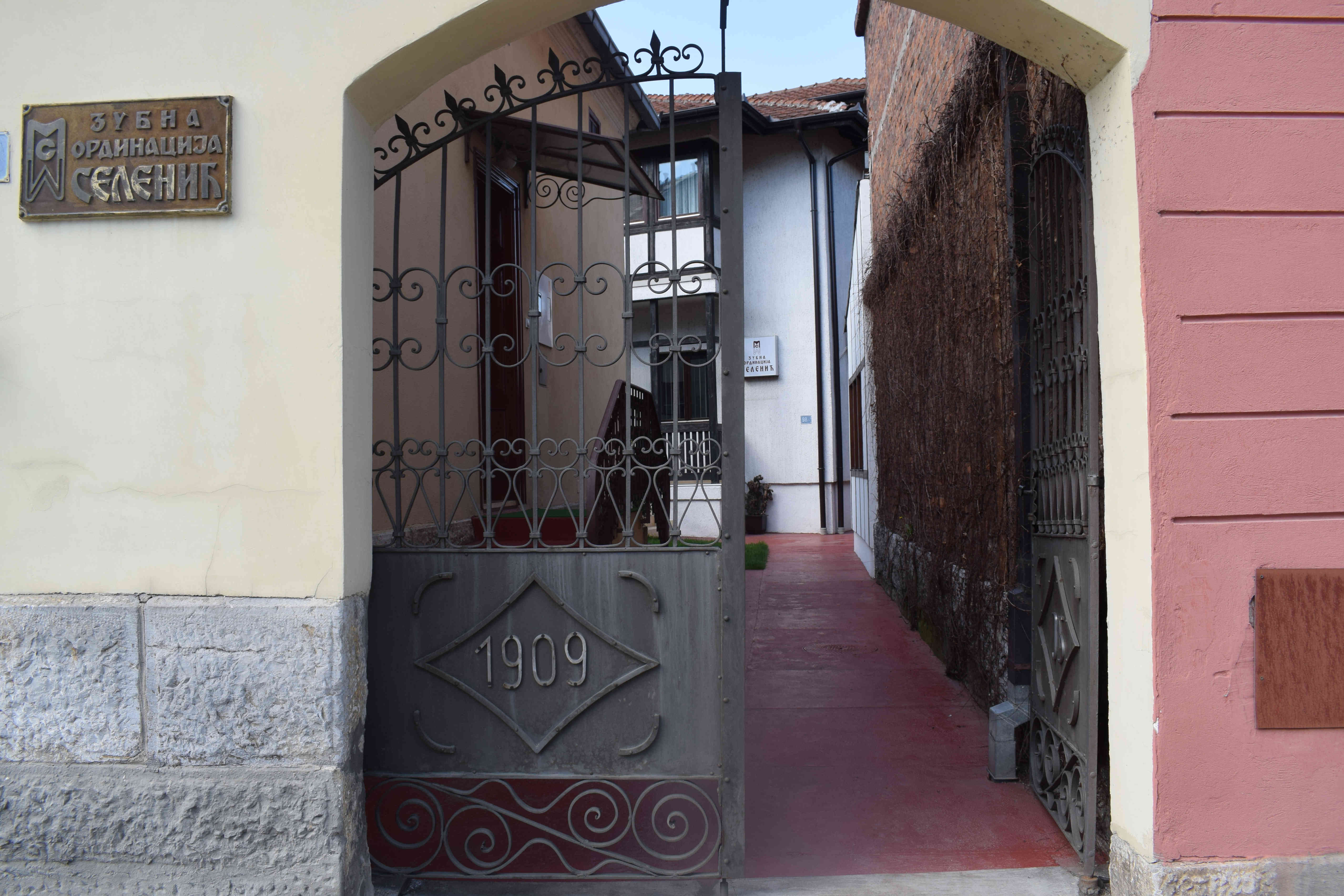 You won’t find any cheap plastic white IKEA style doors or windows here.
You won’t find any cheap plastic white IKEA style doors or windows here.
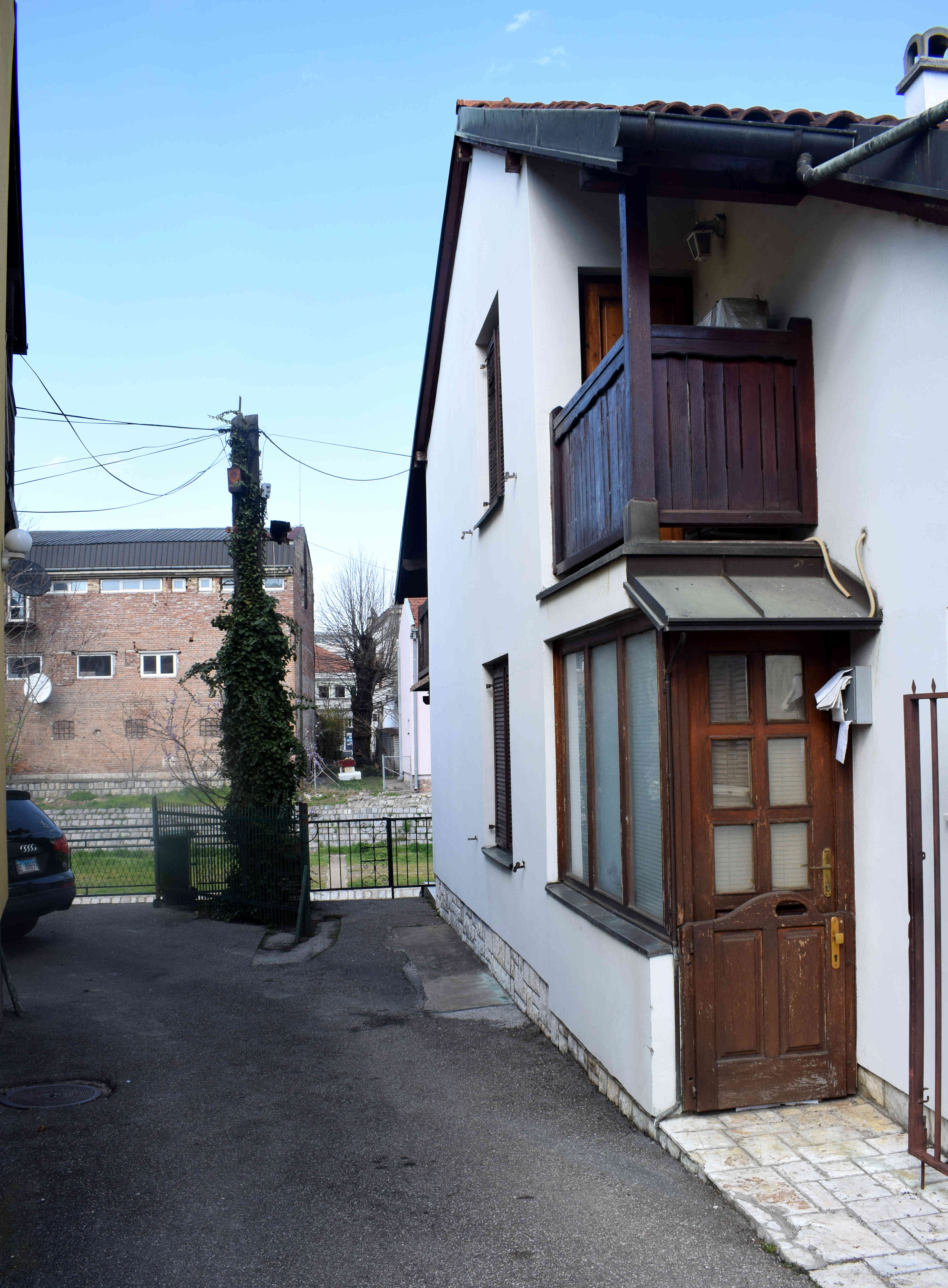 Just look at how beautiful these buildings are when they retain their historic doors and windows and rooftops.
Just look at how beautiful these buildings are when they retain their historic doors and windows and rooftops.
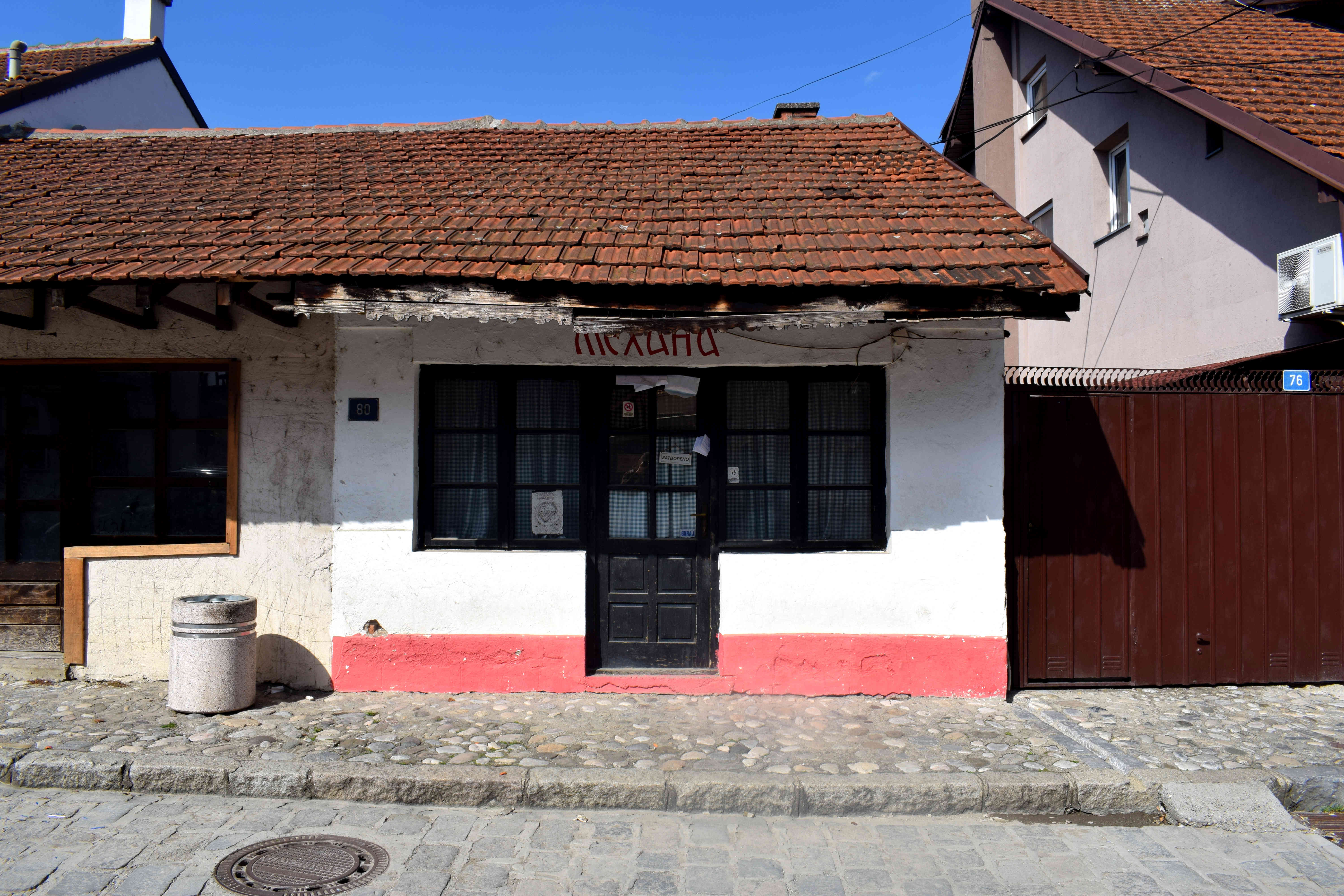
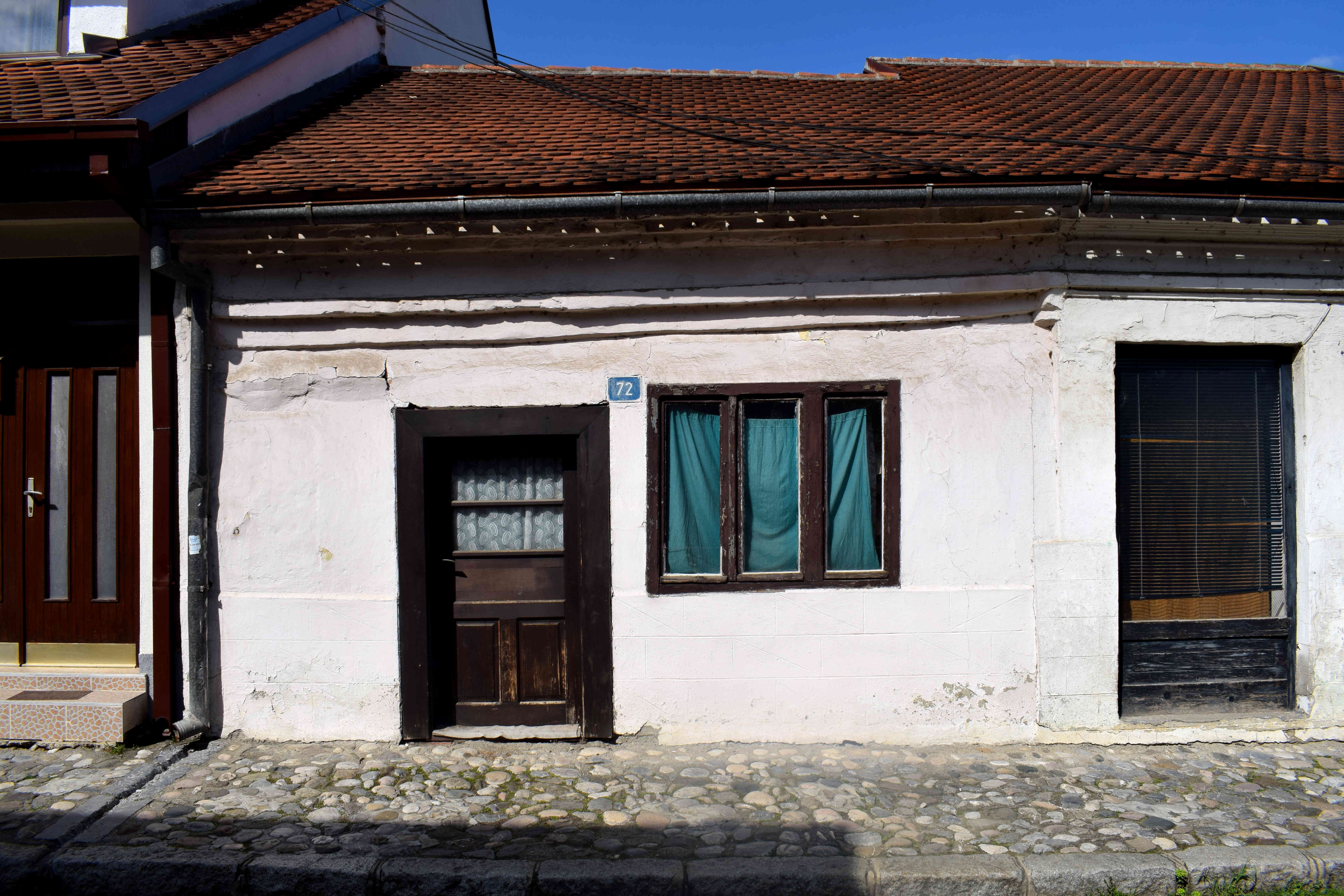
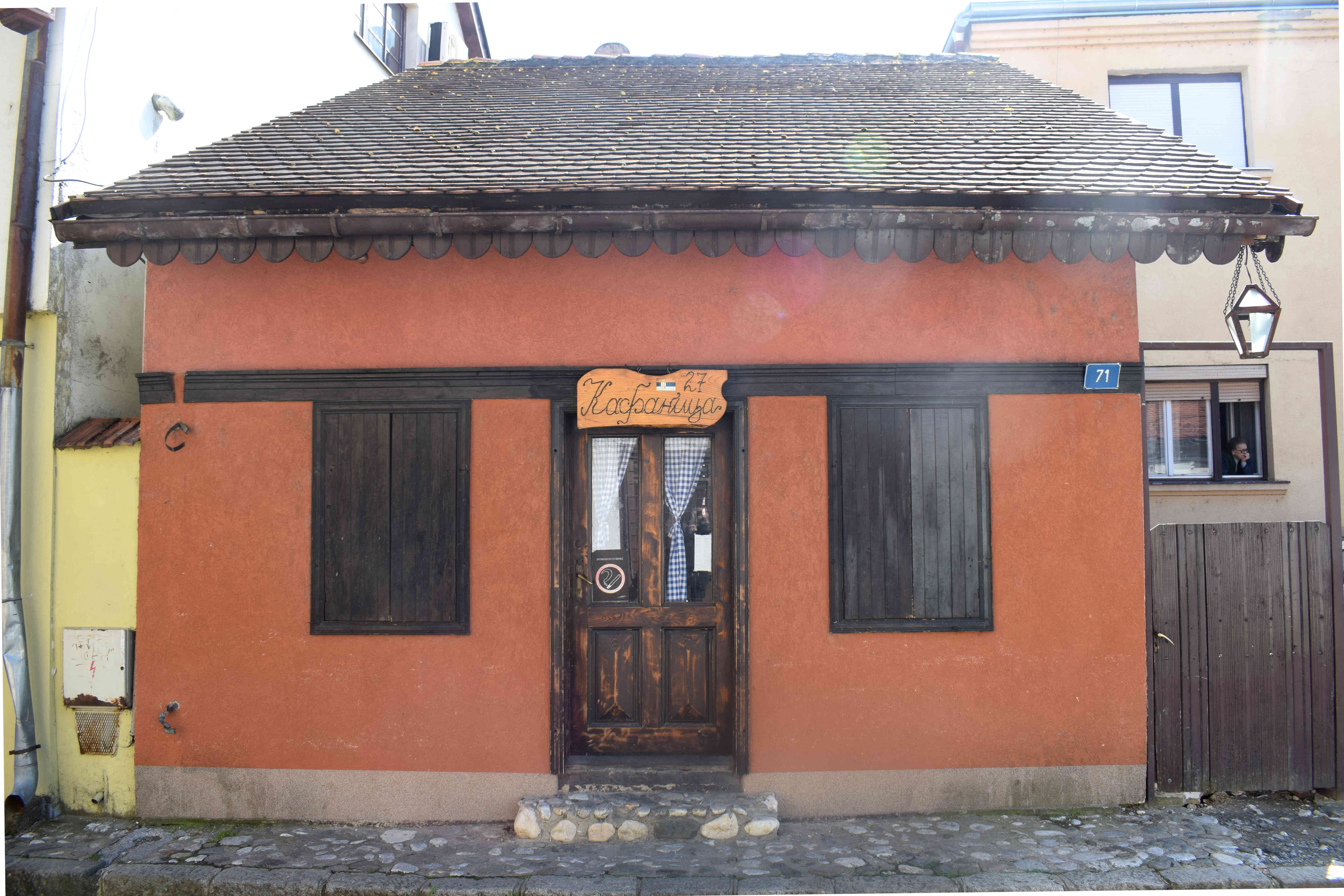 And while some buildings were in bad shape, it was especially satisfying to walk past knowing that it was protected by the city and no developer could buy it, tear it down, erect something new and erase the building from the face of the city forever.
And while some buildings were in bad shape, it was especially satisfying to walk past knowing that it was protected by the city and no developer could buy it, tear it down, erect something new and erase the building from the face of the city forever.
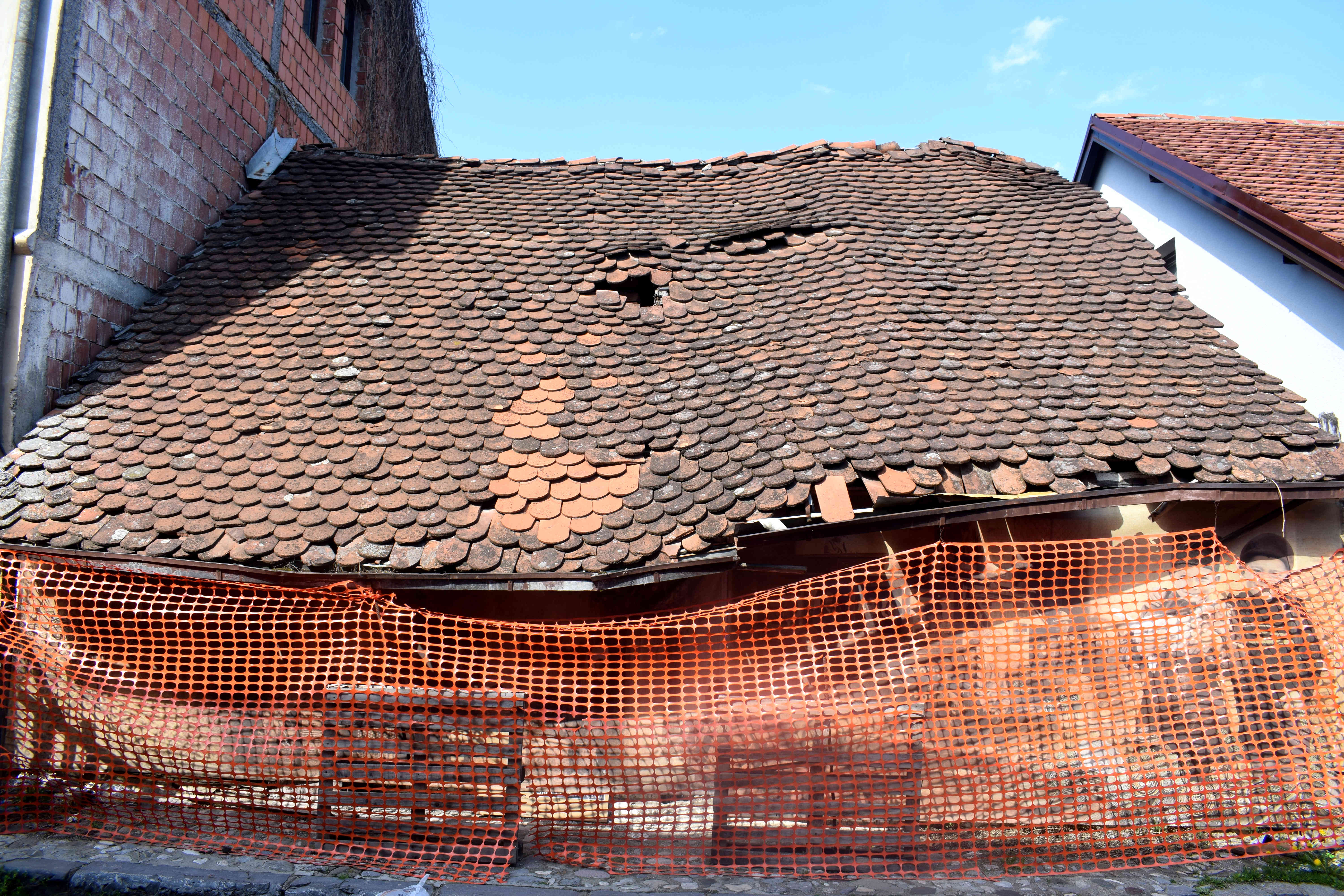 Instead, these tiny houses that have stood proudly on this street for over a century, played host to countless merchants, shopkeepers and café-owners over the years, will continue to stand here, undisturbed and untouched, a living testament to Valjevo’s heritage.
Instead, these tiny houses that have stood proudly on this street for over a century, played host to countless merchants, shopkeepers and café-owners over the years, will continue to stand here, undisturbed and untouched, a living testament to Valjevo’s heritage.
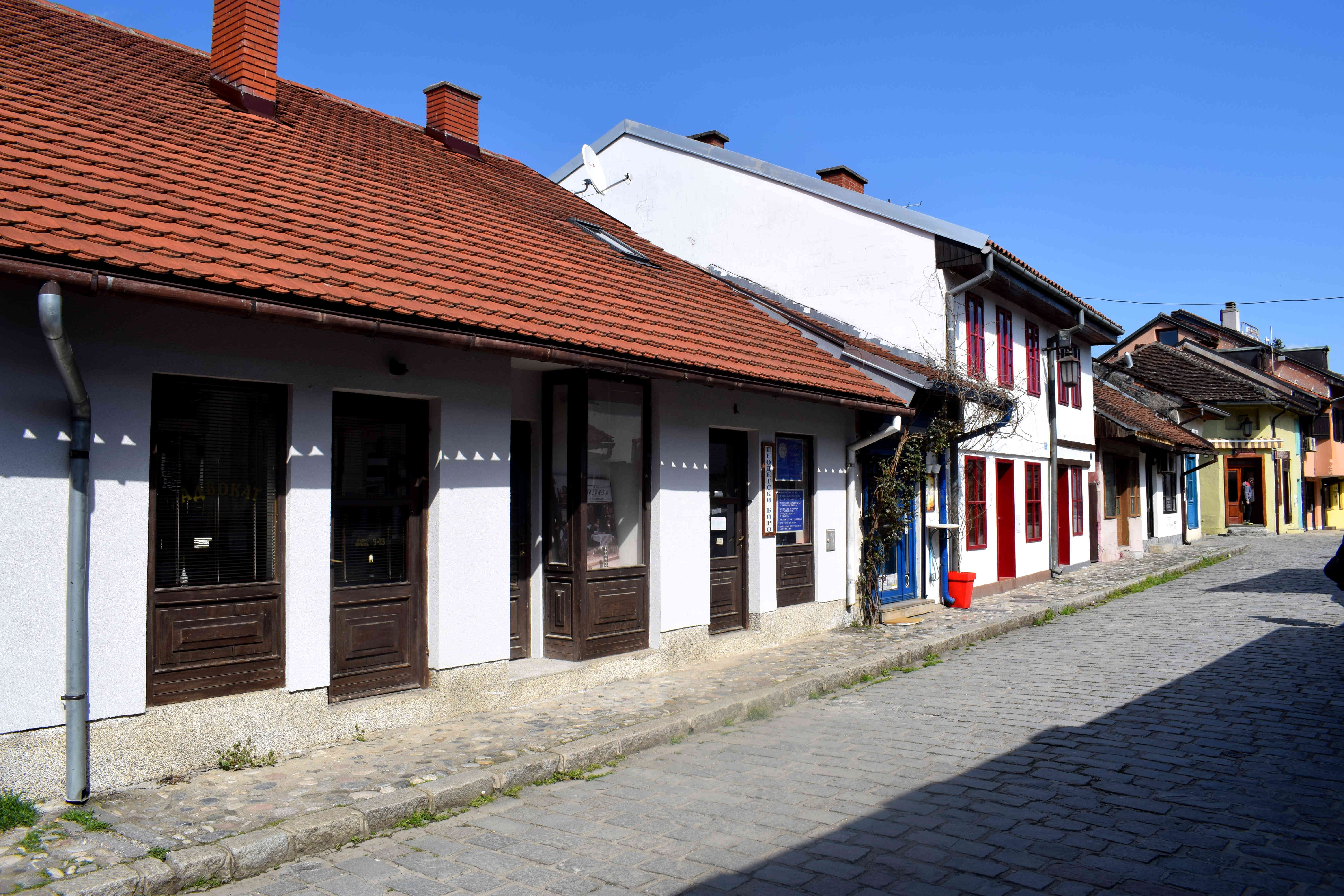 It’s precisely because of Valjevo’s uninterrupted row of historical housing that has made the city’s Tesnjar District a go-to location for the film-industry when they need to set up a historic movie set.
It’s precisely because of Valjevo’s uninterrupted row of historical housing that has made the city’s Tesnjar District a go-to location for the film-industry when they need to set up a historic movie set.
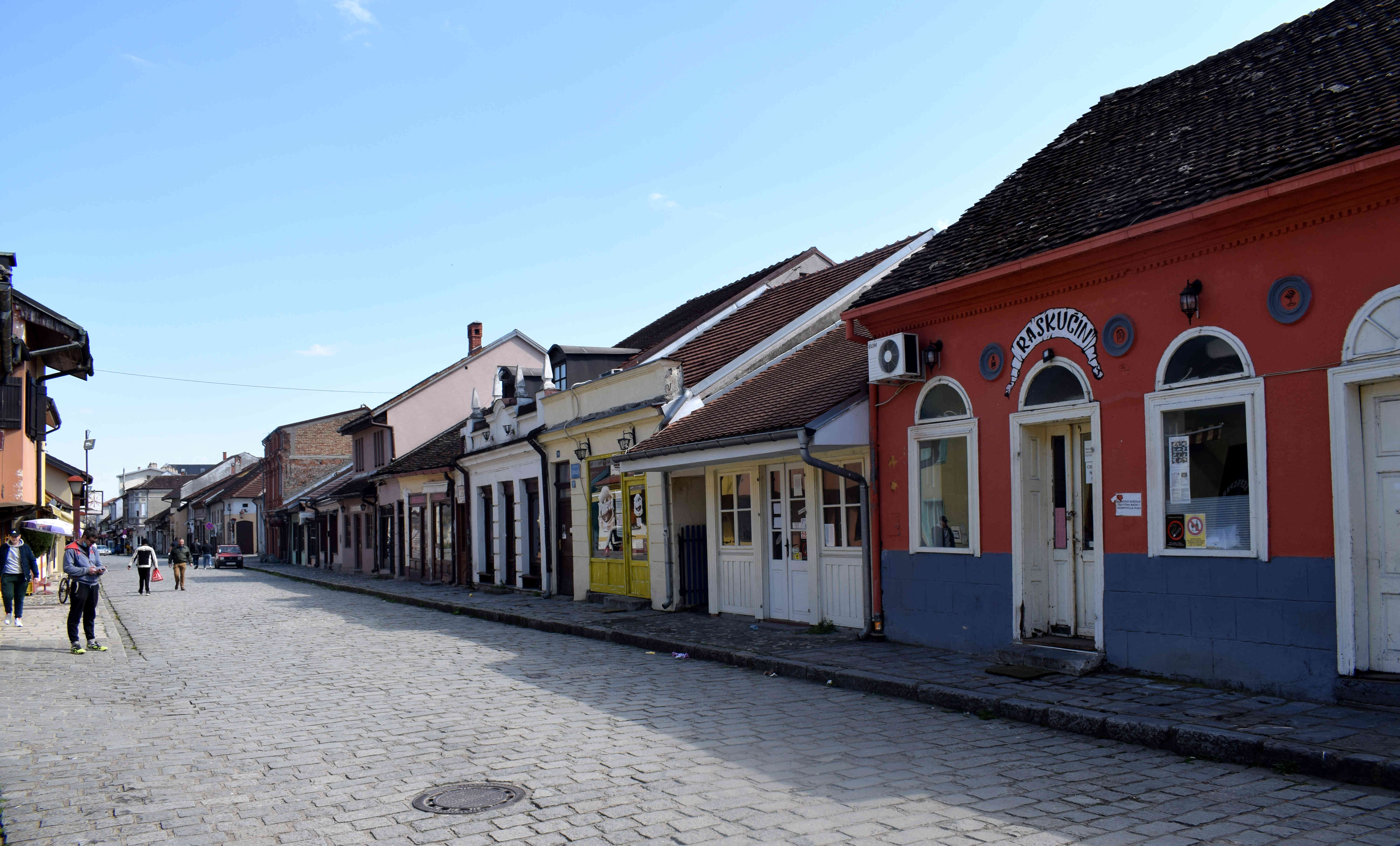 If the city allowed even one modern building to get erected here, the street would lose its character.
If the city allowed even one modern building to get erected here, the street would lose its character.
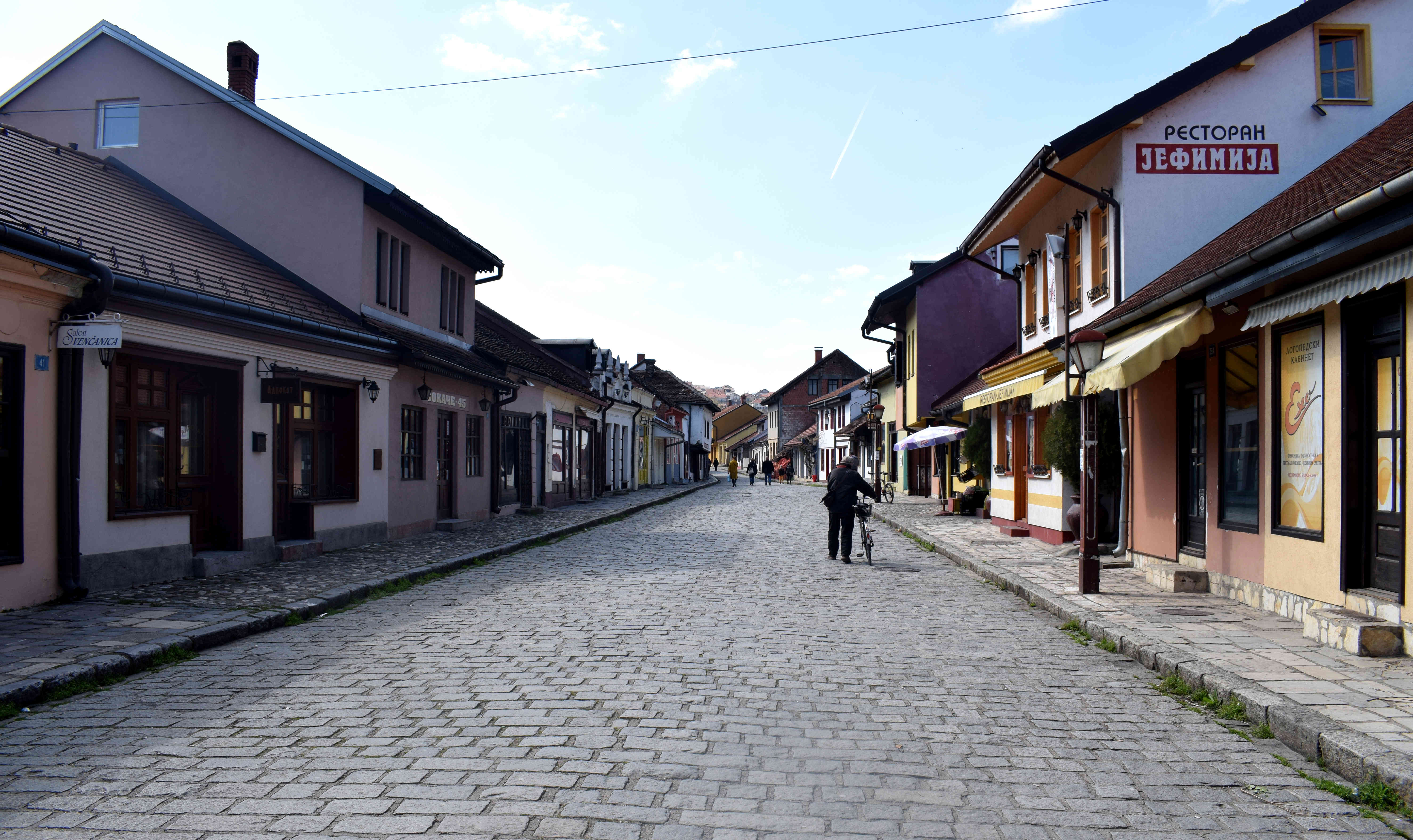 A traditional Serbian home from the early 19th century. You rarely find these anymore in Belgrade and other Serbian cities. Those that are left are fast disappearing.
A traditional Serbian home from the early 19th century. You rarely find these anymore in Belgrade and other Serbian cities. Those that are left are fast disappearing.
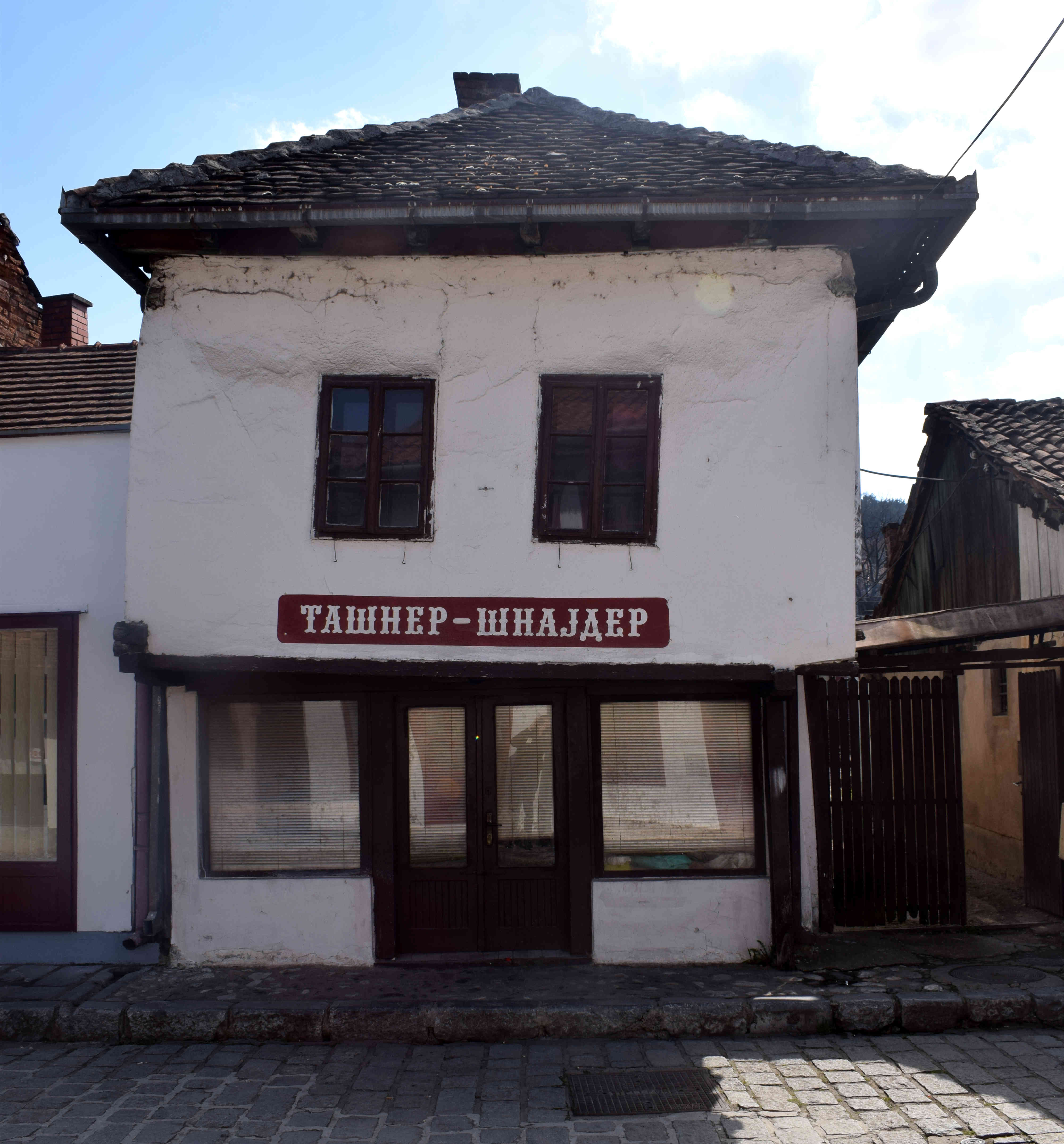 Walking around Tesnjar almost felt like I was walking around a wild western town in the USA back in the 1800s.
Walking around Tesnjar almost felt like I was walking around a wild western town in the USA back in the 1800s.
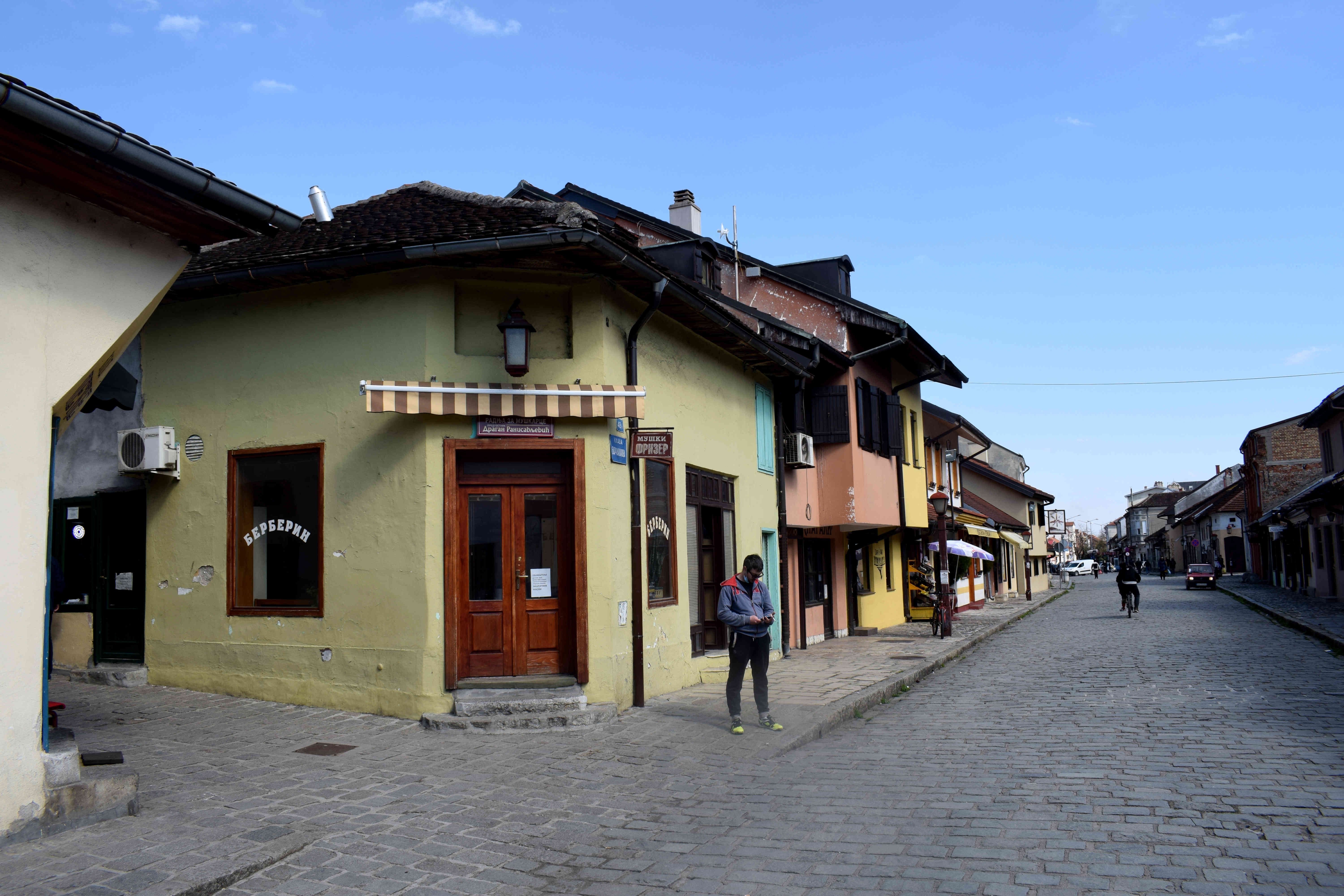 I’ve found few streets in Serbia that are as authentic as Valjevo’s Tesnjar District. The only two that come close in Belgrade are Skadarlija and Kosancicev Venac, but even there you don’t have as strict of a design code which bans advertisements and insists on doors and windows retaining a historical design.
I’ve found few streets in Serbia that are as authentic as Valjevo’s Tesnjar District. The only two that come close in Belgrade are Skadarlija and Kosancicev Venac, but even there you don’t have as strict of a design code which bans advertisements and insists on doors and windows retaining a historical design.
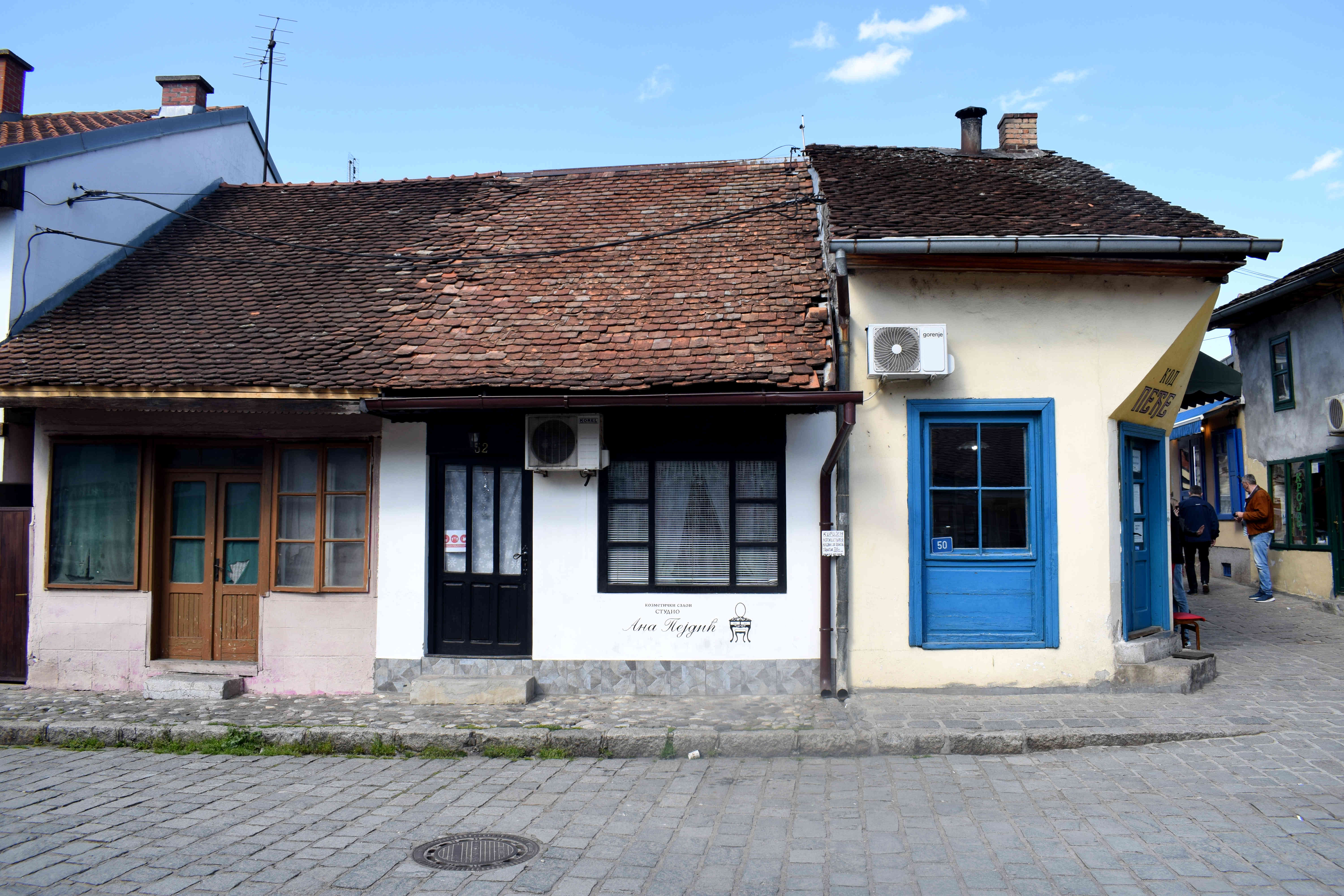 Incredible. Valjevo is an example of what all Serbian cities should do with their centers.
Incredible. Valjevo is an example of what all Serbian cities should do with their centers.
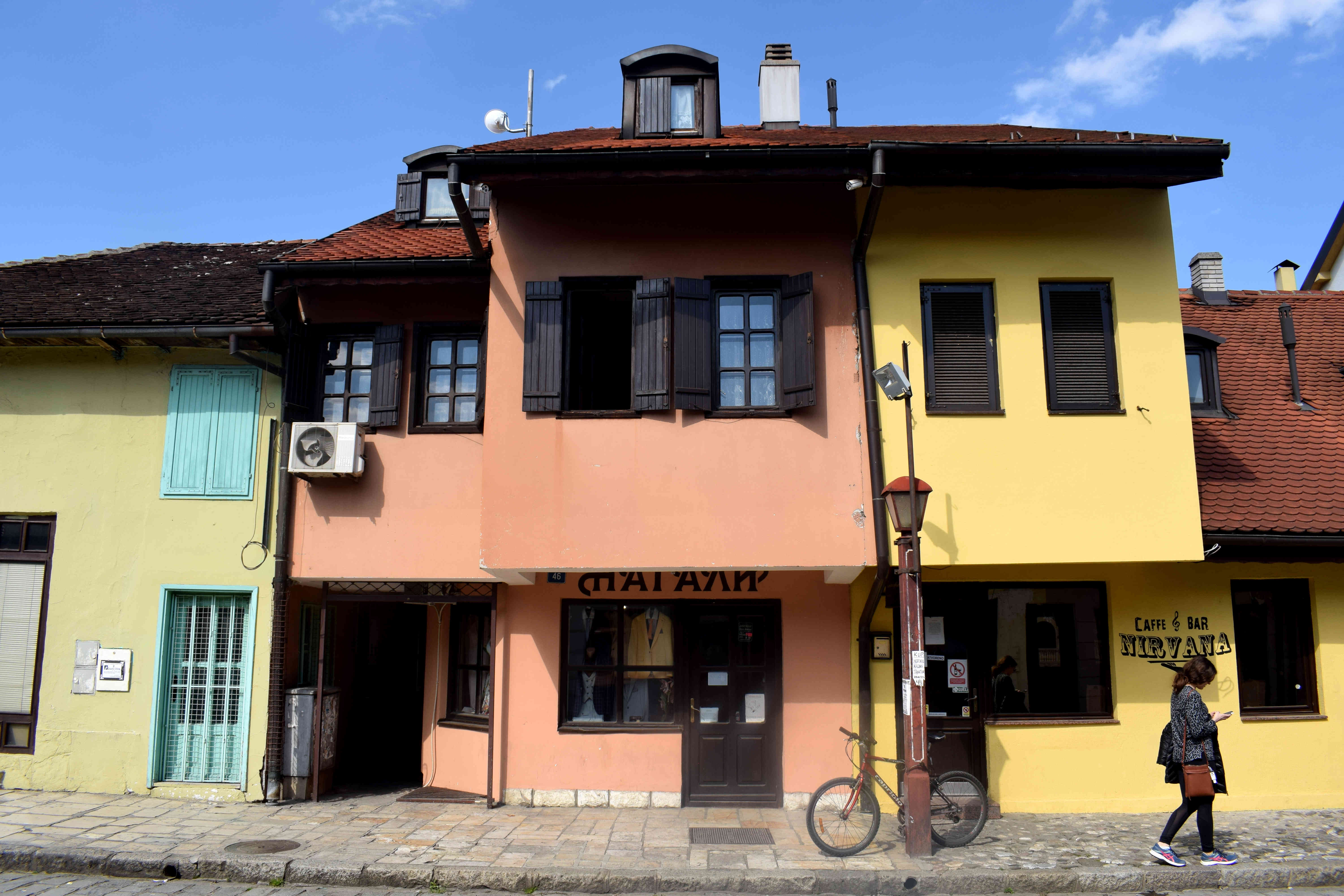
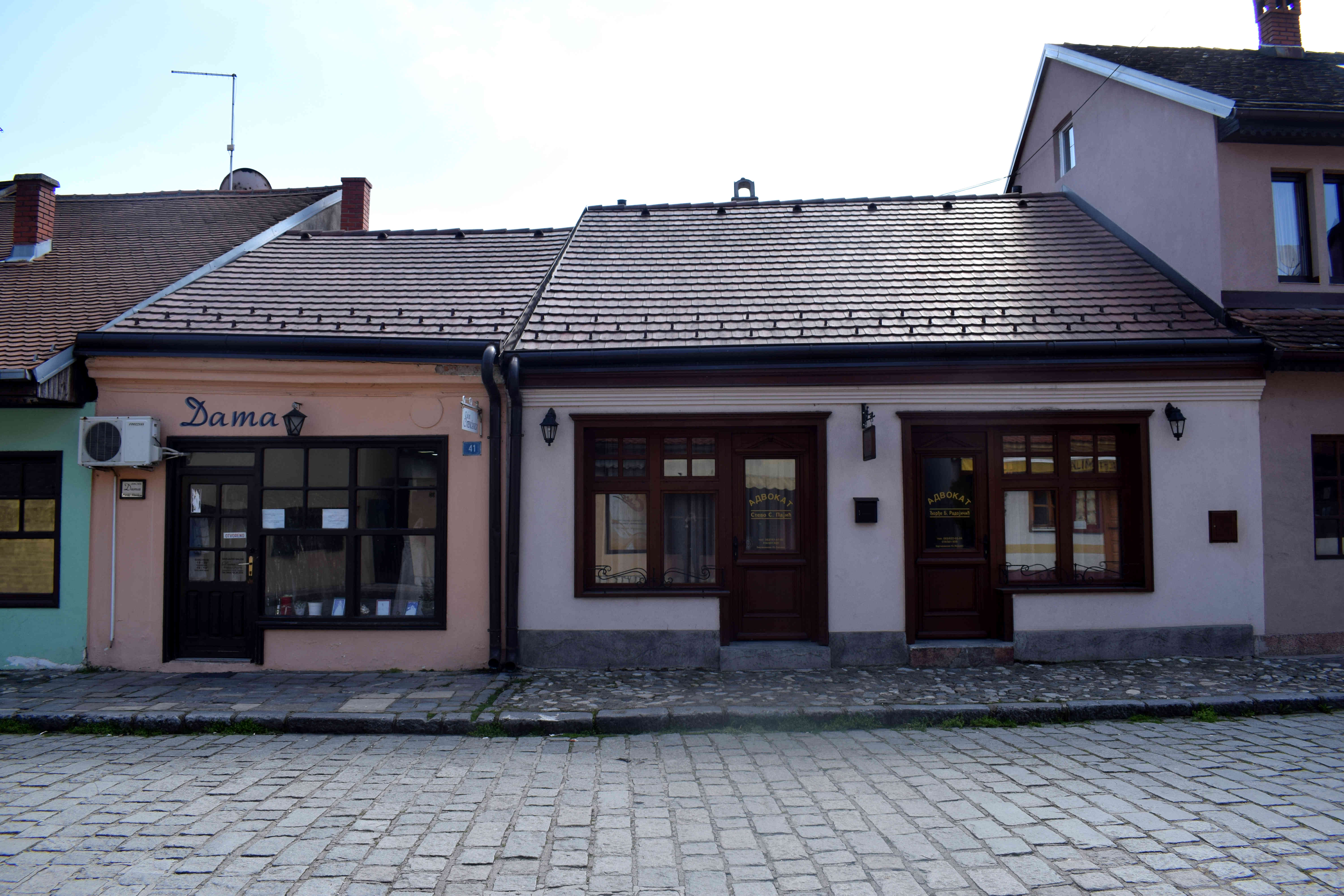
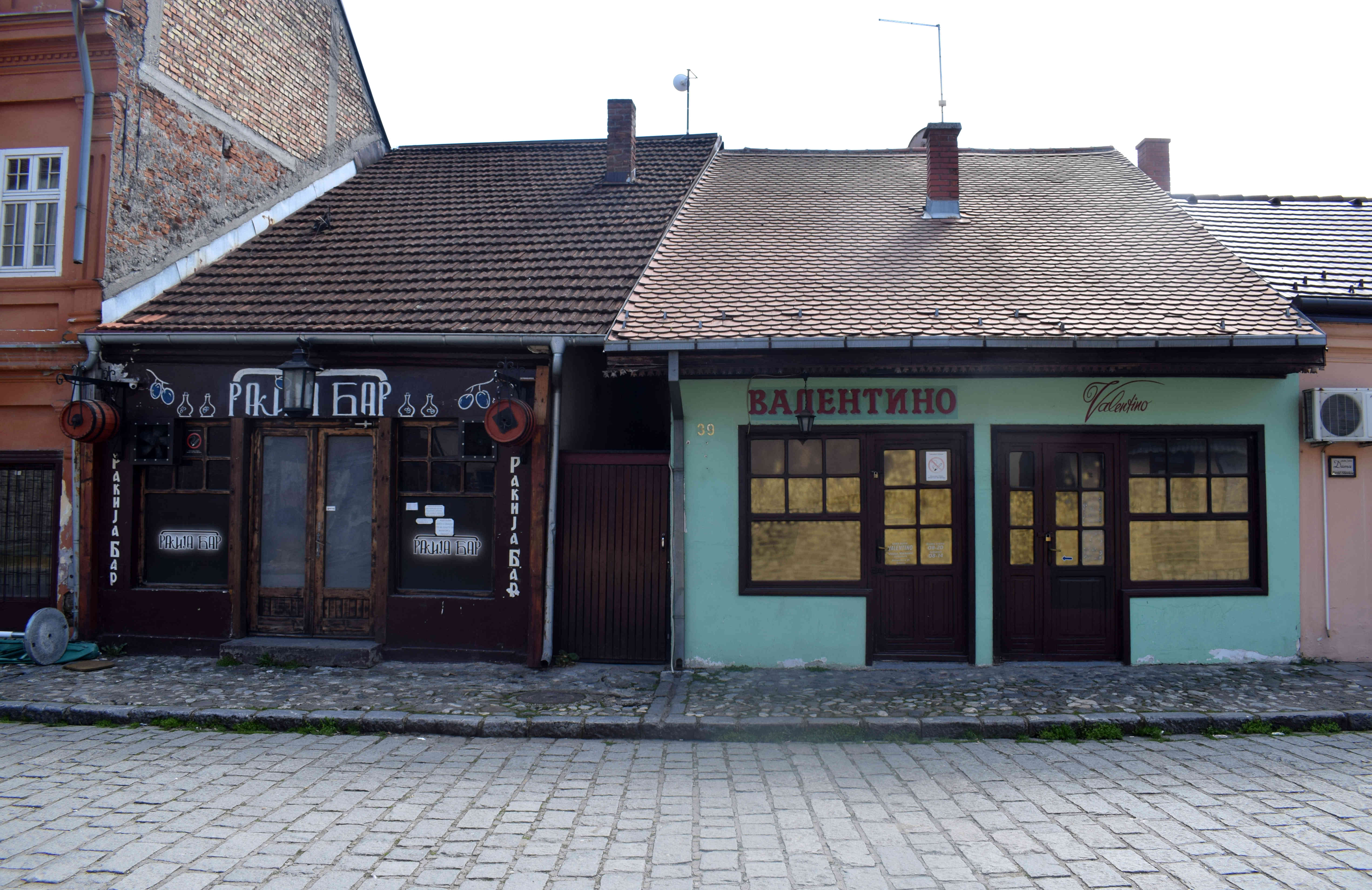
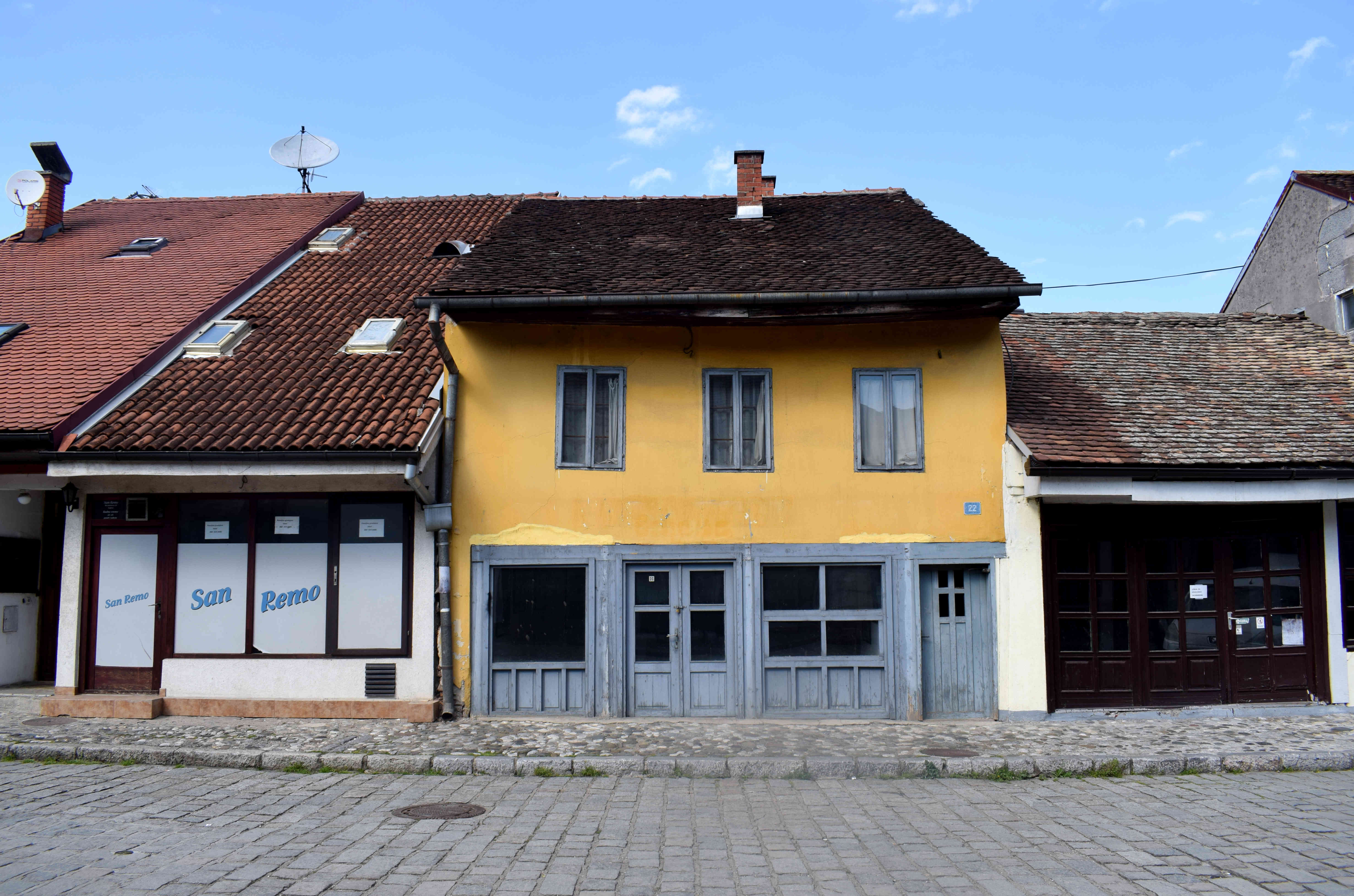
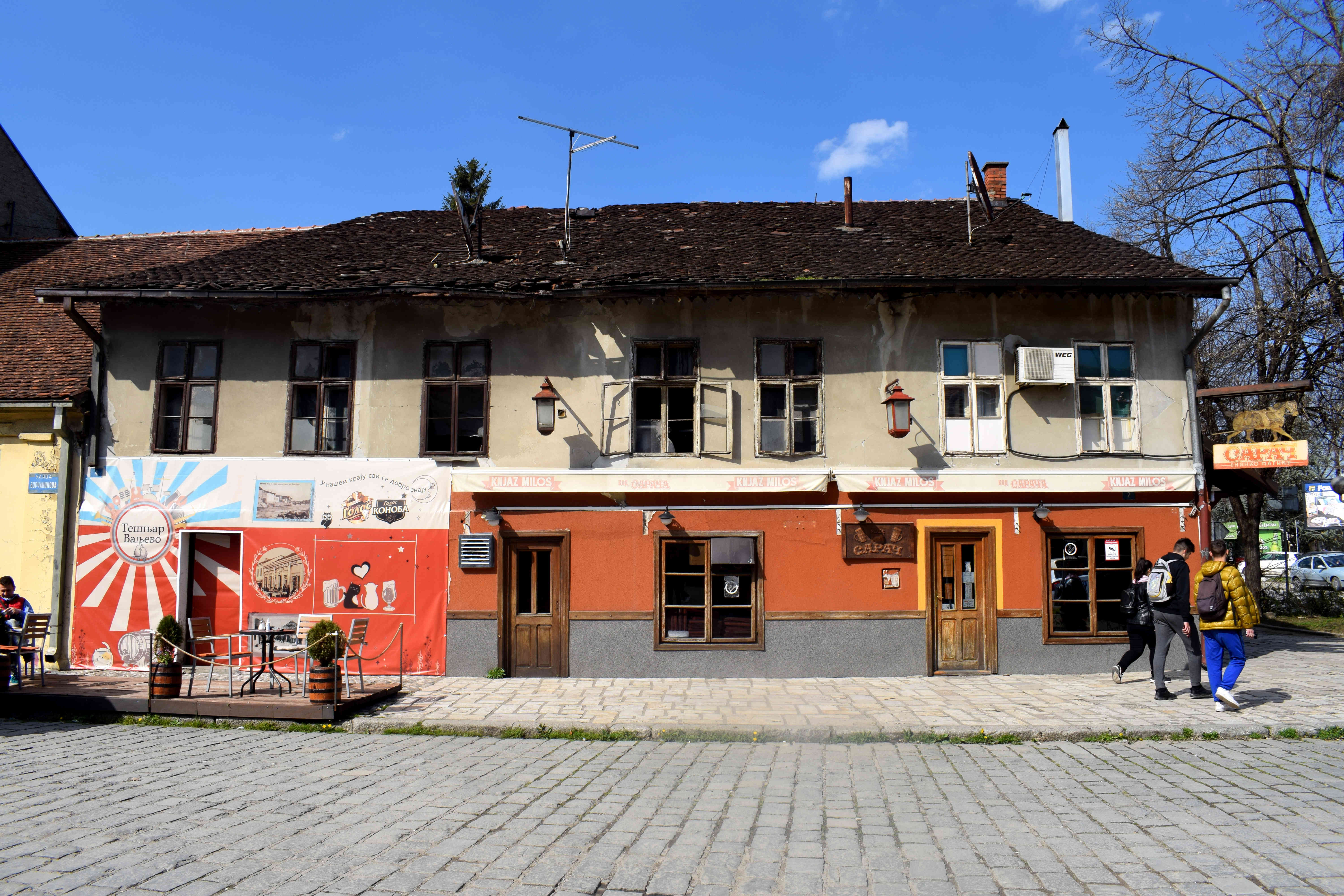 The street were just on was Bircaninova street and it forms the core of the Tesnjar District. On the neighboring side you’ll find another old, cobble-stoned street and a nice café overlooking the river.
The street were just on was Bircaninova street and it forms the core of the Tesnjar District. On the neighboring side you’ll find another old, cobble-stoned street and a nice café overlooking the river.
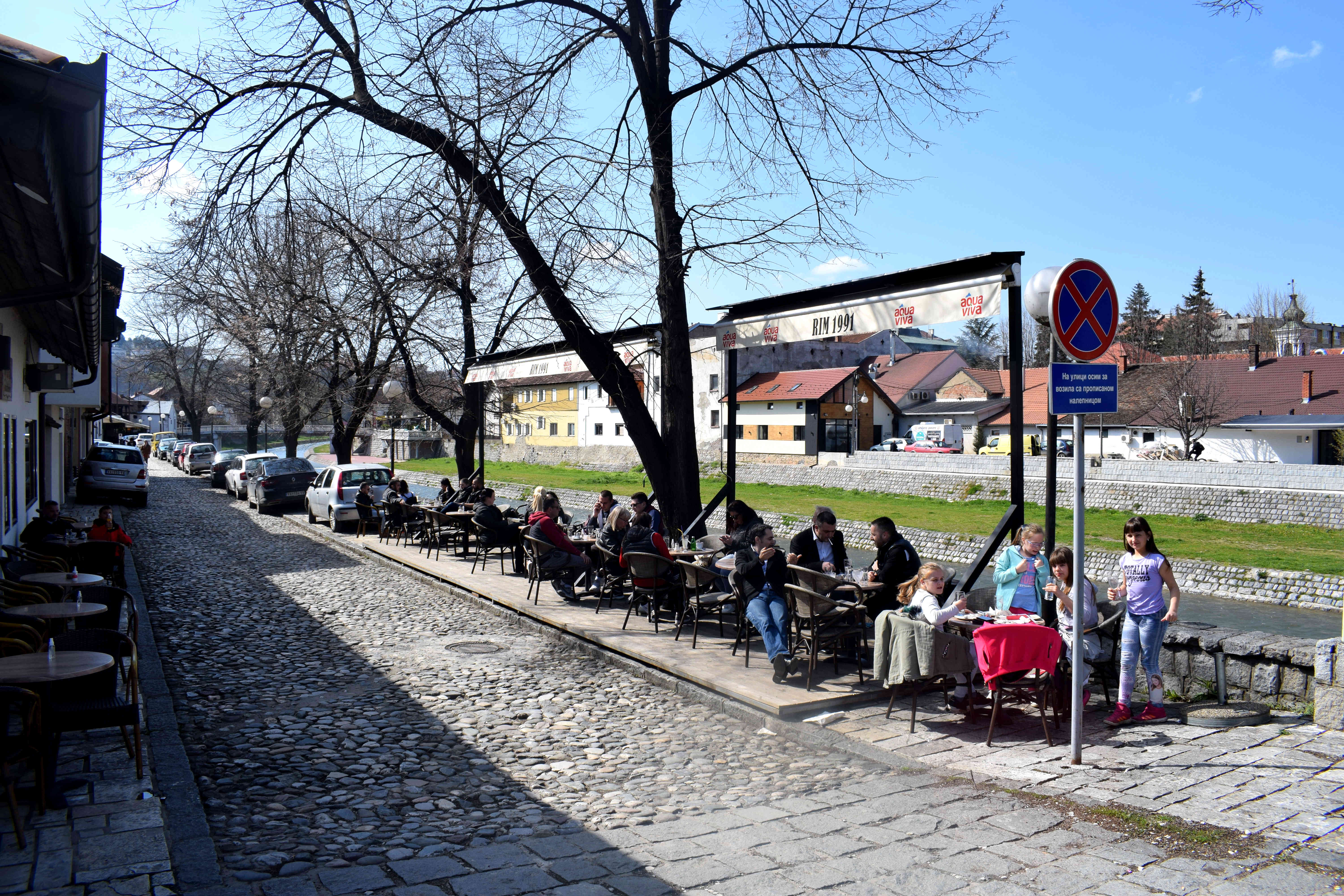 Unfortunately most of the street is taken up for parking. A good example of how cars ruin cities. The city should free up this space and ban cars from parking here. Then Valjevo would get an another historic, cobble-stoned street along the river.
Unfortunately most of the street is taken up for parking. A good example of how cars ruin cities. The city should free up this space and ban cars from parking here. Then Valjevo would get an another historic, cobble-stoned street along the river.
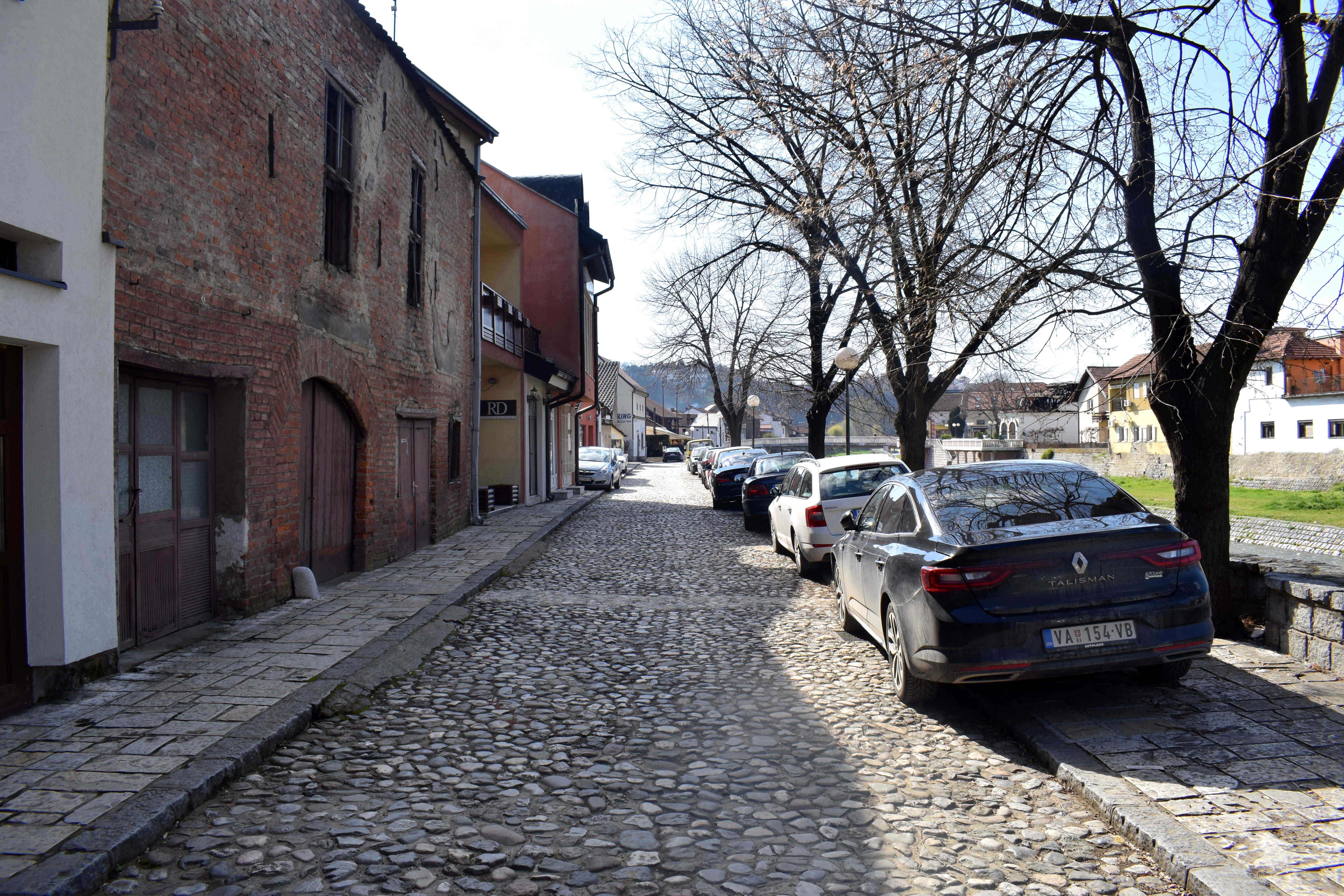 The river that runs through the center of Valjevo is the Kolubara River.
The river that runs through the center of Valjevo is the Kolubara River.
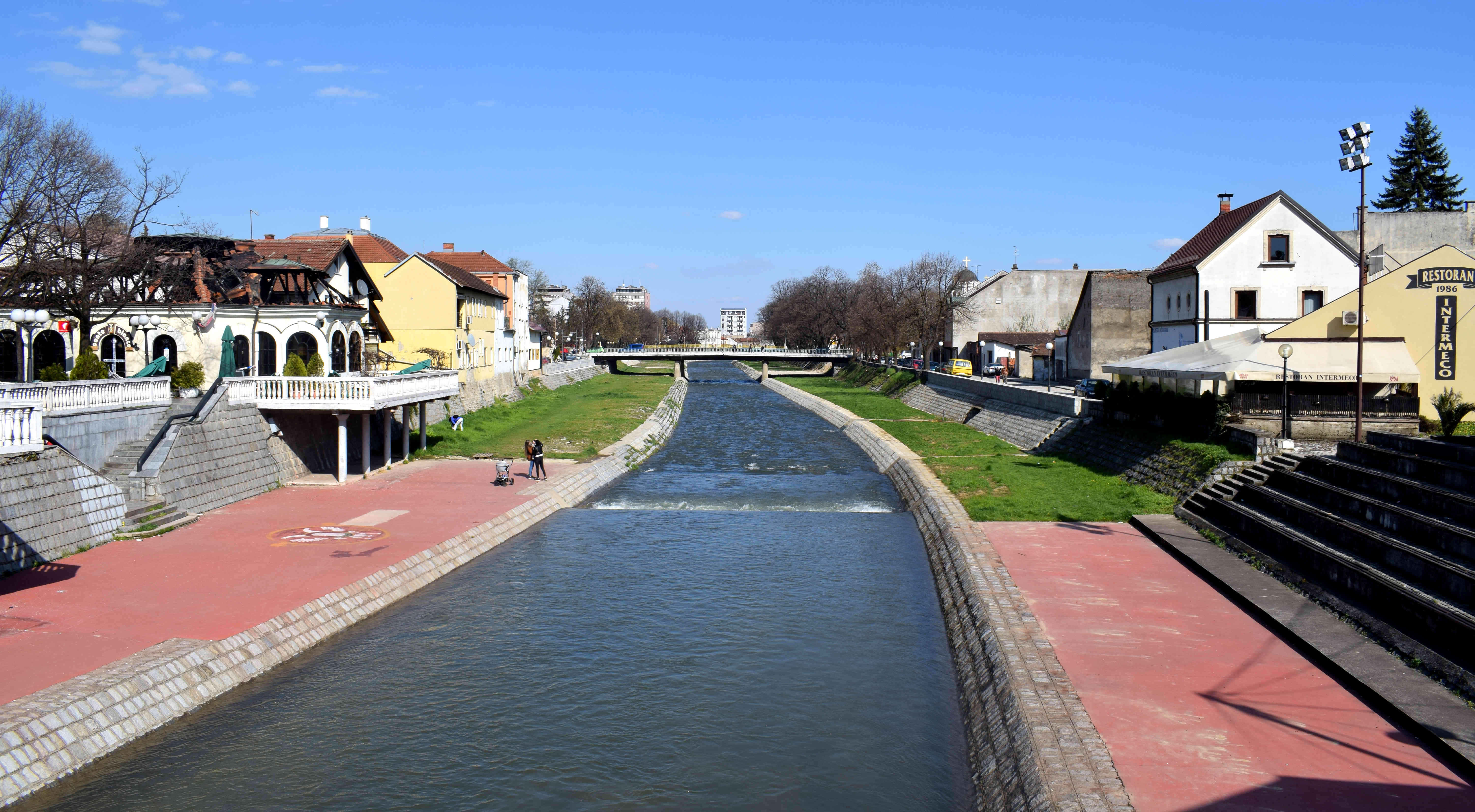 The Kolubara River begins just outside of Valjevo where the smaller Obnica and Jablanica rivers meet. It then flows northward until it reaches the city of Obrenovac outside of Belgrade and empties out into the Sava River.
The Kolubara River begins just outside of Valjevo where the smaller Obnica and Jablanica rivers meet. It then flows northward until it reaches the city of Obrenovac outside of Belgrade and empties out into the Sava River.
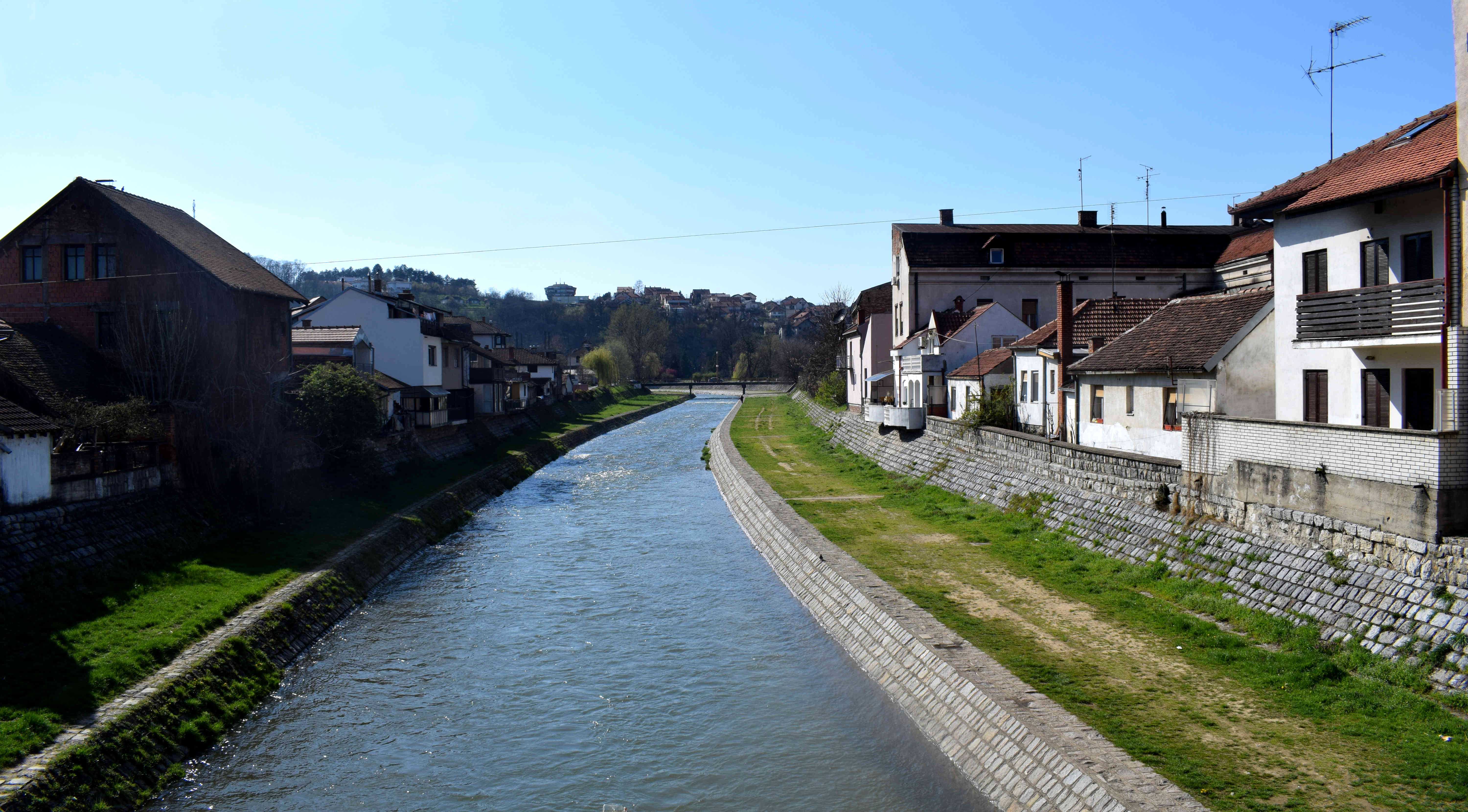 While the Kolubara River may look small, it has a rich history. In WWI it was the sight of a key battle between the smaller, undermanned Serbian army and the much larger Austro-Hungarian forces that had invaded Serbia in the summer and fall of 1914. In December of that year, the Austro-Hungarian army captured the cities of Uzice and Valjevo and forced the Serbian army to flee from the Serbian capital. The Austro-Hungarian troops entered victoriously into Belgrade and celebrations were already underway in Vienna that the enemy had been defeated.
While the Kolubara River may look small, it has a rich history. In WWI it was the sight of a key battle between the smaller, undermanned Serbian army and the much larger Austro-Hungarian forces that had invaded Serbia in the summer and fall of 1914. In December of that year, the Austro-Hungarian army captured the cities of Uzice and Valjevo and forced the Serbian army to flee from the Serbian capital. The Austro-Hungarian troops entered victoriously into Belgrade and celebrations were already underway in Vienna that the enemy had been defeated.
However, Serbian forces under the command of Serbian Field Marshal Radomir Putnik had not given up. Recognizing that the Austro-Hungarian lines were over-extended, they launched a counterattack along the Kolubara that eventually forced the Austro-Hungarian army out of Serbia completely and to flee back into Austria-Hungary. The Battle of Kolubara was one of the first allied victories in World War One.
Despite its war-ridden past, today the Kolubara River is a place you can come to find peace and relax. Cafes are sprinkled along both sides of its banks.
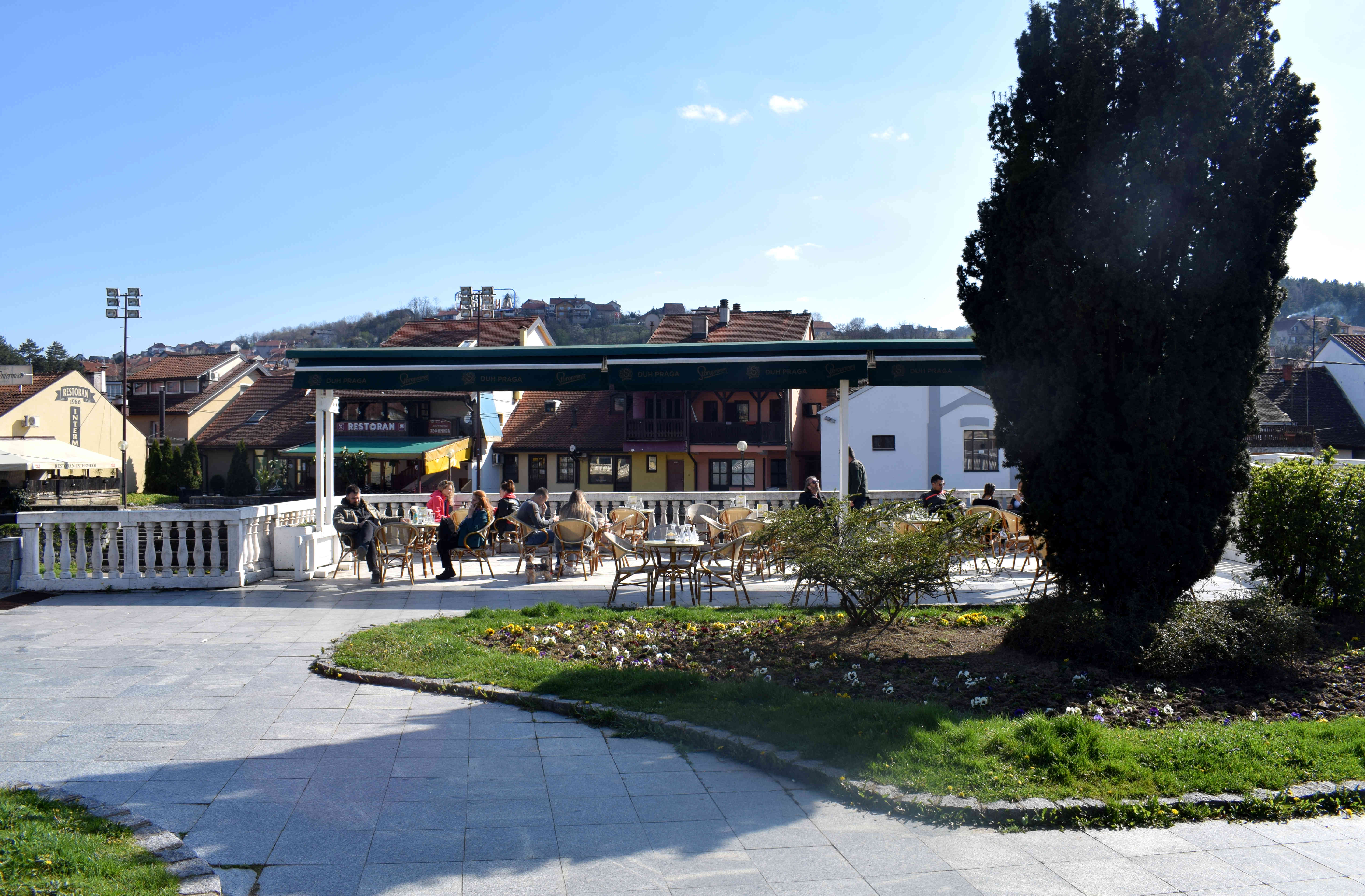 On the other side of the Kolubara River you have another pedestrianized section of Valjevo where the buildings are more European.
On the other side of the Kolubara River you have another pedestrianized section of Valjevo where the buildings are more European.
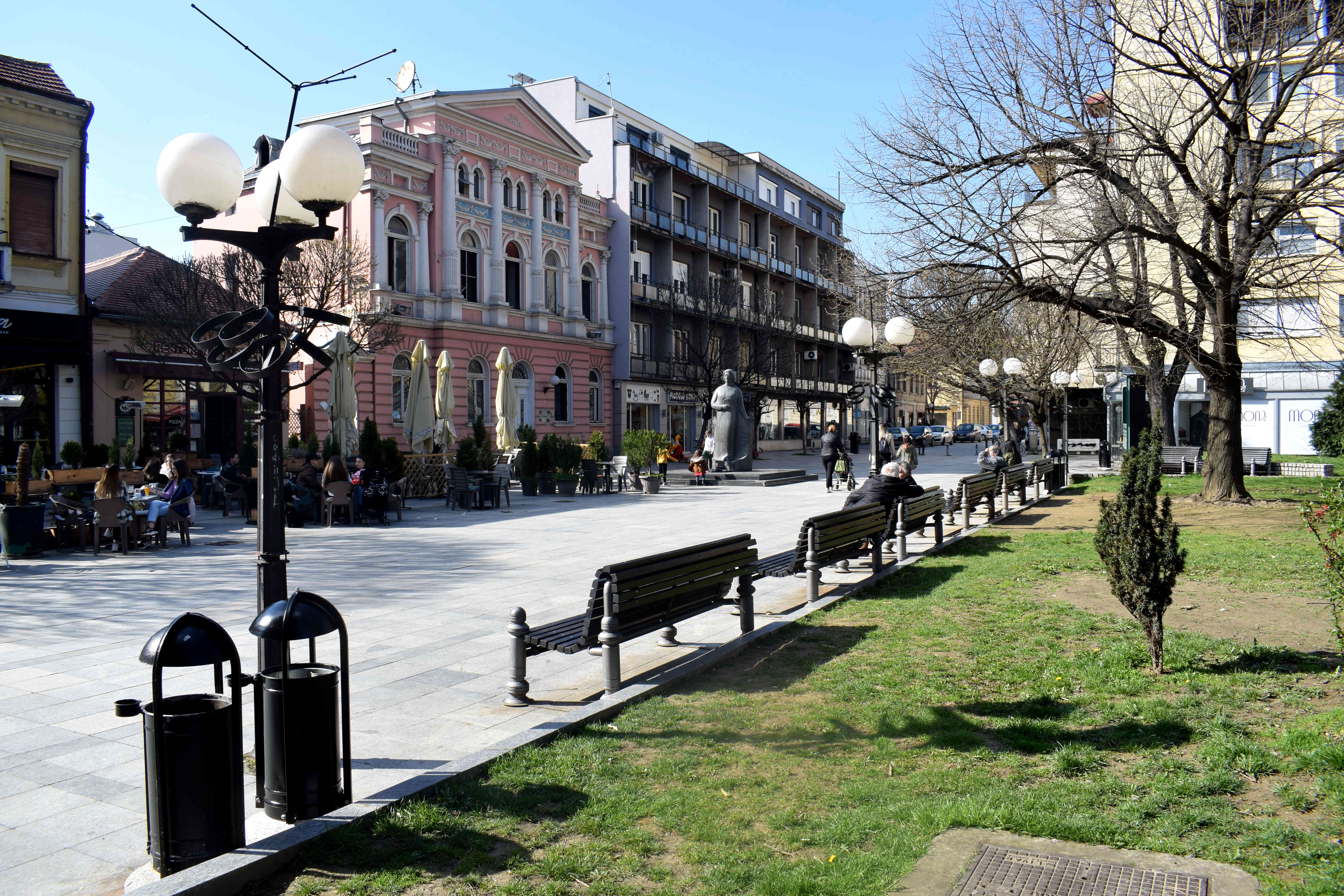 You can see the hills that surround Valjevo in the background.
You can see the hills that surround Valjevo in the background.
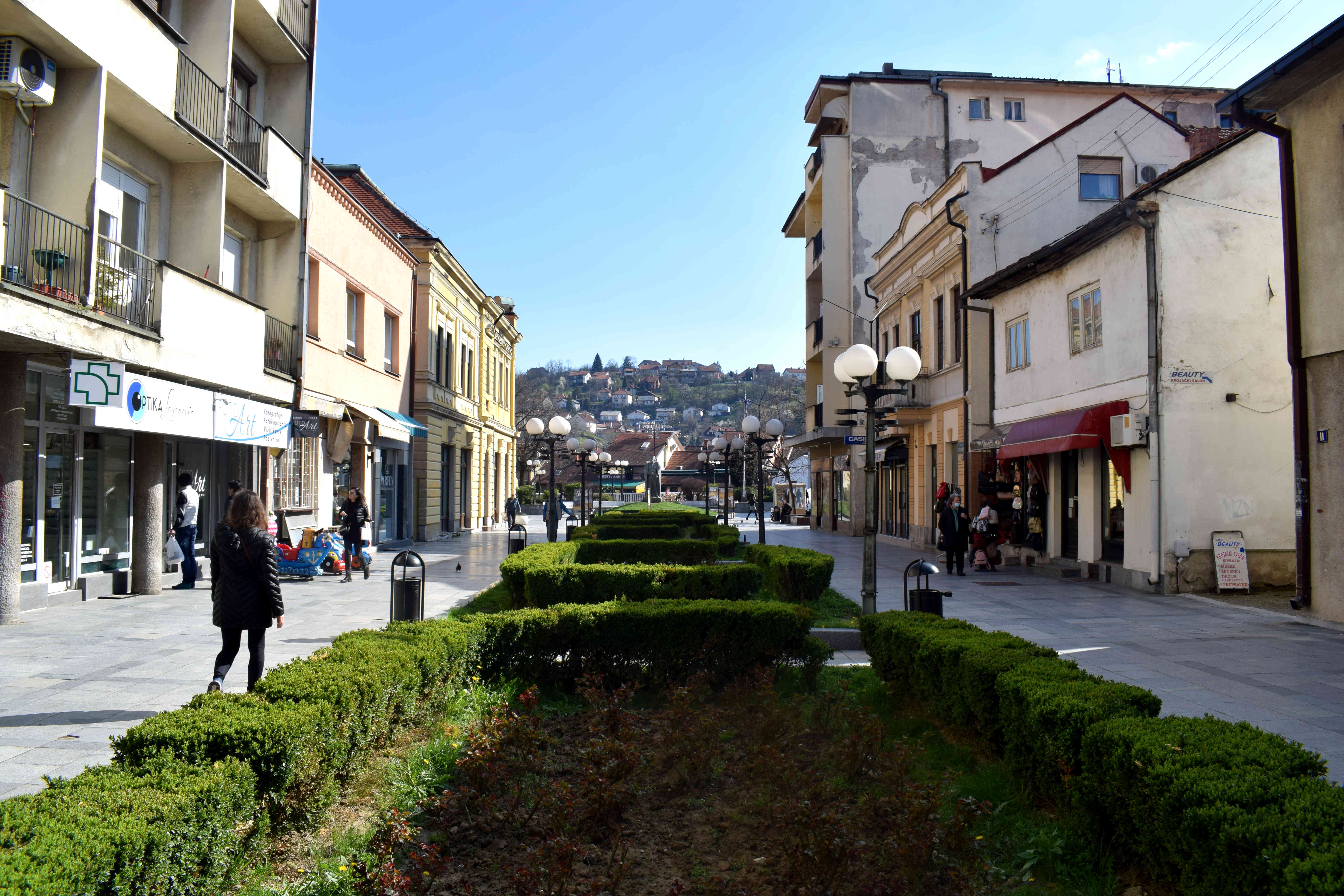 Valjevo’s other major pedestrianized street is Knez Milos Sreet. Here the businesses cater more toward shopping.
Valjevo’s other major pedestrianized street is Knez Milos Sreet. Here the businesses cater more toward shopping.
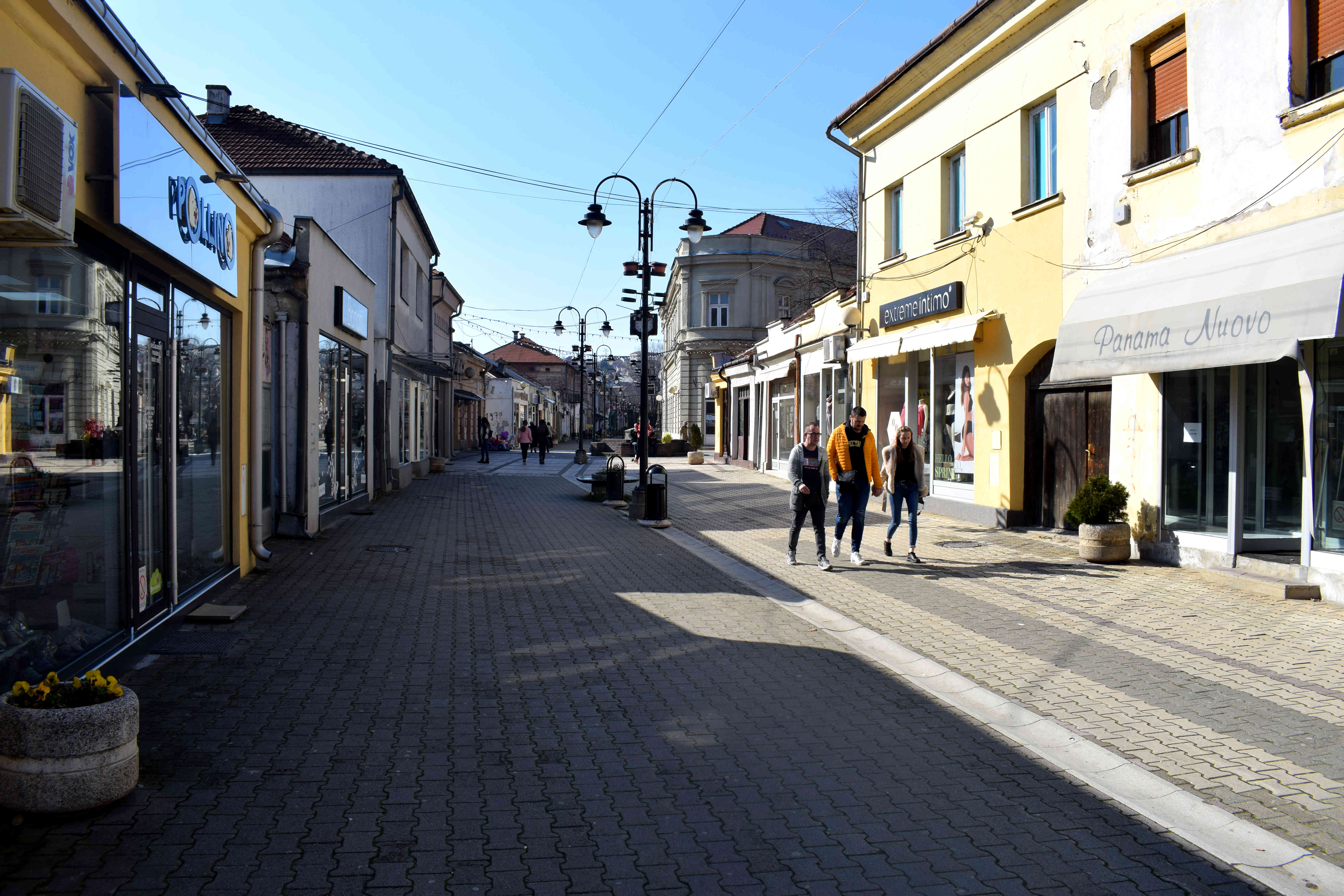 Of course the occasional café.
Of course the occasional café.
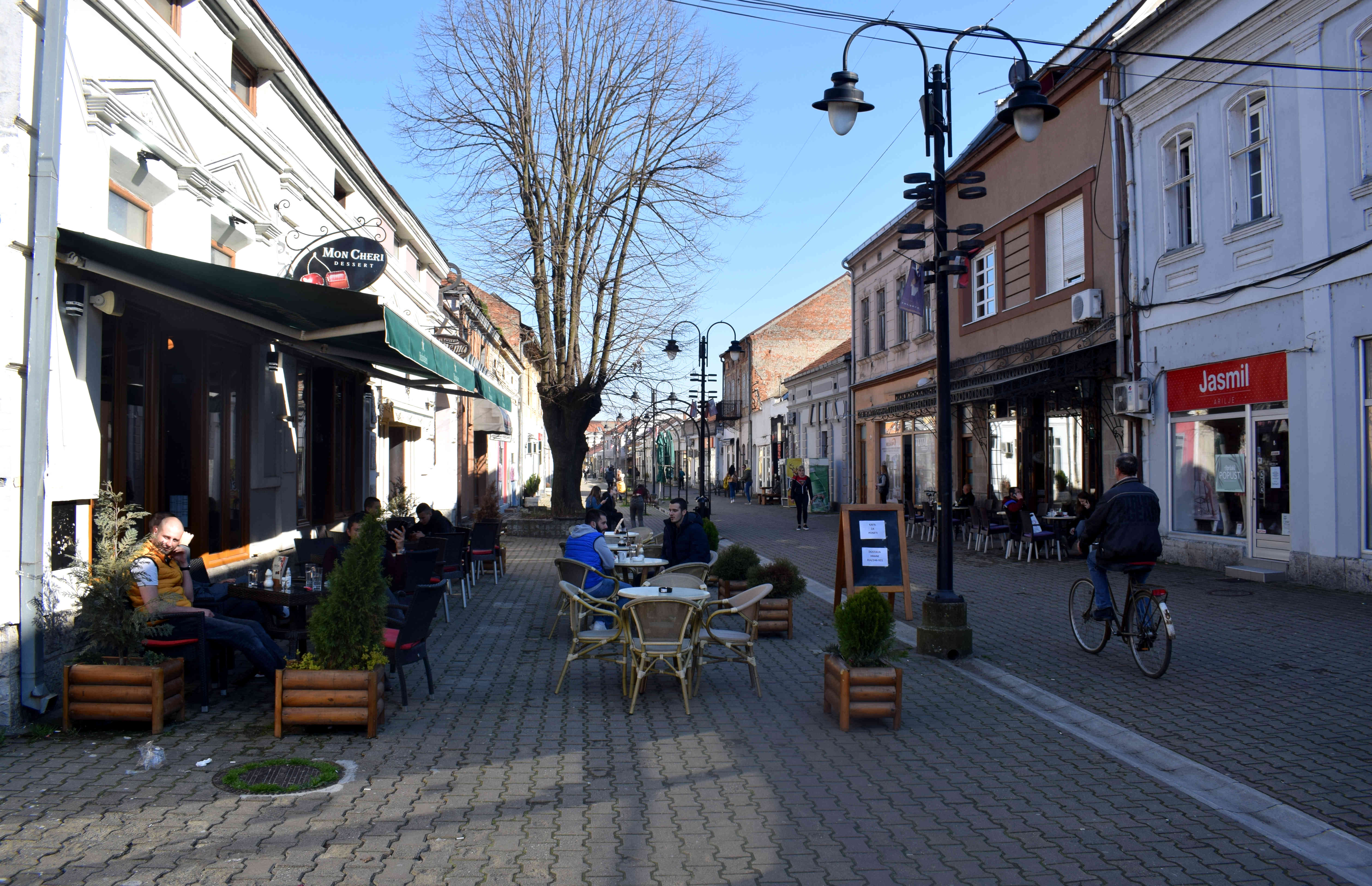 In the center of the Knez Milos street there is an impressive drinking fountain with a large clock hovering above giving the local time.
In the center of the Knez Milos street there is an impressive drinking fountain with a large clock hovering above giving the local time.
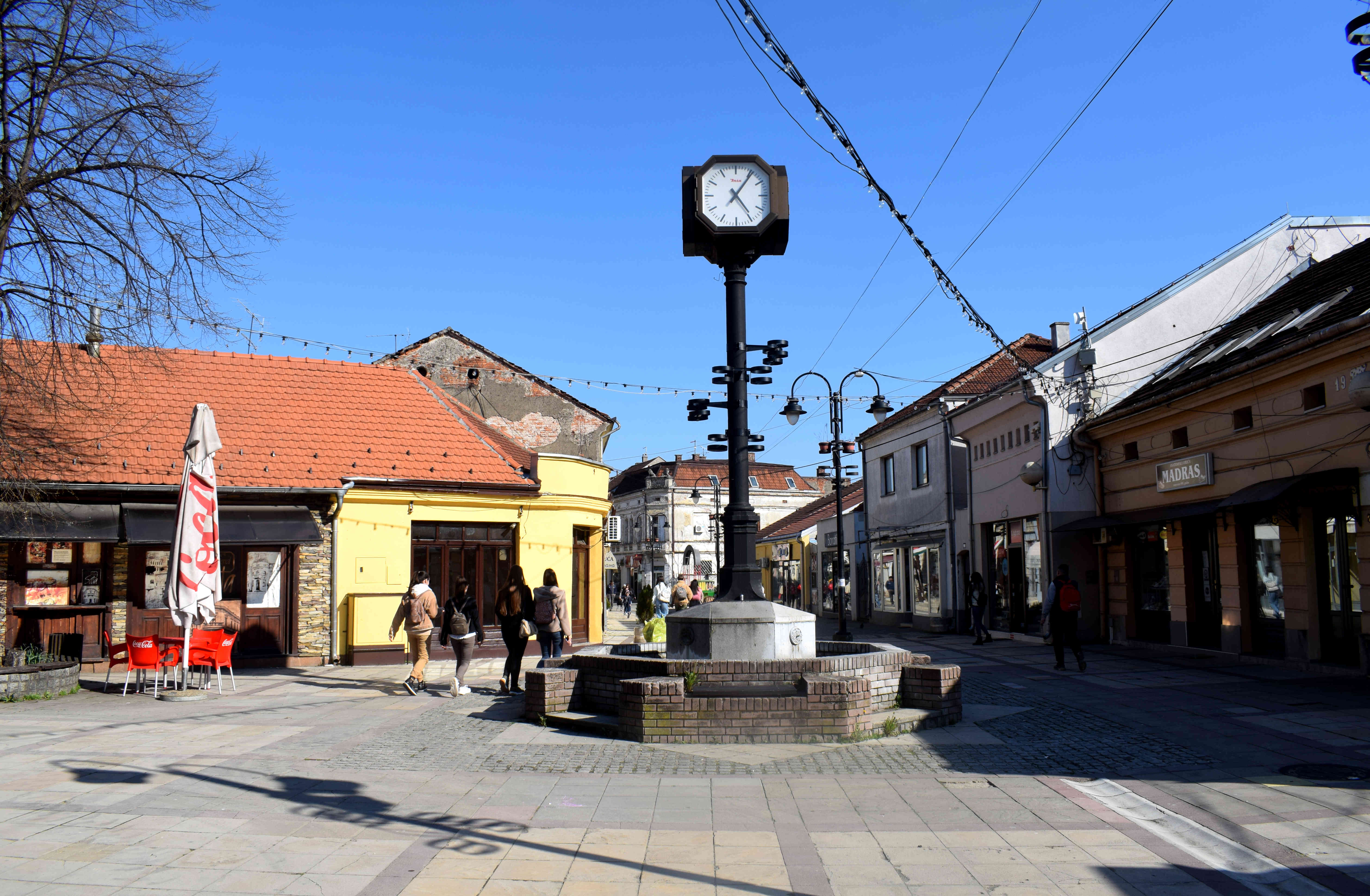 While I overall liked Knez Milos street, it was useful to compare it to Valjevo’s Tesnjar District. Both streets are historical. Both offer nice architecture. But unlike Tesnjar, Knez Milos does not have a design code and the consequences are immediately clear. All the buildings are covered with advertisements and store signs and cheap white plastic doors and windows.
While I overall liked Knez Milos street, it was useful to compare it to Valjevo’s Tesnjar District. Both streets are historical. Both offer nice architecture. But unlike Tesnjar, Knez Milos does not have a design code and the consequences are immediately clear. All the buildings are covered with advertisements and store signs and cheap white plastic doors and windows.
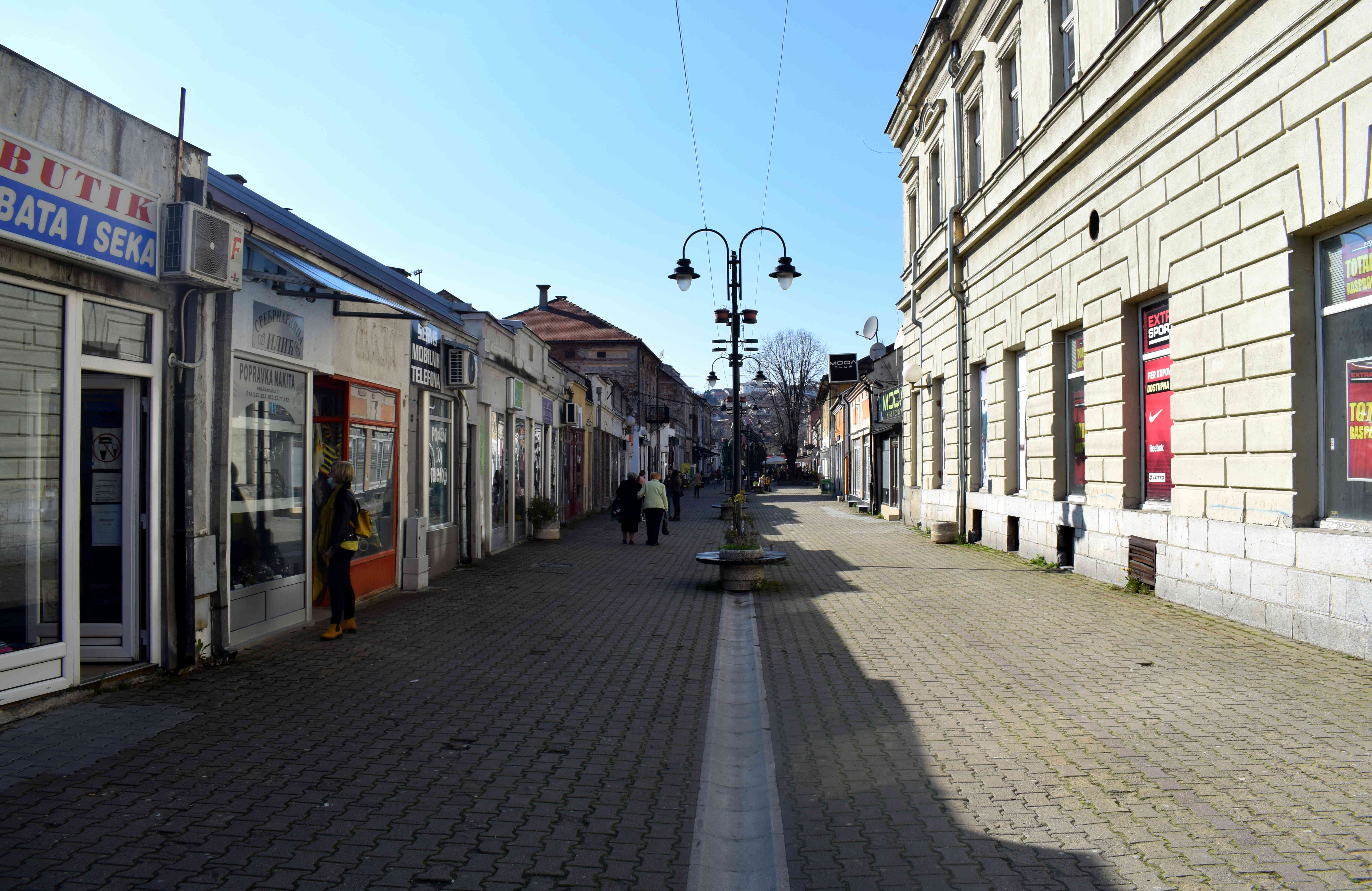 The city should really consider expanding the design code that Tesnjar has to other areas of the city. Otherwise, you’ll get modern buildings like the one below pop up in the center like a virus. This building was located right at the end of Knez Milos street.
The city should really consider expanding the design code that Tesnjar has to other areas of the city. Otherwise, you’ll get modern buildings like the one below pop up in the center like a virus. This building was located right at the end of Knez Milos street.
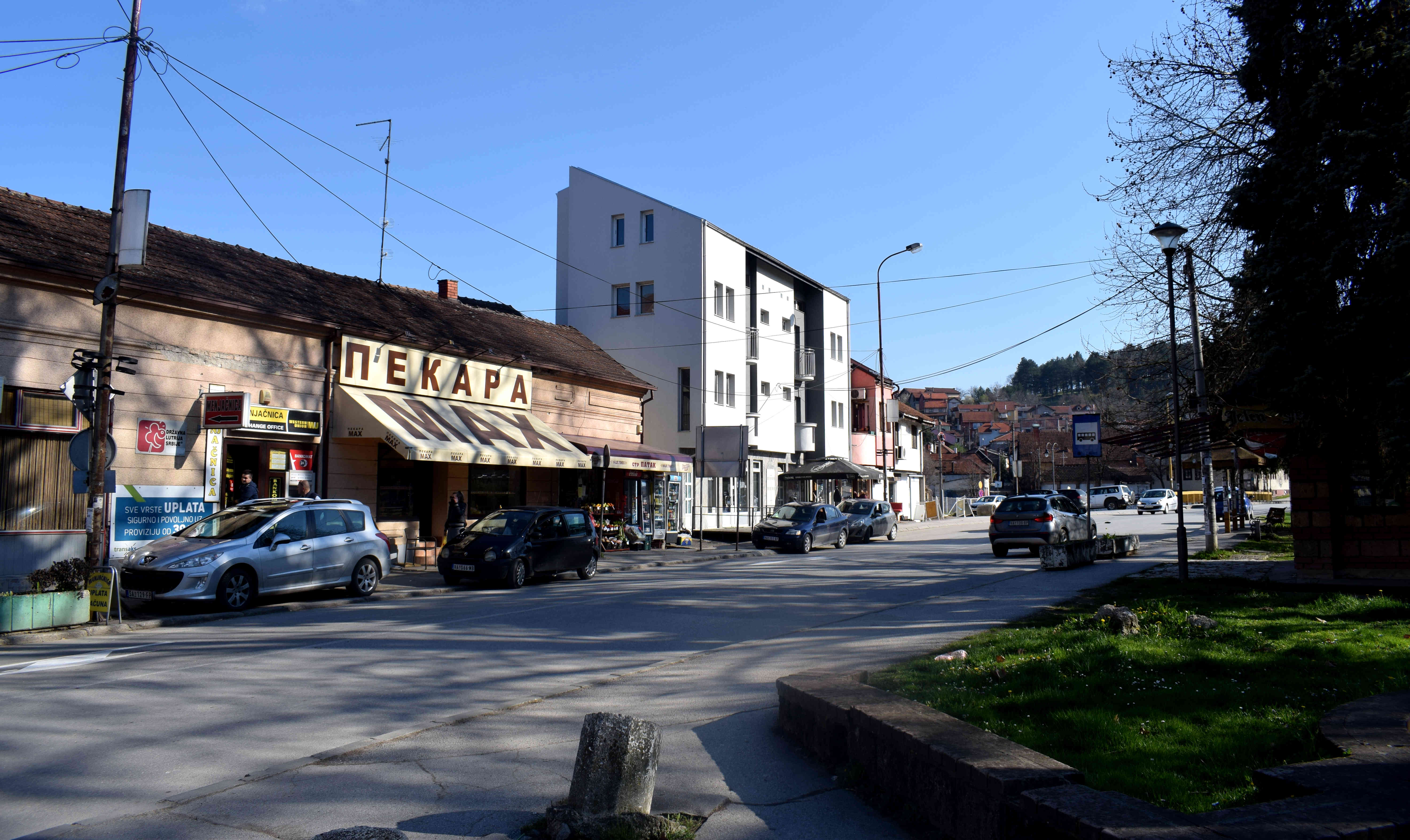 Across Knez Milos street is the entrance to the the Vida Jocic Park, a beautiful little green space in the center of the city with spectacular views of the hills surrounding Valjevo.
Across Knez Milos street is the entrance to the the Vida Jocic Park, a beautiful little green space in the center of the city with spectacular views of the hills surrounding Valjevo.
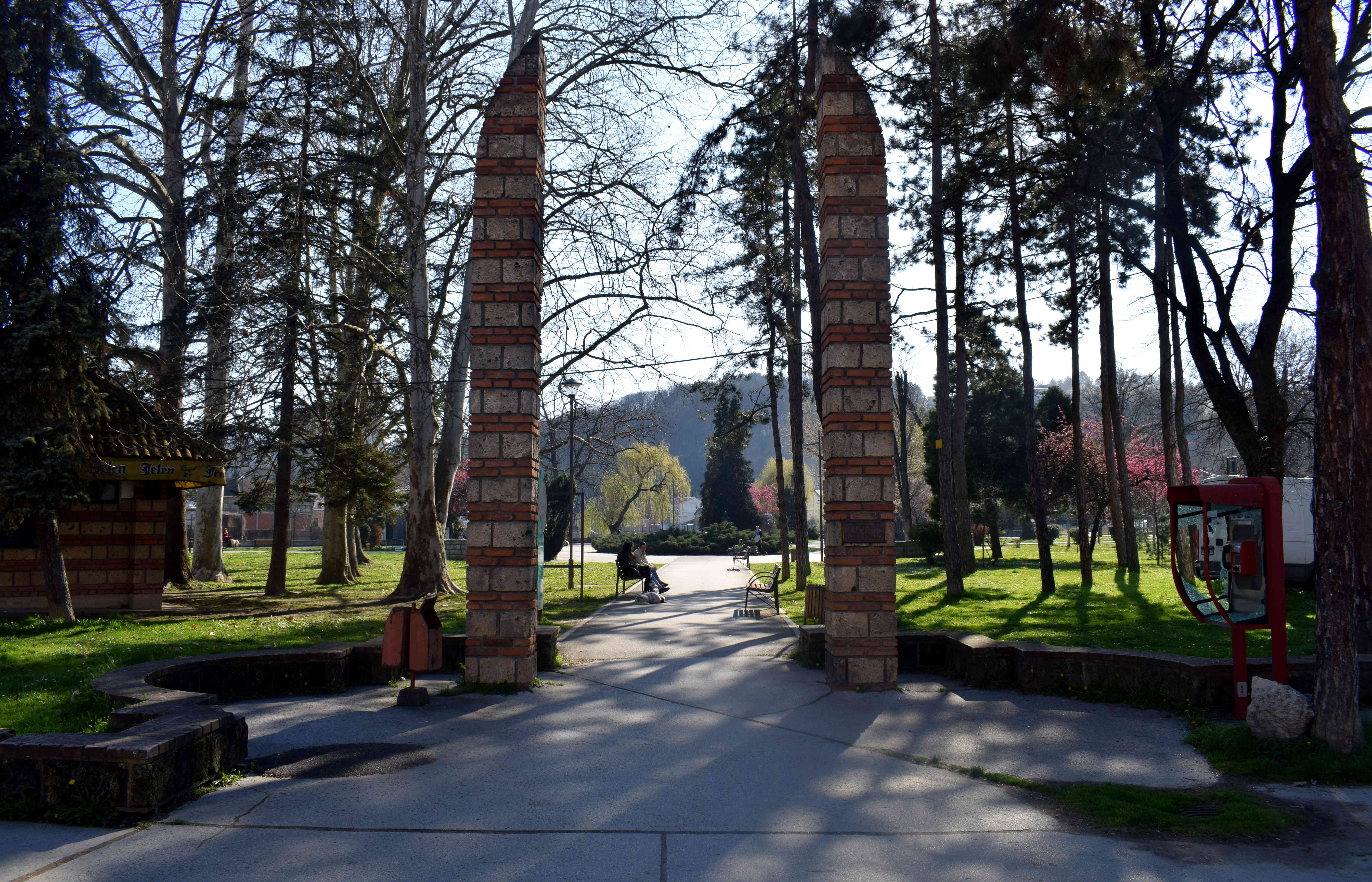 Tall trees tower over you as you maneuver through the park.
Tall trees tower over you as you maneuver through the park.
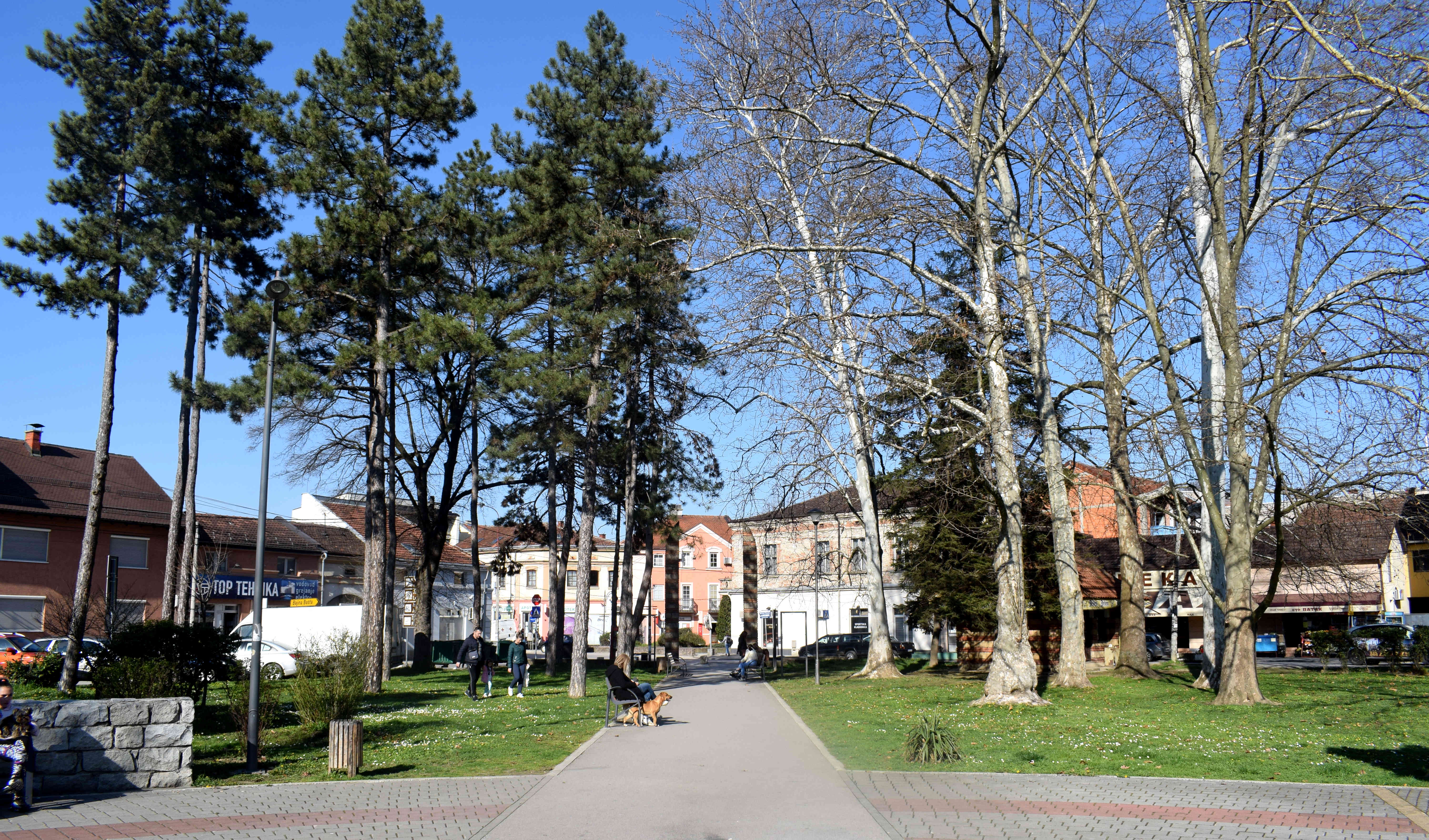 Unfortunately, there were some pruned trees in the park too. This outdated practice of pruning trees needs to come to an end ASAP. You see trees cut like this all over Belgrade, in Moscow and lots of other cities I’ve visited and I have yet to find a legitimate reason for why the trees get cut down this way.
Unfortunately, there were some pruned trees in the park too. This outdated practice of pruning trees needs to come to an end ASAP. You see trees cut like this all over Belgrade, in Moscow and lots of other cities I’ve visited and I have yet to find a legitimate reason for why the trees get cut down this way.
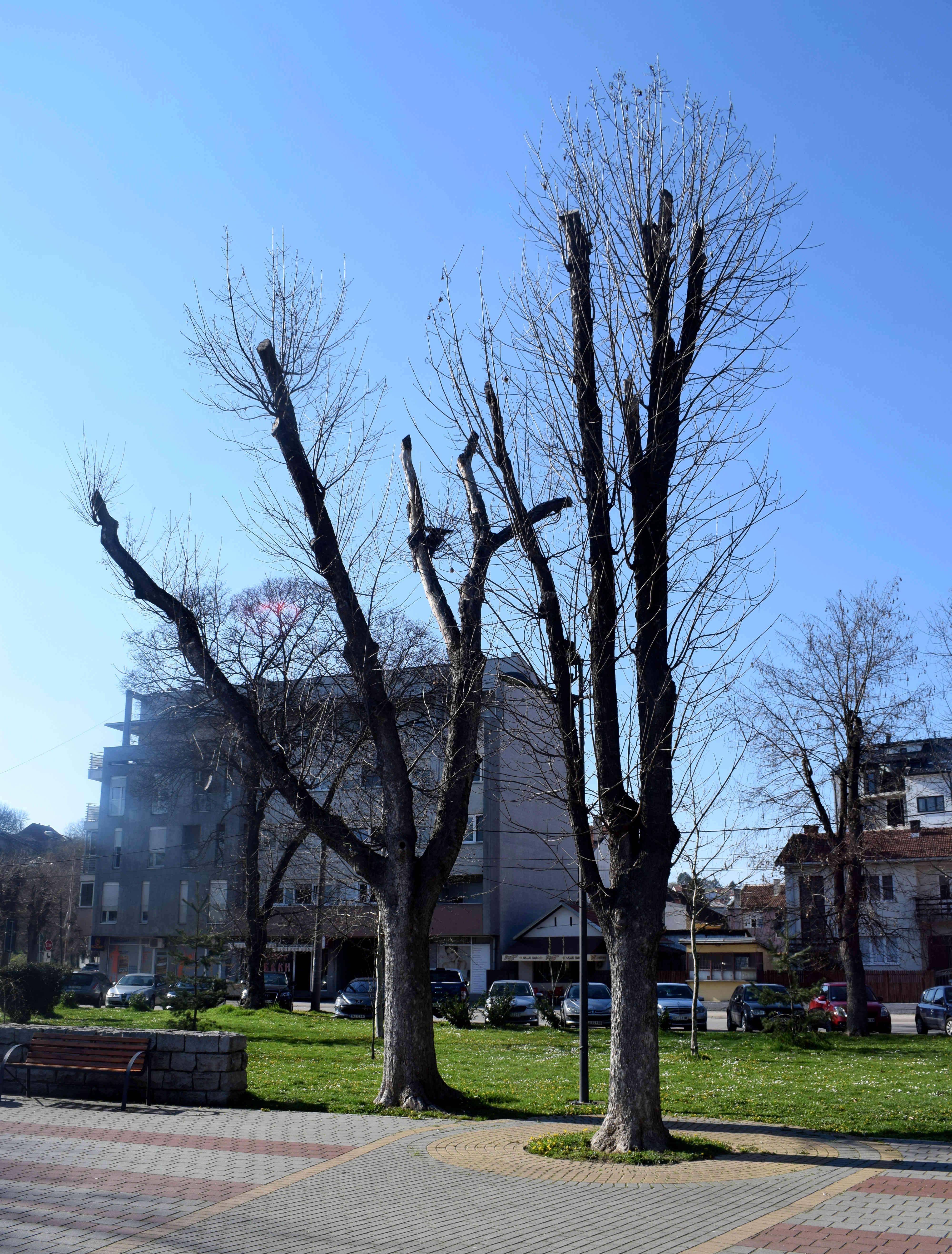 This is what a tree should look like.
This is what a tree should look like.
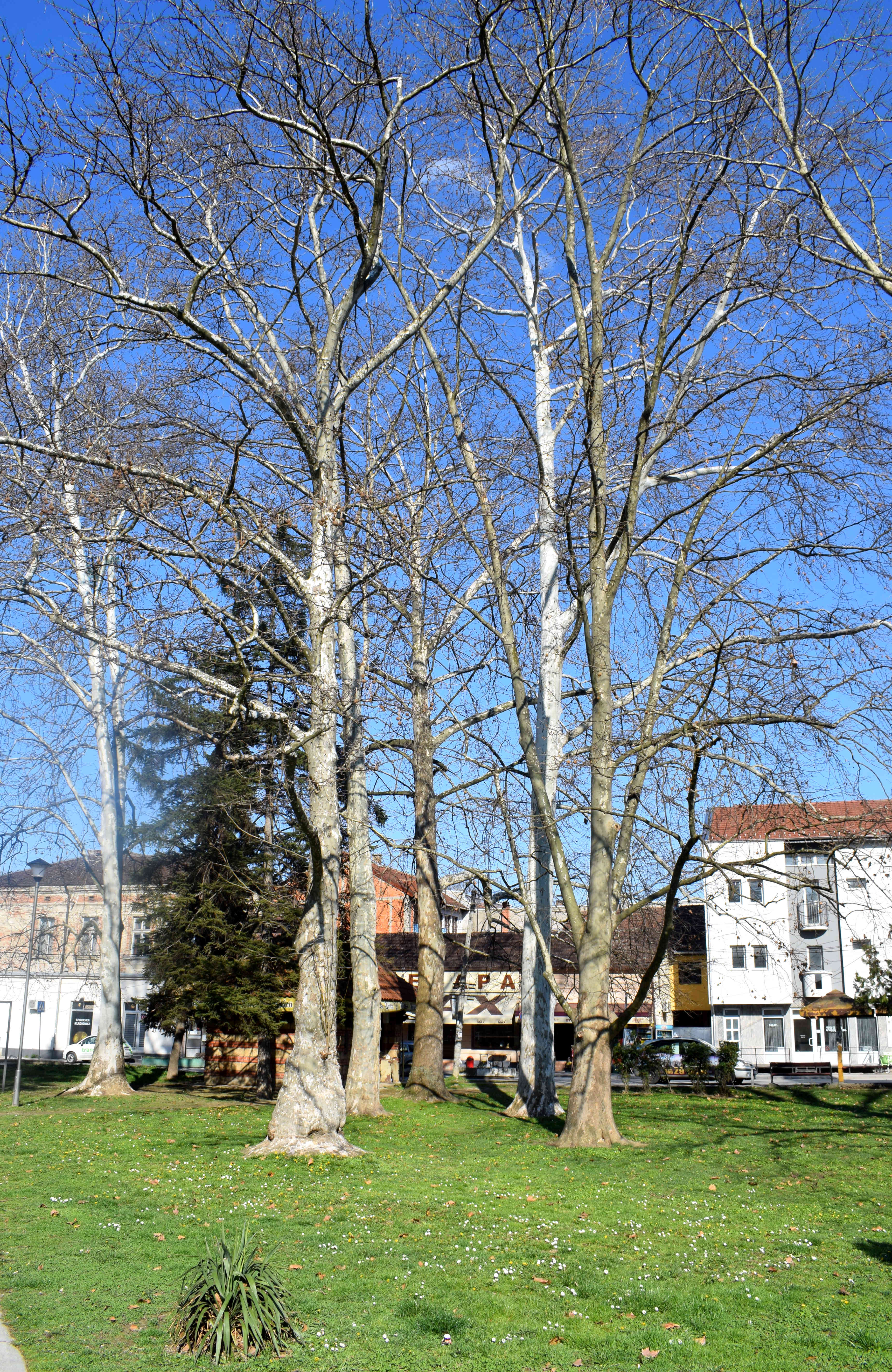 Just contrast the trees in the front with the trees in the back. Which would you prefer?
Just contrast the trees in the front with the trees in the back. Which would you prefer?
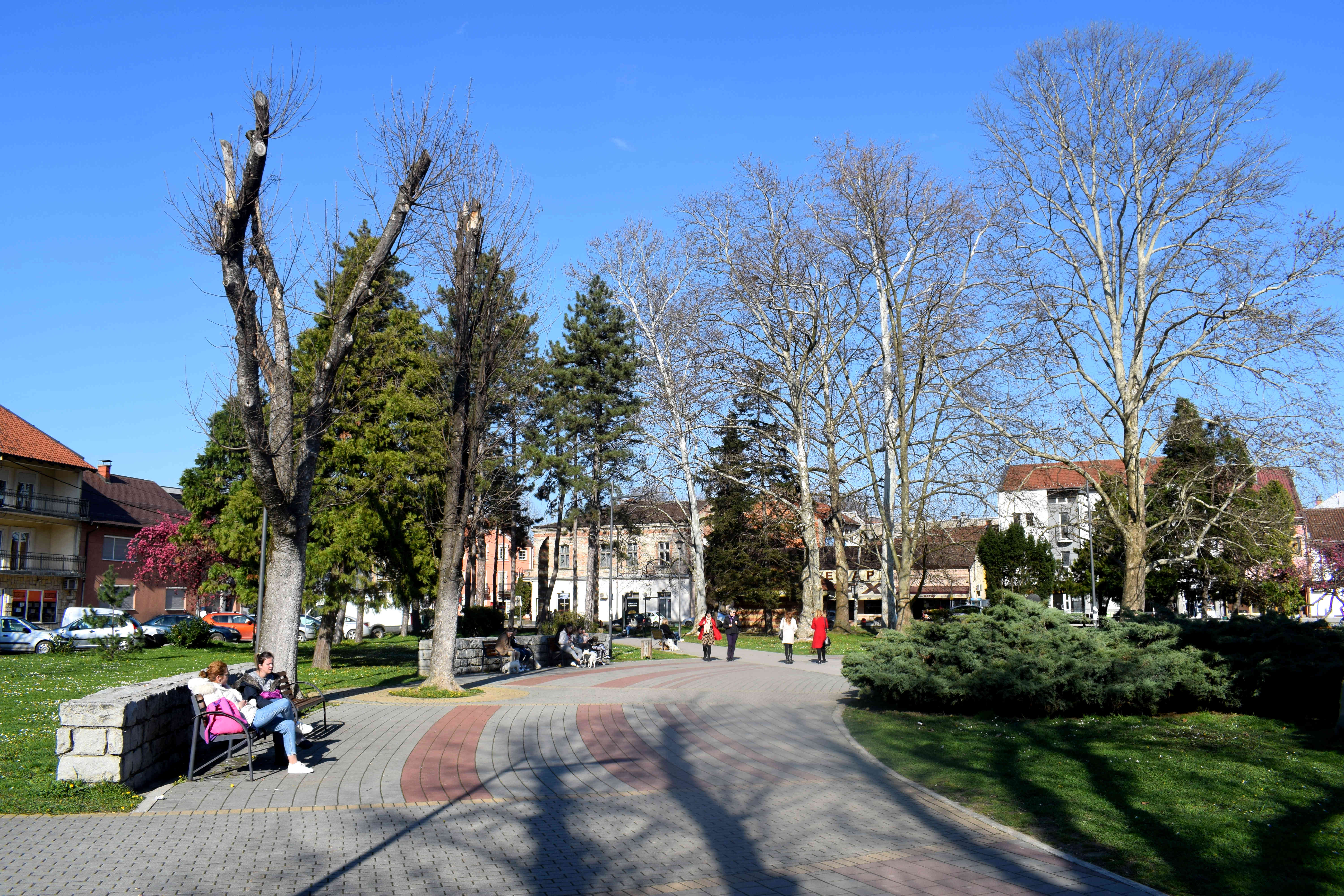 Look at how the trees in the distance have been butchered. Valjevo could learn a thing or two from Subotica, a Serbian city in the north of the country which hasn’t touched its trees in decades and its city center is absolutely stunning as a result.
Look at how the trees in the distance have been butchered. Valjevo could learn a thing or two from Subotica, a Serbian city in the north of the country which hasn’t touched its trees in decades and its city center is absolutely stunning as a result.
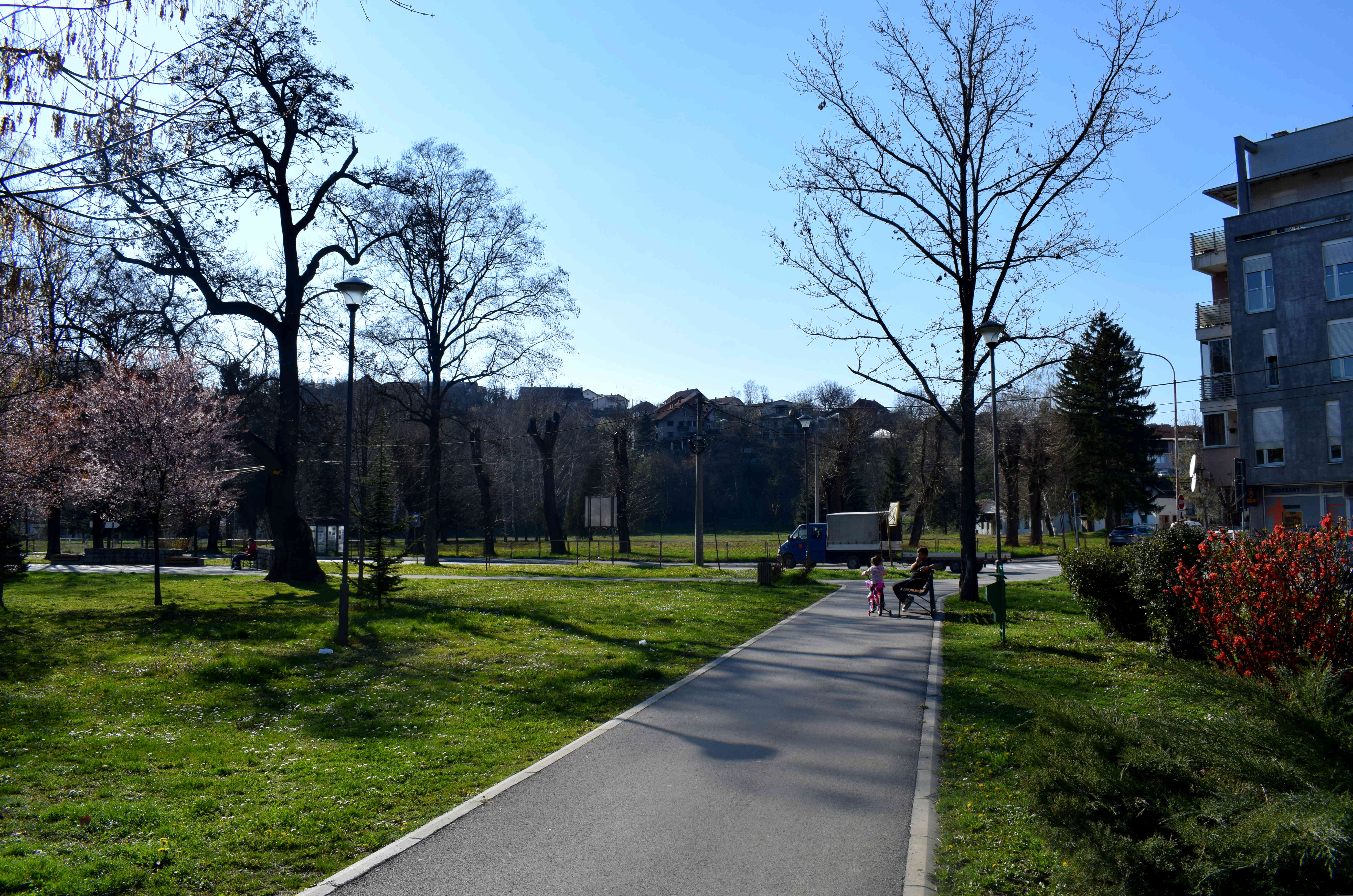 A little bit further down the park you get a nice walkway that follows the Kolubara.
A little bit further down the park you get a nice walkway that follows the Kolubara.
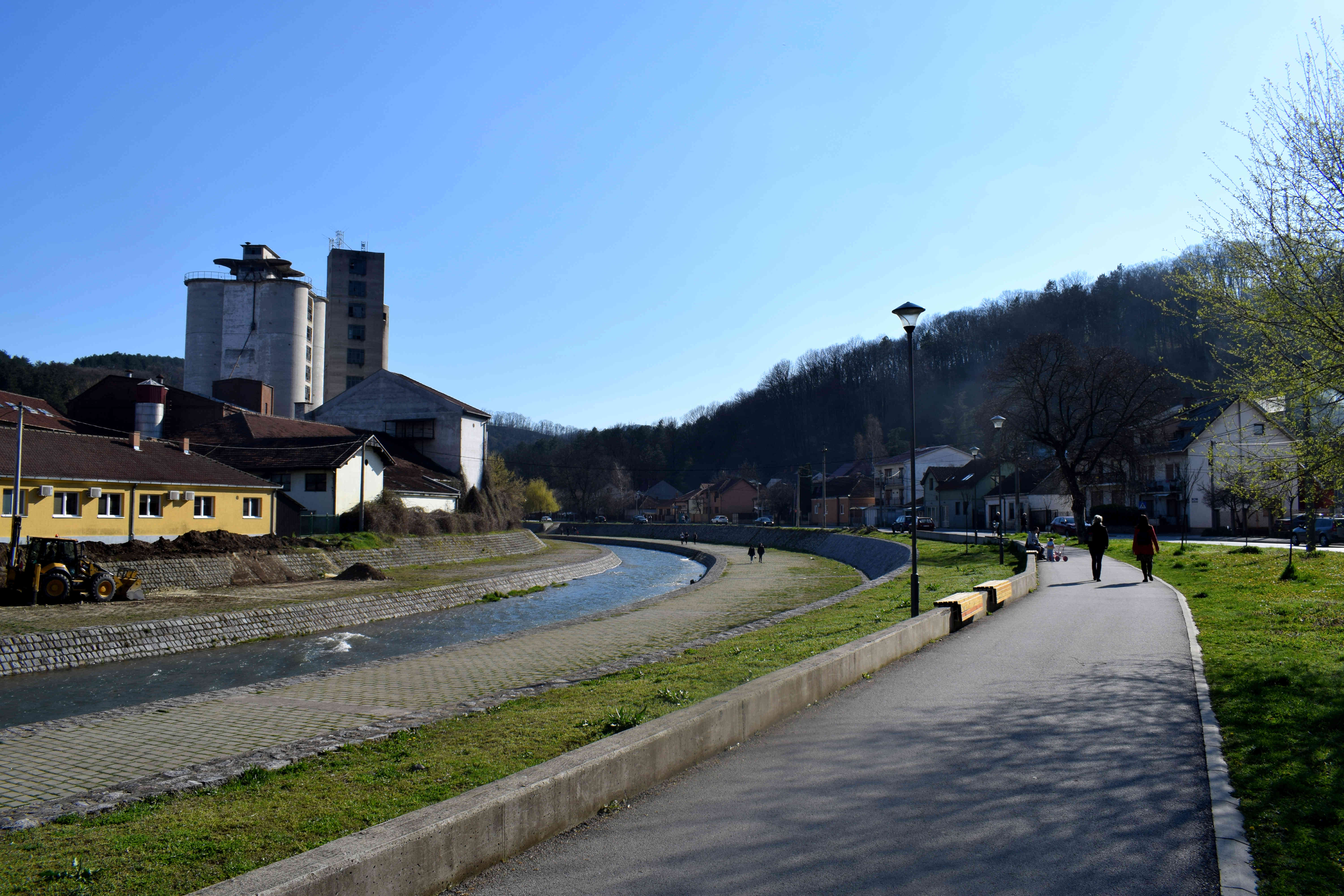 An impressive, old factory sits on the other side of the river. This factory is still in operation today, and locals told me it was a main contributor to the poor air quality in Valjevo. Hopefully one day the city can move the operations somewhere outside of the city and convert the old structure into a vibrant urban space. Take a look at how Germany turned old, unused factory space outside of Berlin into the world’s deepest scuba-diving pool.
An impressive, old factory sits on the other side of the river. This factory is still in operation today, and locals told me it was a main contributor to the poor air quality in Valjevo. Hopefully one day the city can move the operations somewhere outside of the city and convert the old structure into a vibrant urban space. Take a look at how Germany turned old, unused factory space outside of Berlin into the world’s deepest scuba-diving pool.
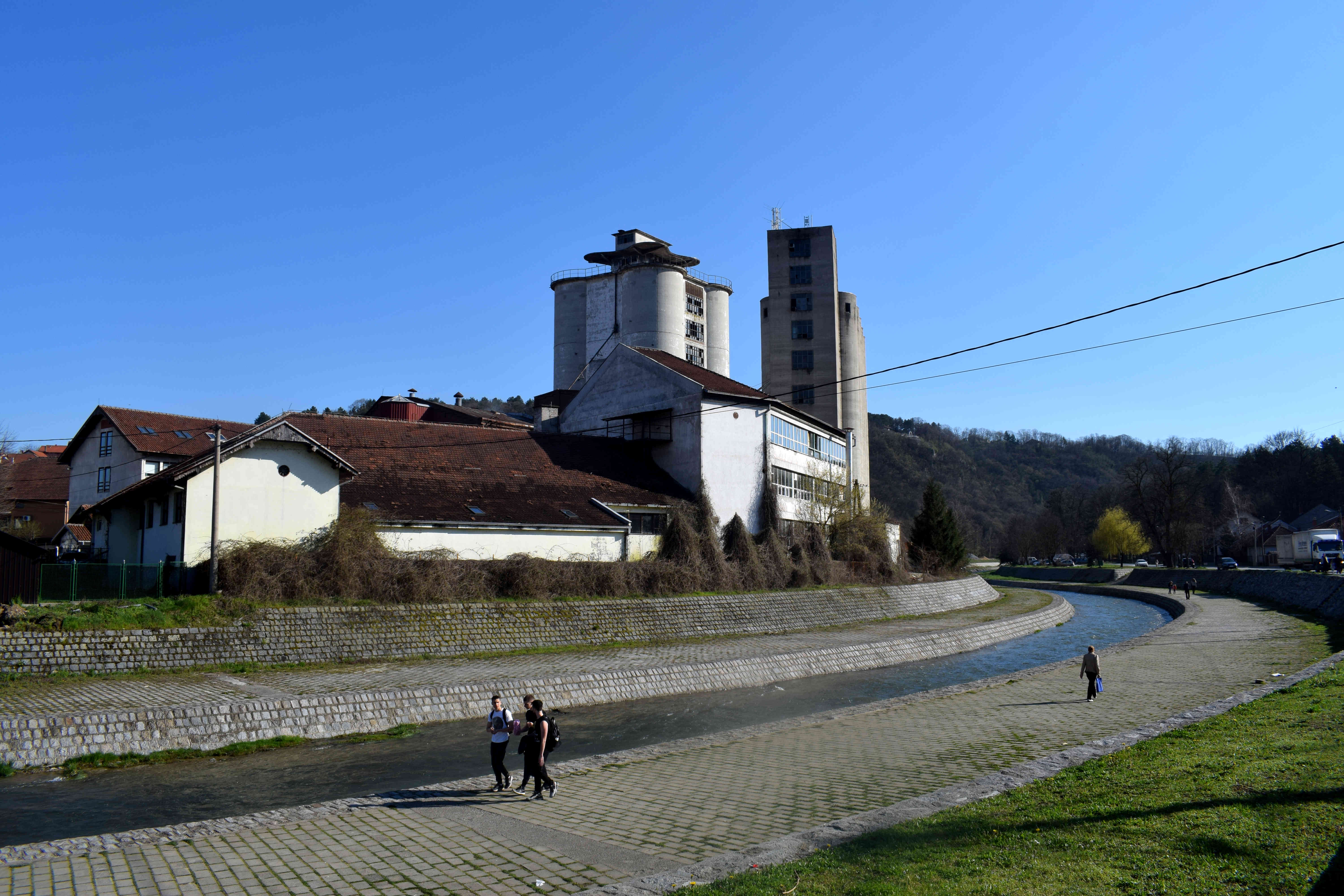 The walkway along the Kolubara River is a little bare and could be improved.
The walkway along the Kolubara River is a little bare and could be improved.
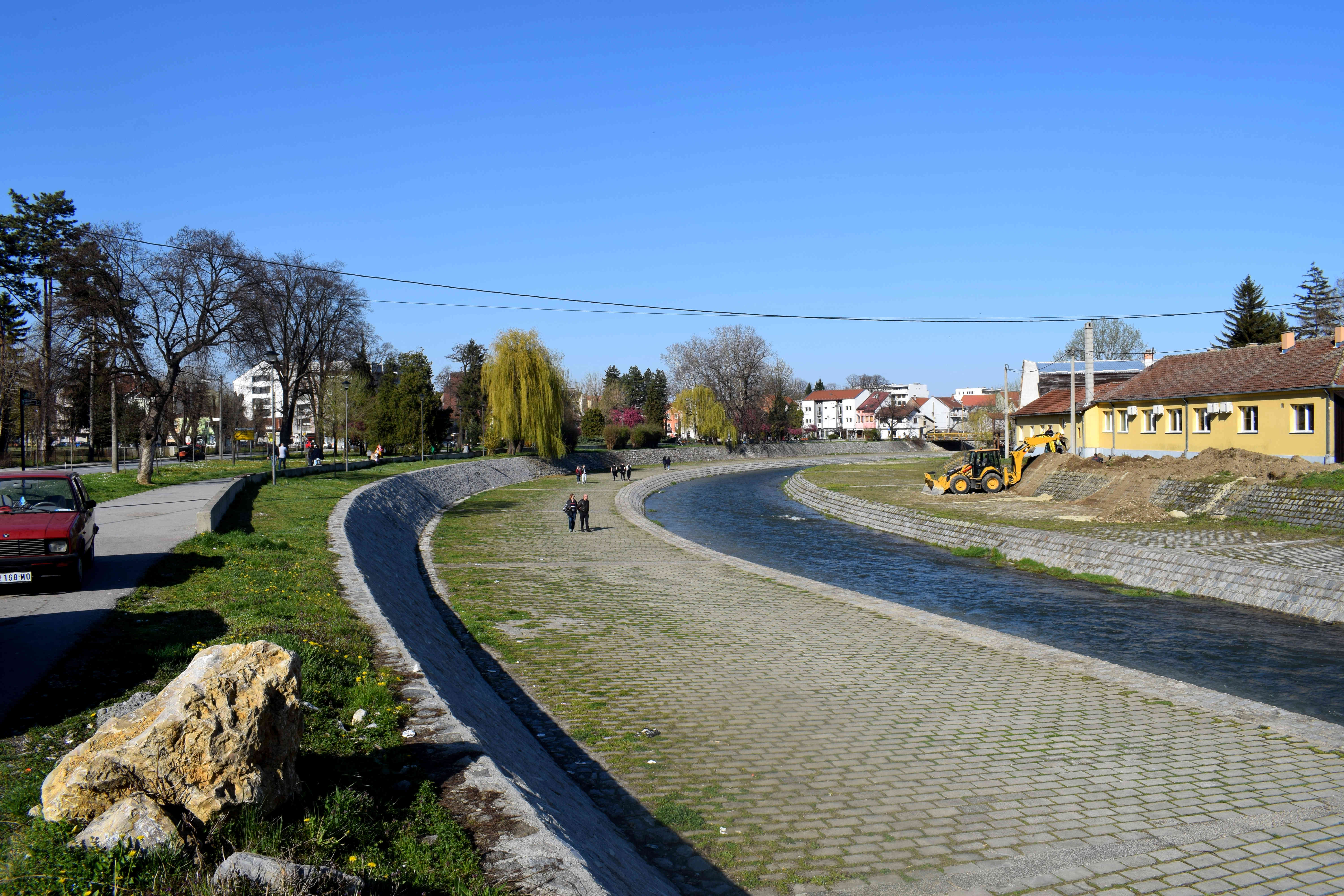 Once you pass Valjevo’s factory, you get to the city’s biggest and most beautiful park, Pecina Park.
Once you pass Valjevo’s factory, you get to the city’s biggest and most beautiful park, Pecina Park.
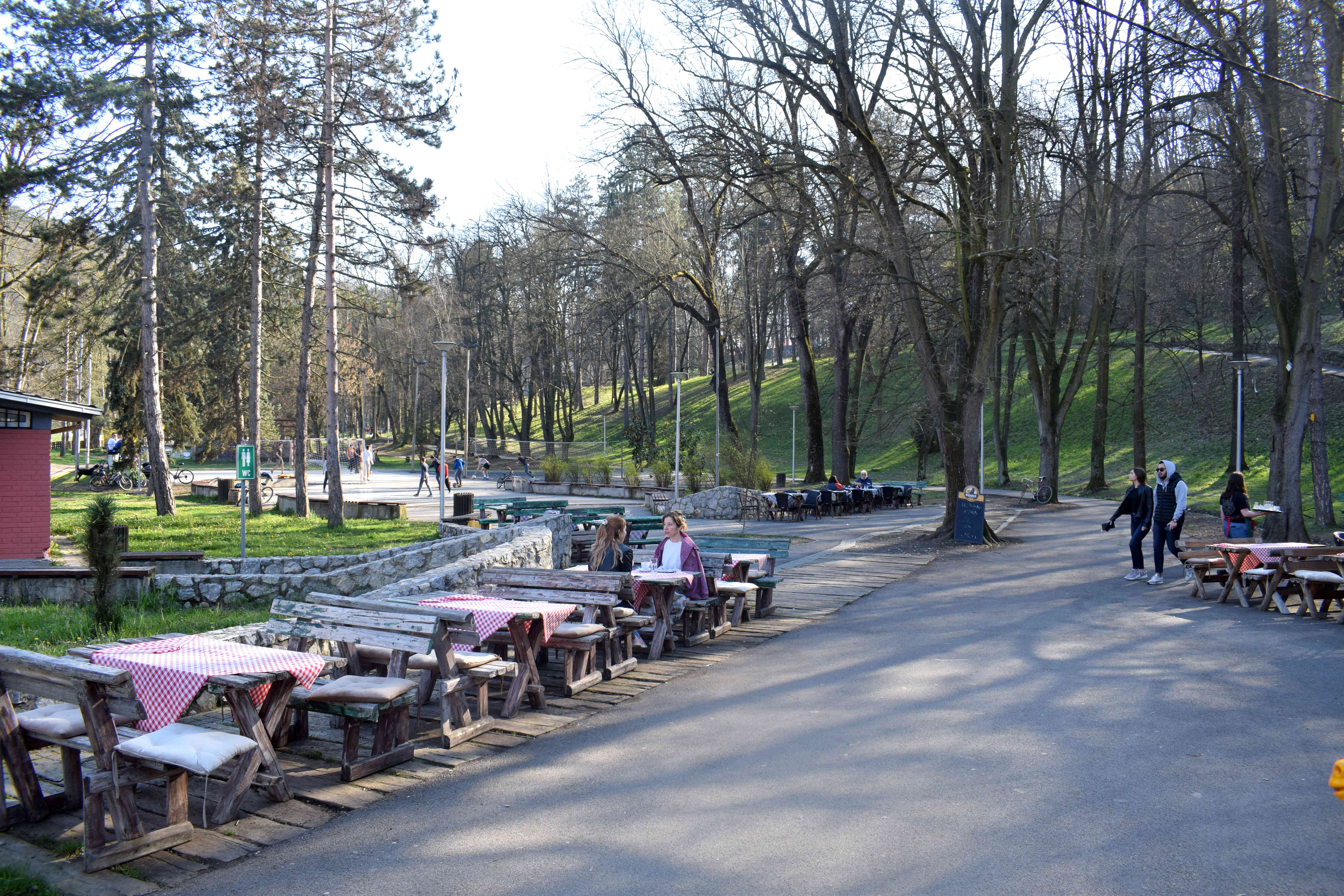 Immediately at the beginning of the park is a large restaurant where you can grab a bite to eat.
Immediately at the beginning of the park is a large restaurant where you can grab a bite to eat.
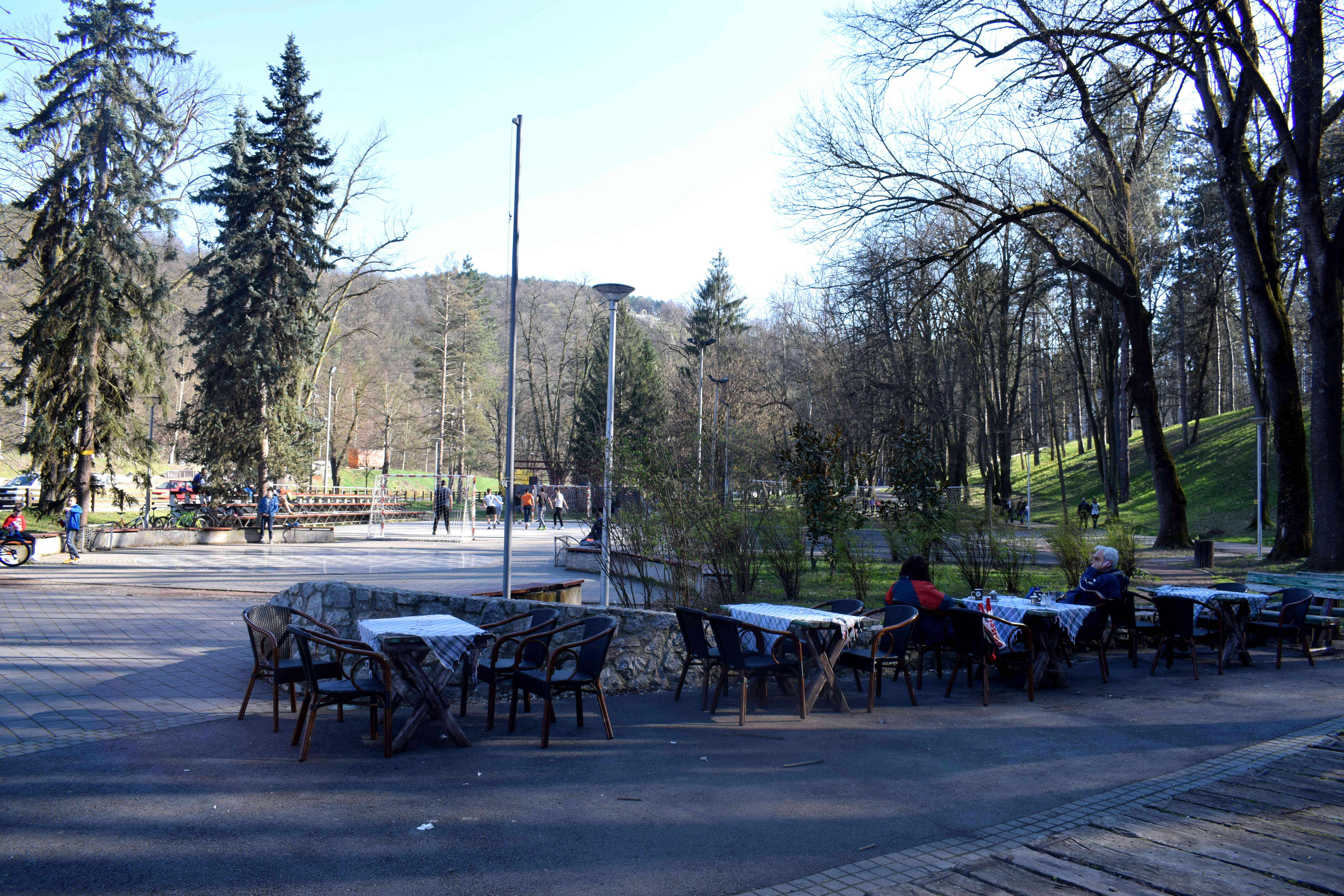 A small court for soccer.
A small court for soccer.
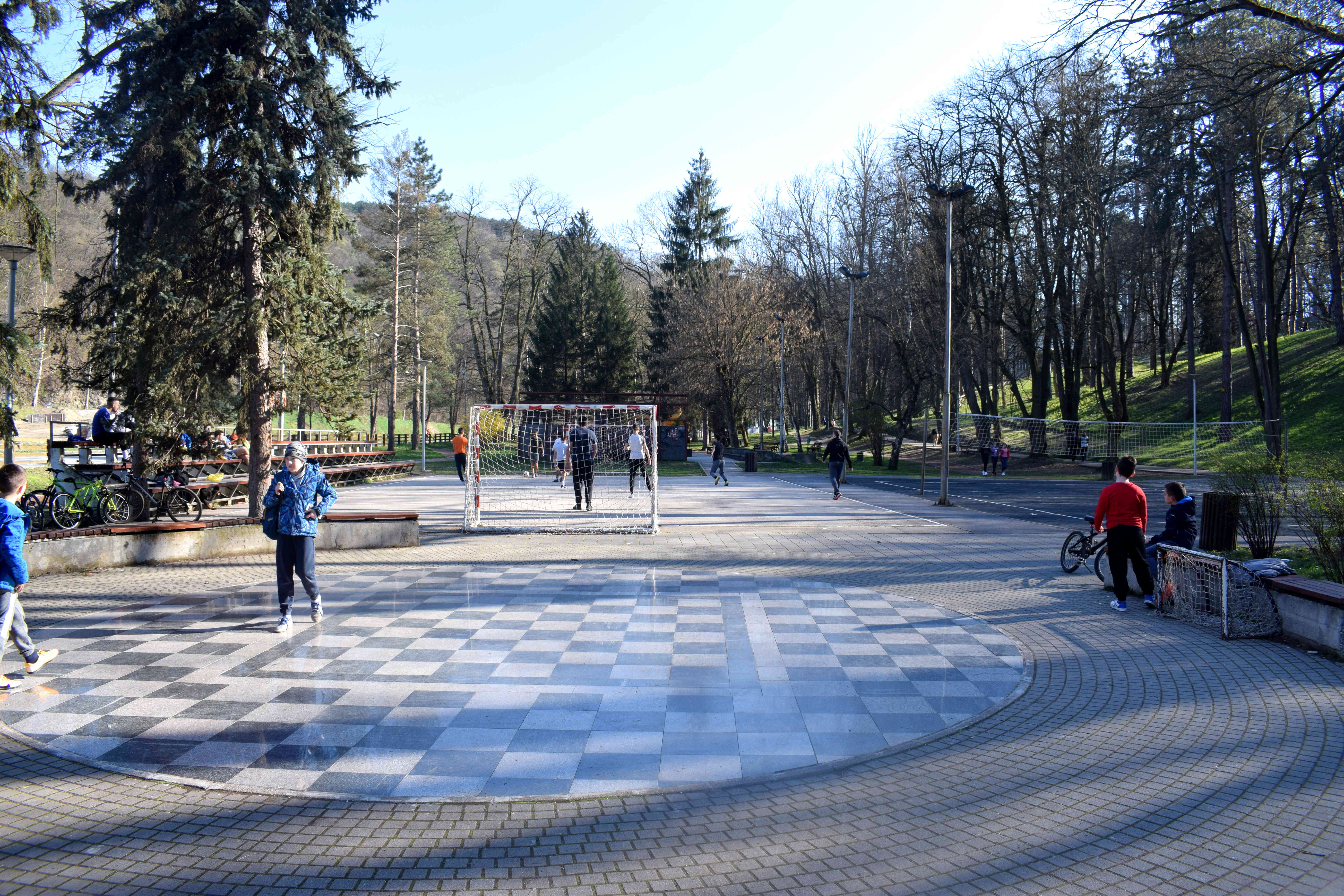 A volleyball court where you could also play badminton.
A volleyball court where you could also play badminton.
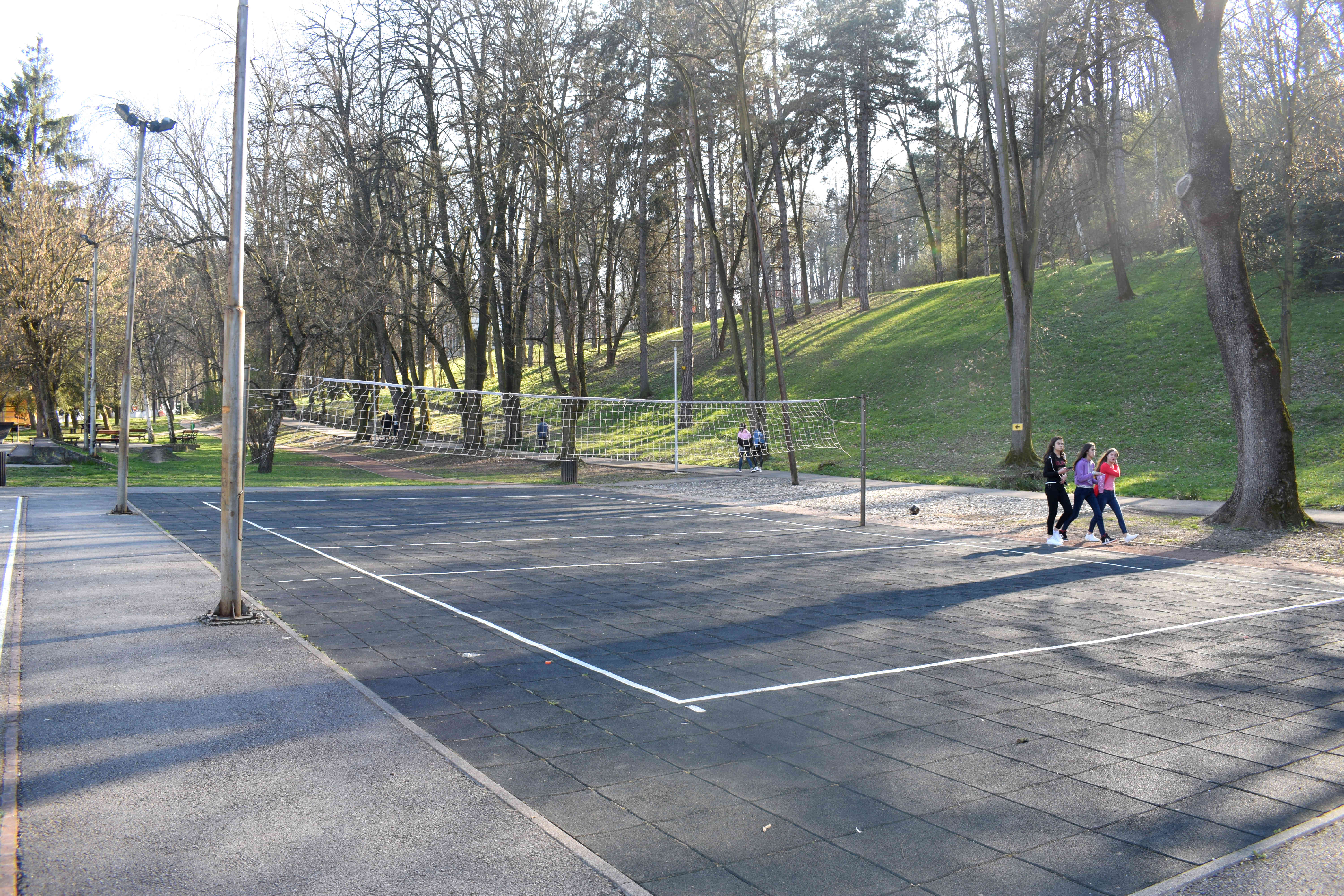 All located at the bottom of a hill with hiking trails and views of the city.
All located at the bottom of a hill with hiking trails and views of the city.
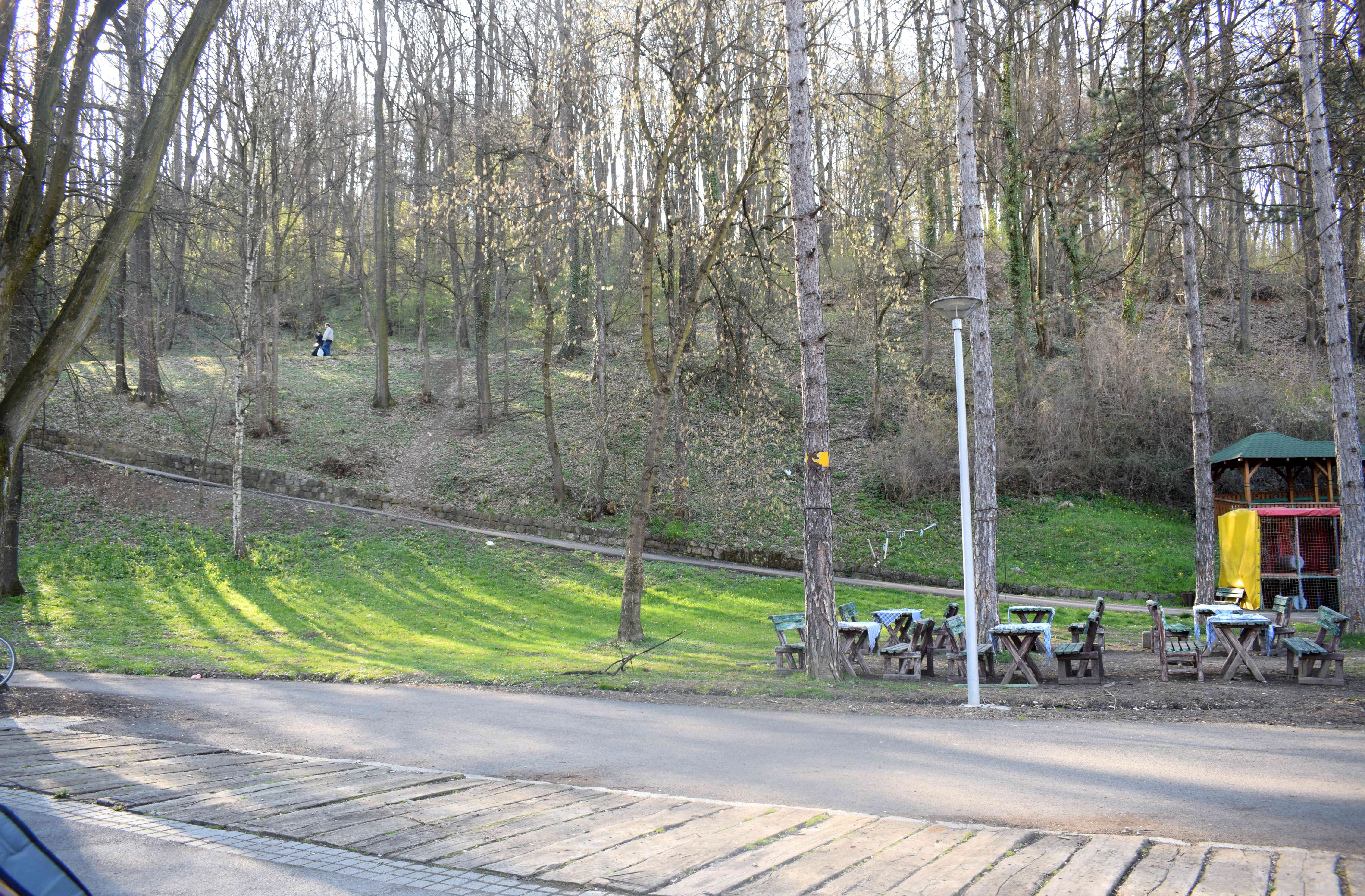 We stopped to drink some local Serbian coffee.
We stopped to drink some local Serbian coffee.
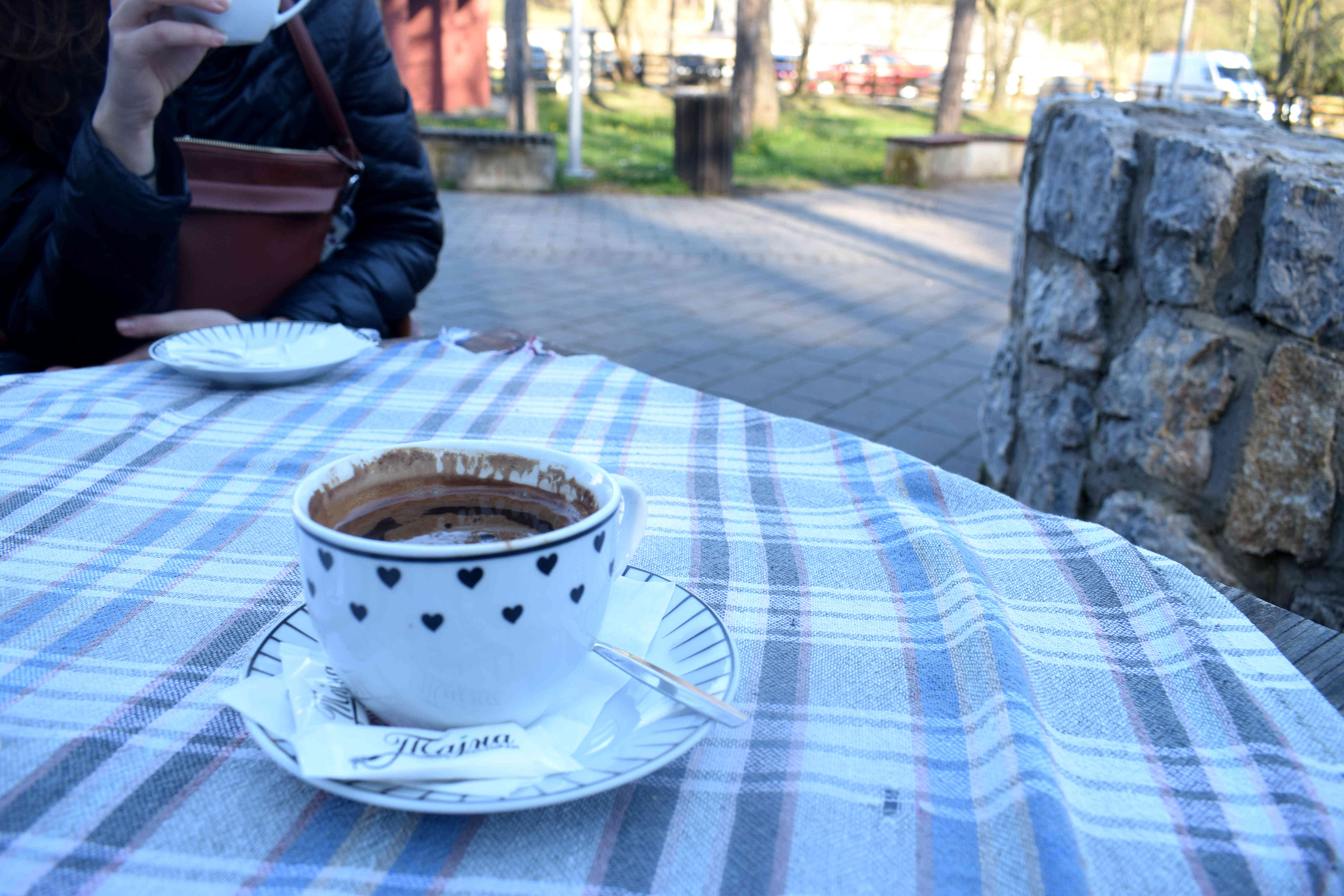 Before heading up to hike through the woods.
Before heading up to hike through the woods.
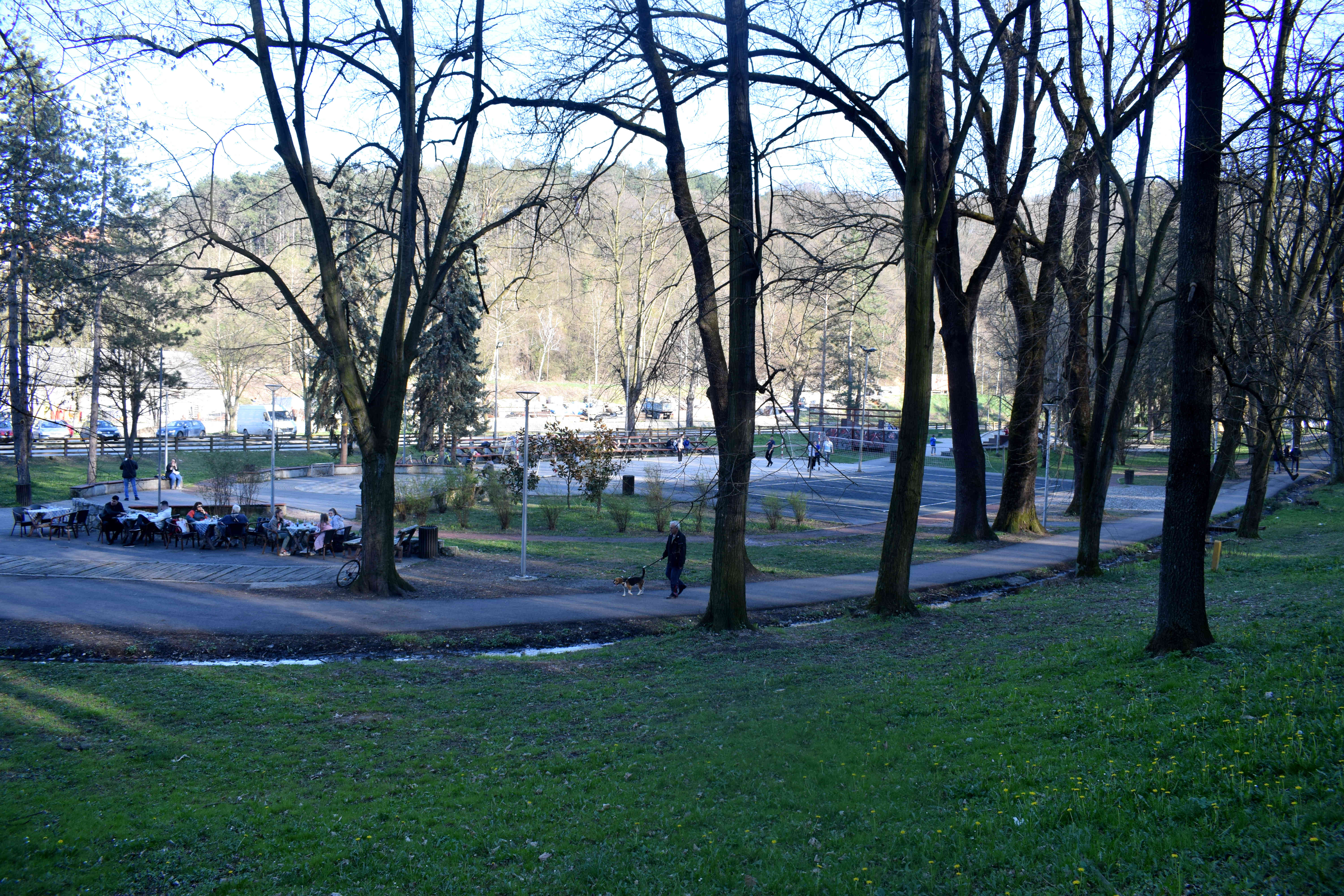 A look at the volleyball court below.
A look at the volleyball court below.
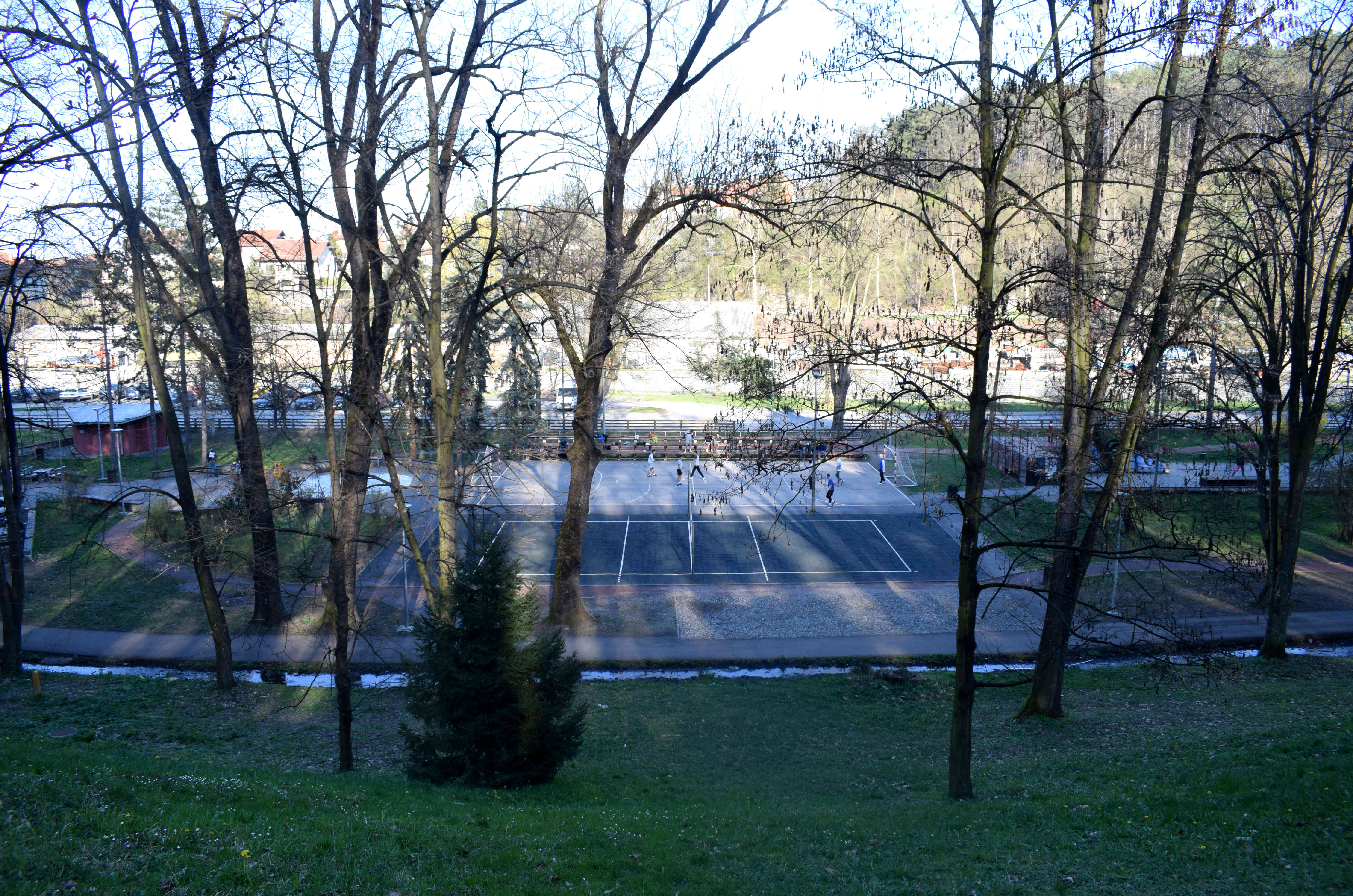 And the path heading towards the top of the hill.
And the path heading towards the top of the hill.
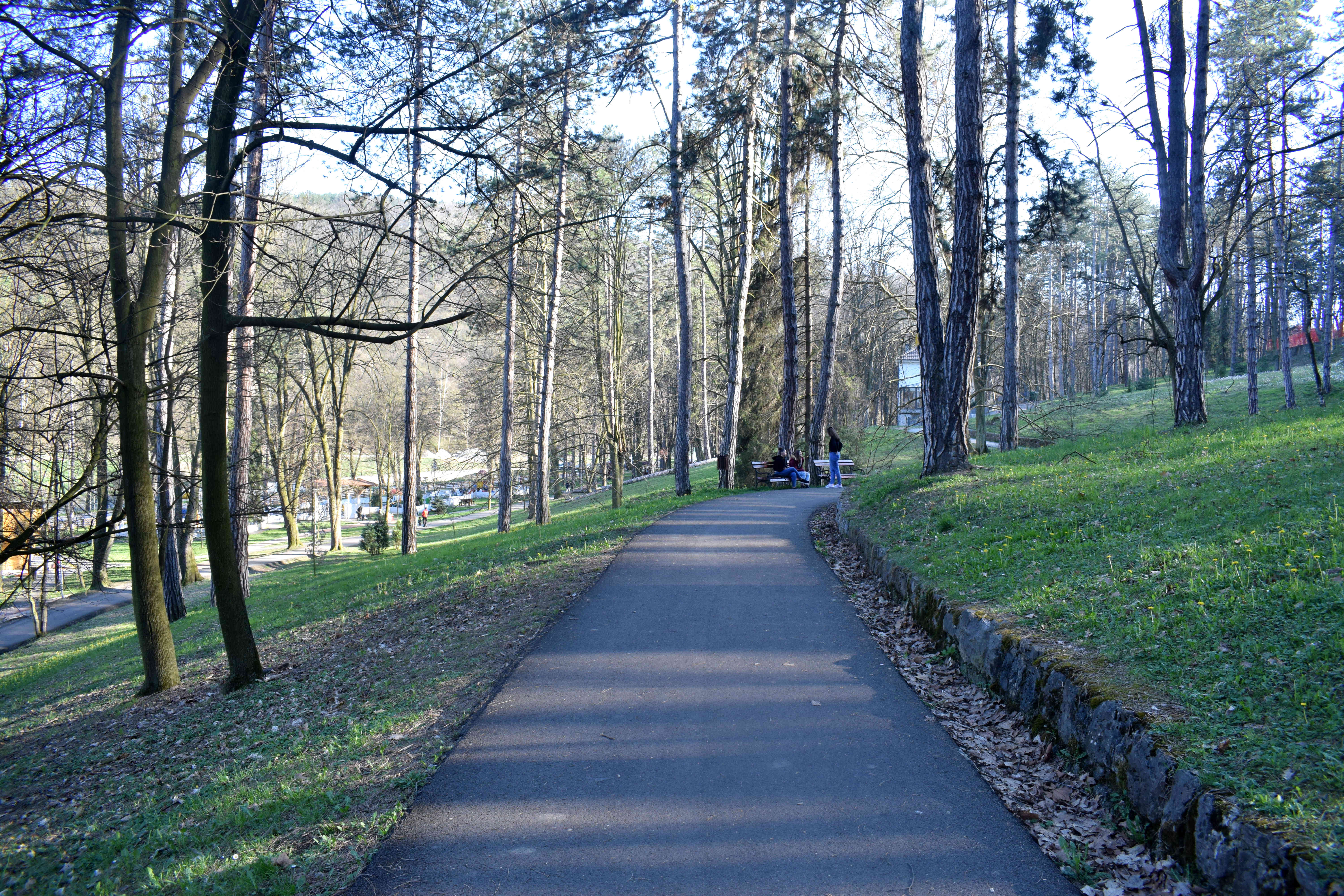 Pecina Park was my favorite part of Valjevo, a green oasis not far from the center where people could easily enjoy themselves in nature.
Pecina Park was my favorite part of Valjevo, a green oasis not far from the center where people could easily enjoy themselves in nature.
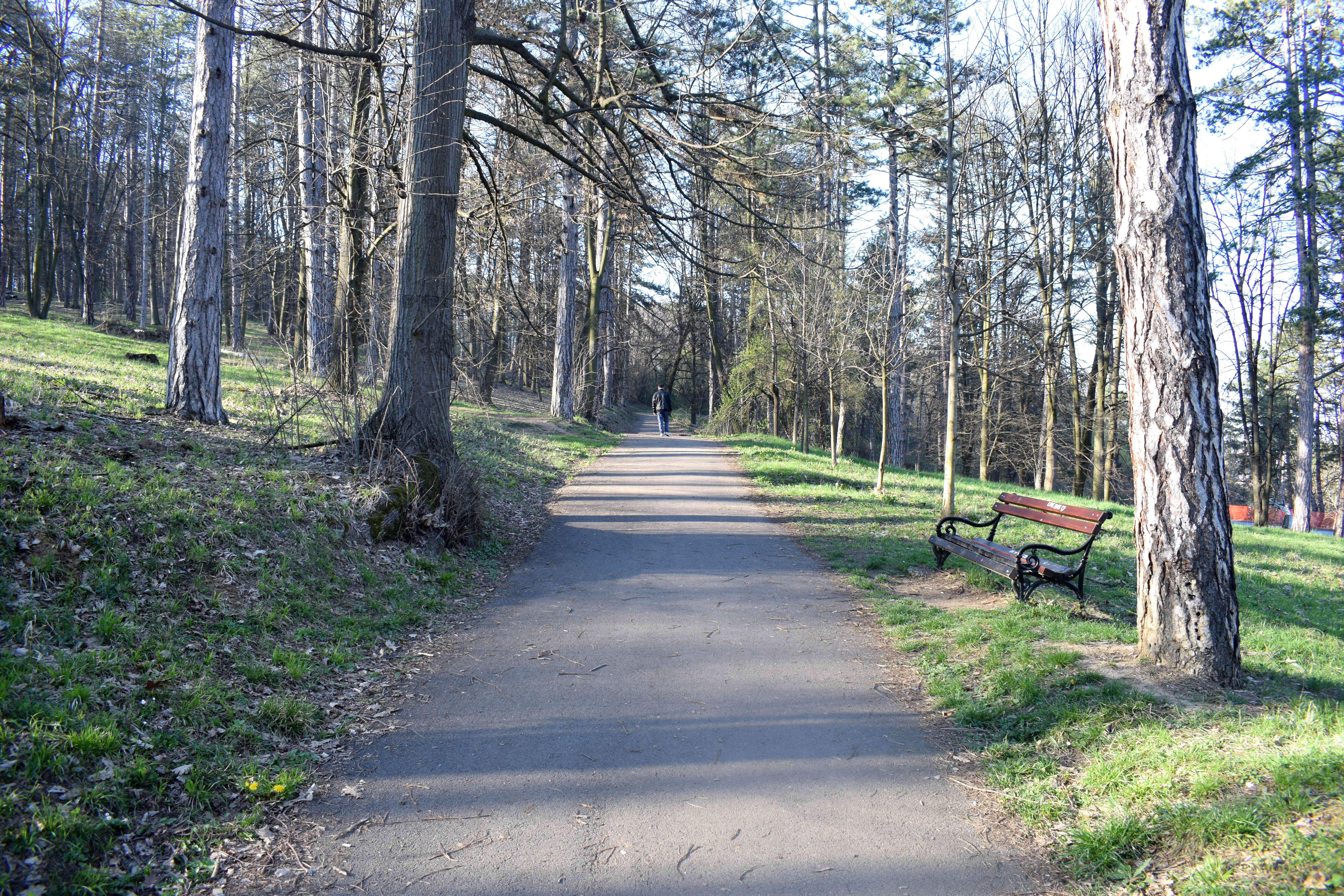 A basketball court in the woods.
A basketball court in the woods.
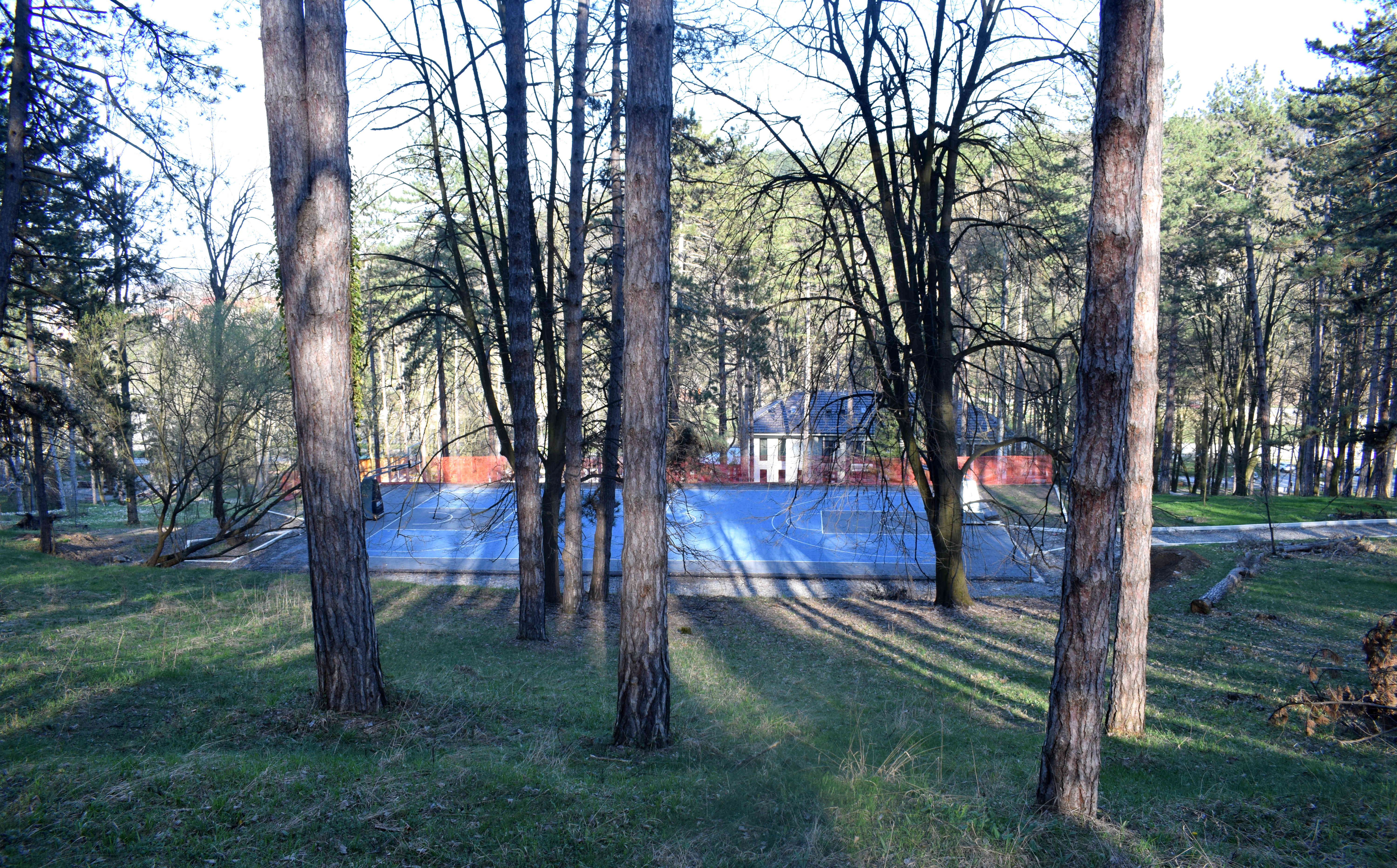 The top of Pecina Park.
The top of Pecina Park.
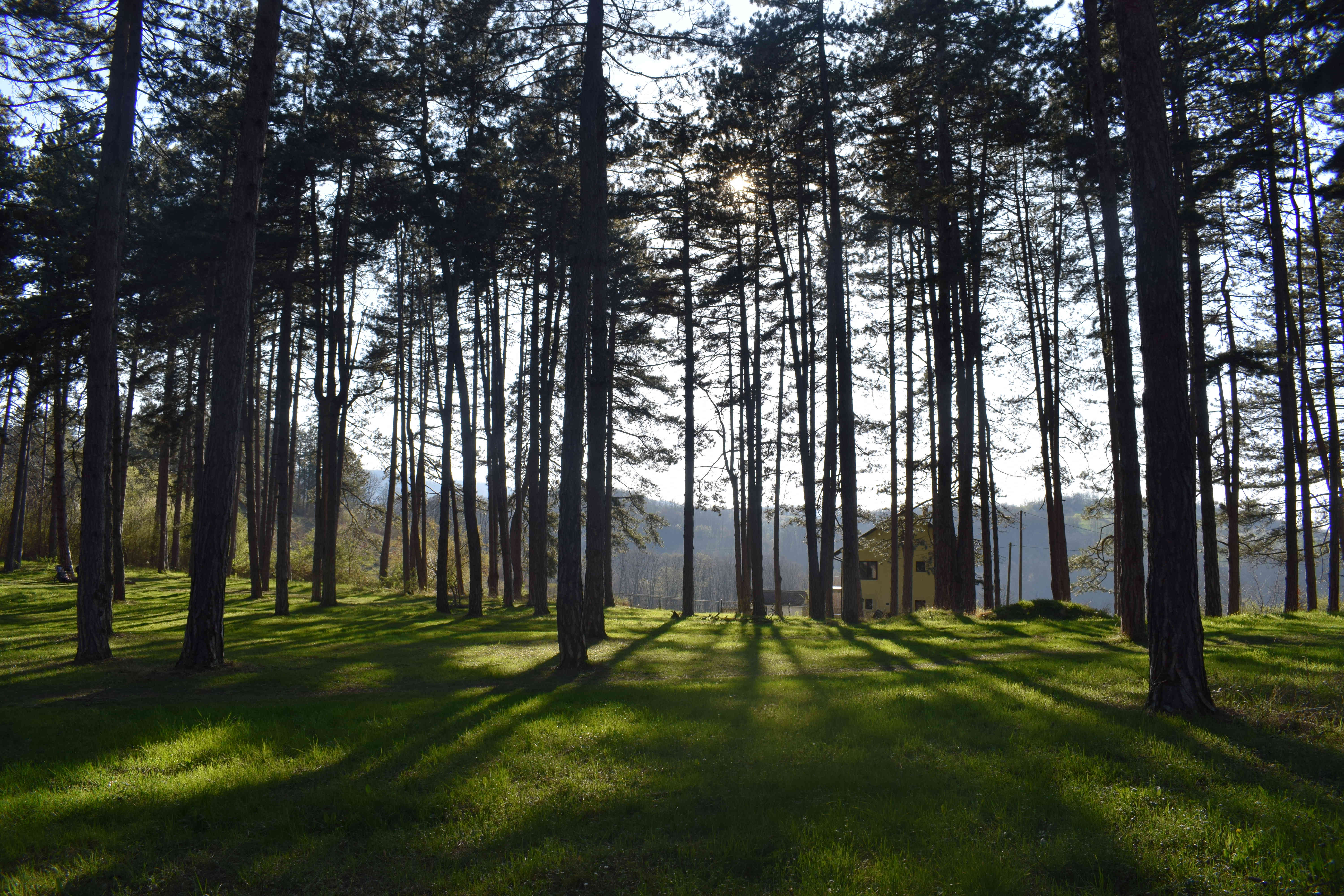
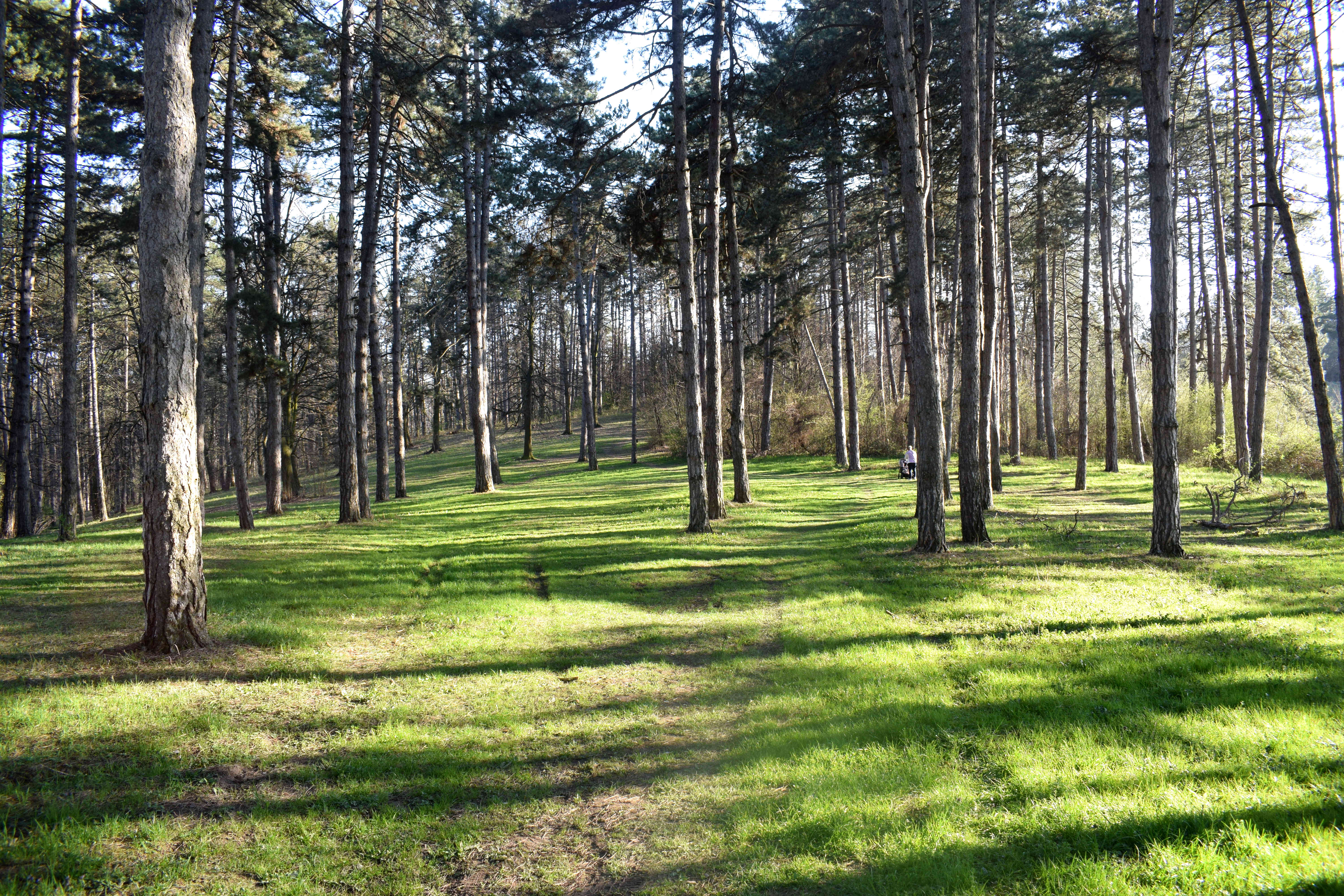 Some picturesque haystacks.
Some picturesque haystacks.
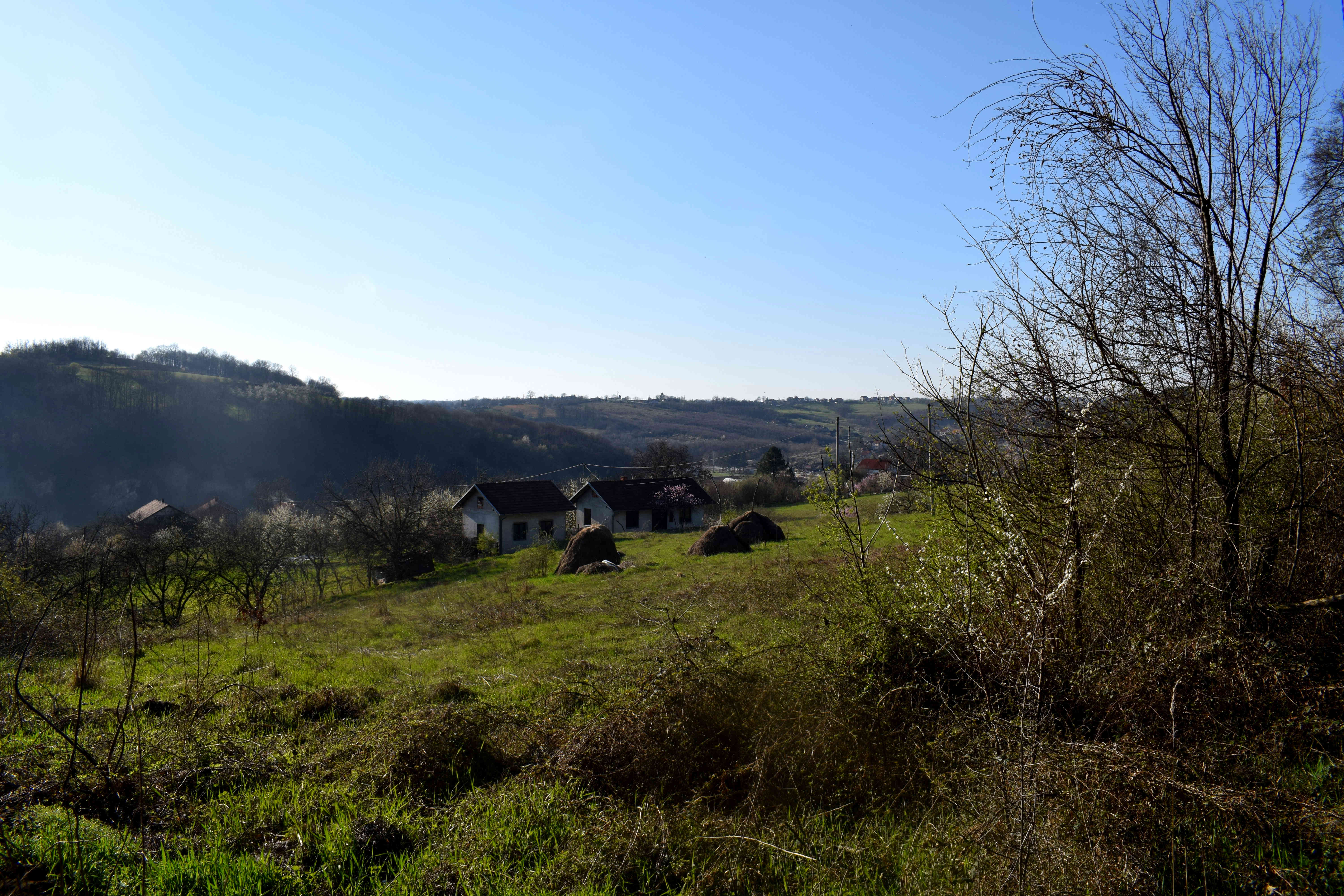 You could see the outskirts of Valjevo in the distance.
You could see the outskirts of Valjevo in the distance.
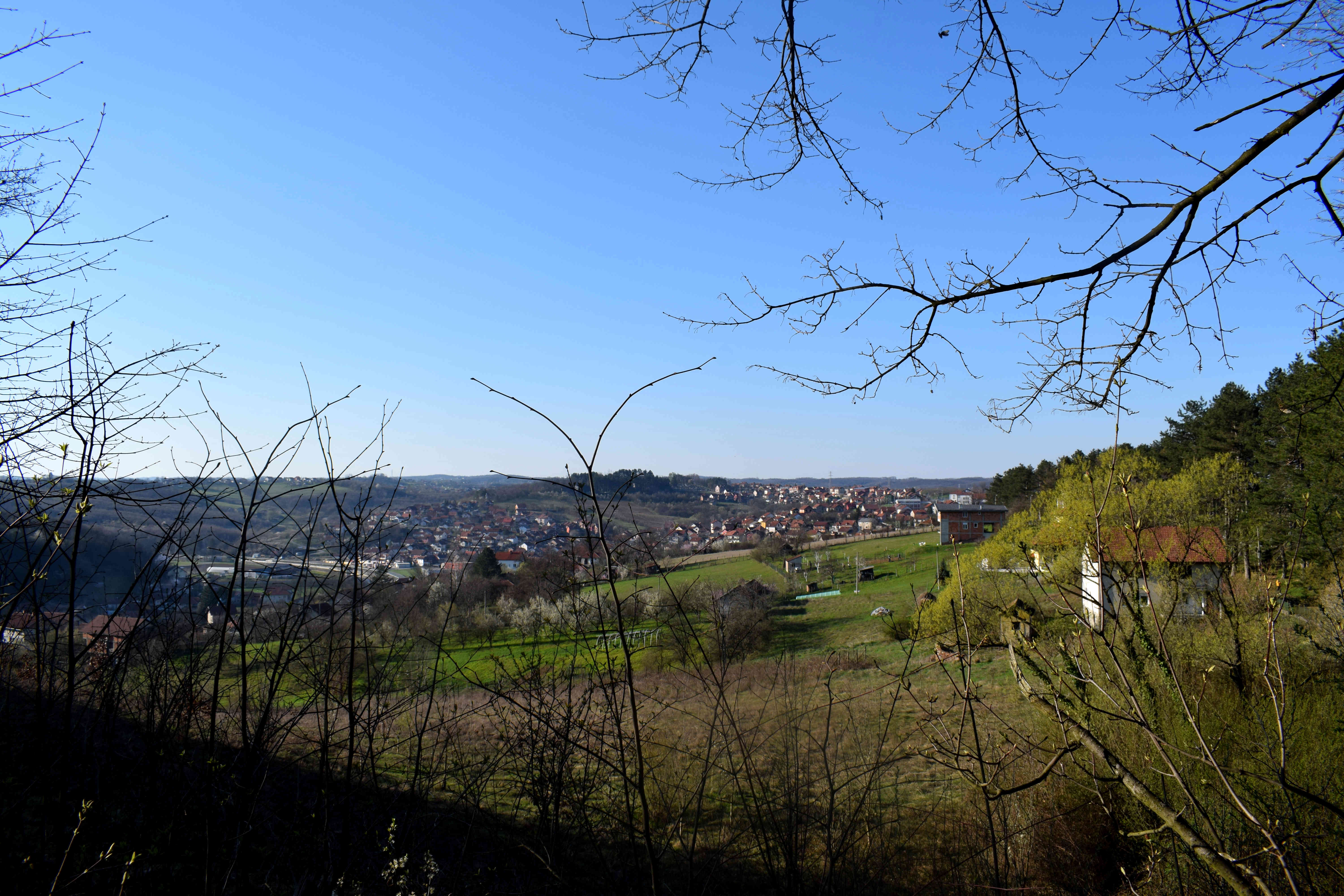 The peak of the hill.
The peak of the hill.
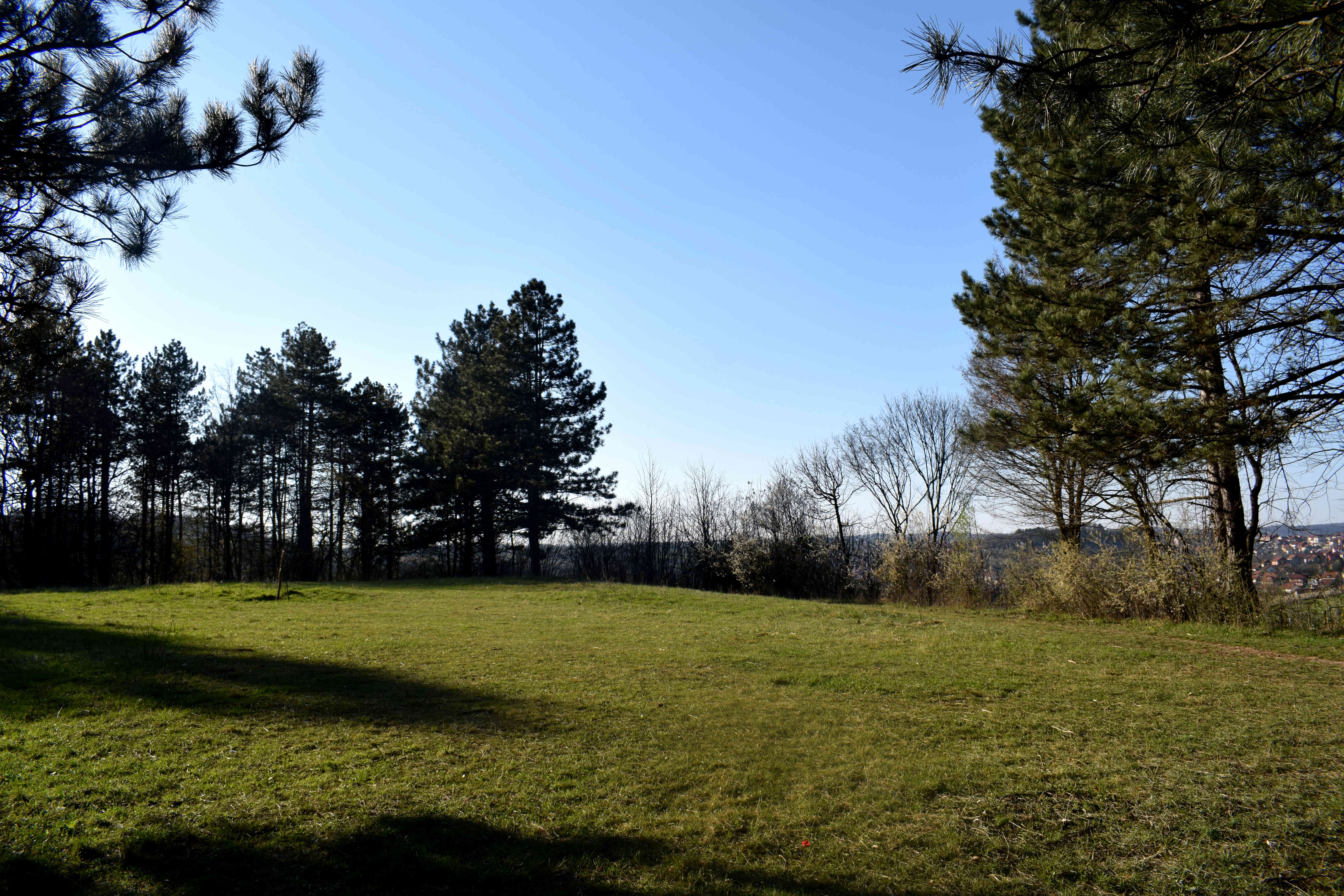 Walking back down toward the center you could see a wide, panoramic view of Valjevo.
Walking back down toward the center you could see a wide, panoramic view of Valjevo.
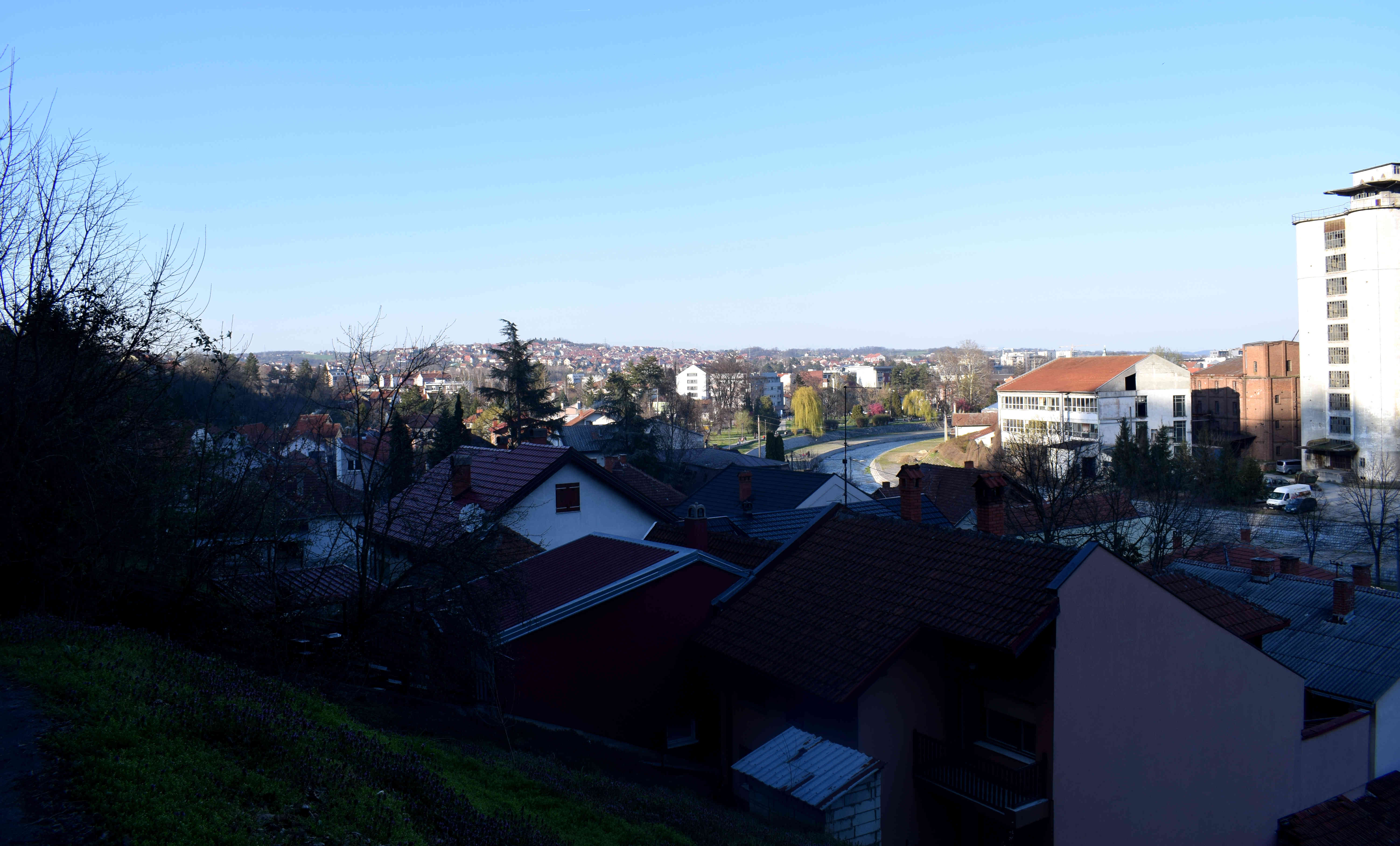 While we found Valjevo overall to be clean with little trash around, this sight horrified us.
While we found Valjevo overall to be clean with little trash around, this sight horrified us.
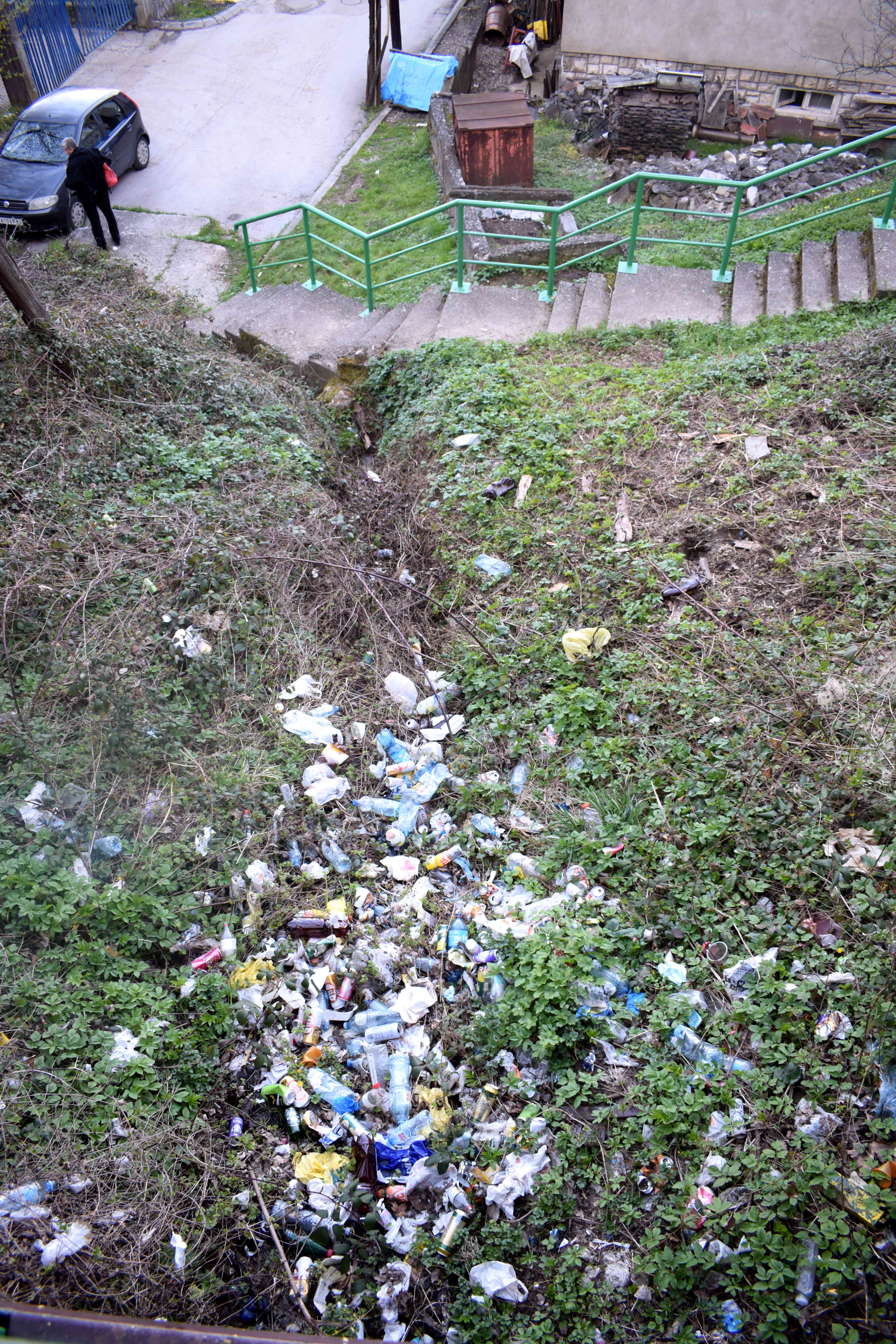 Simple trashcans next to these benches where people obviously spend their time drinking would solve this problem. As thing stand now, people just throw their bottles and beer cans under the bridge when they finish drinking and move on.
Simple trashcans next to these benches where people obviously spend their time drinking would solve this problem. As thing stand now, people just throw their bottles and beer cans under the bridge when they finish drinking and move on.
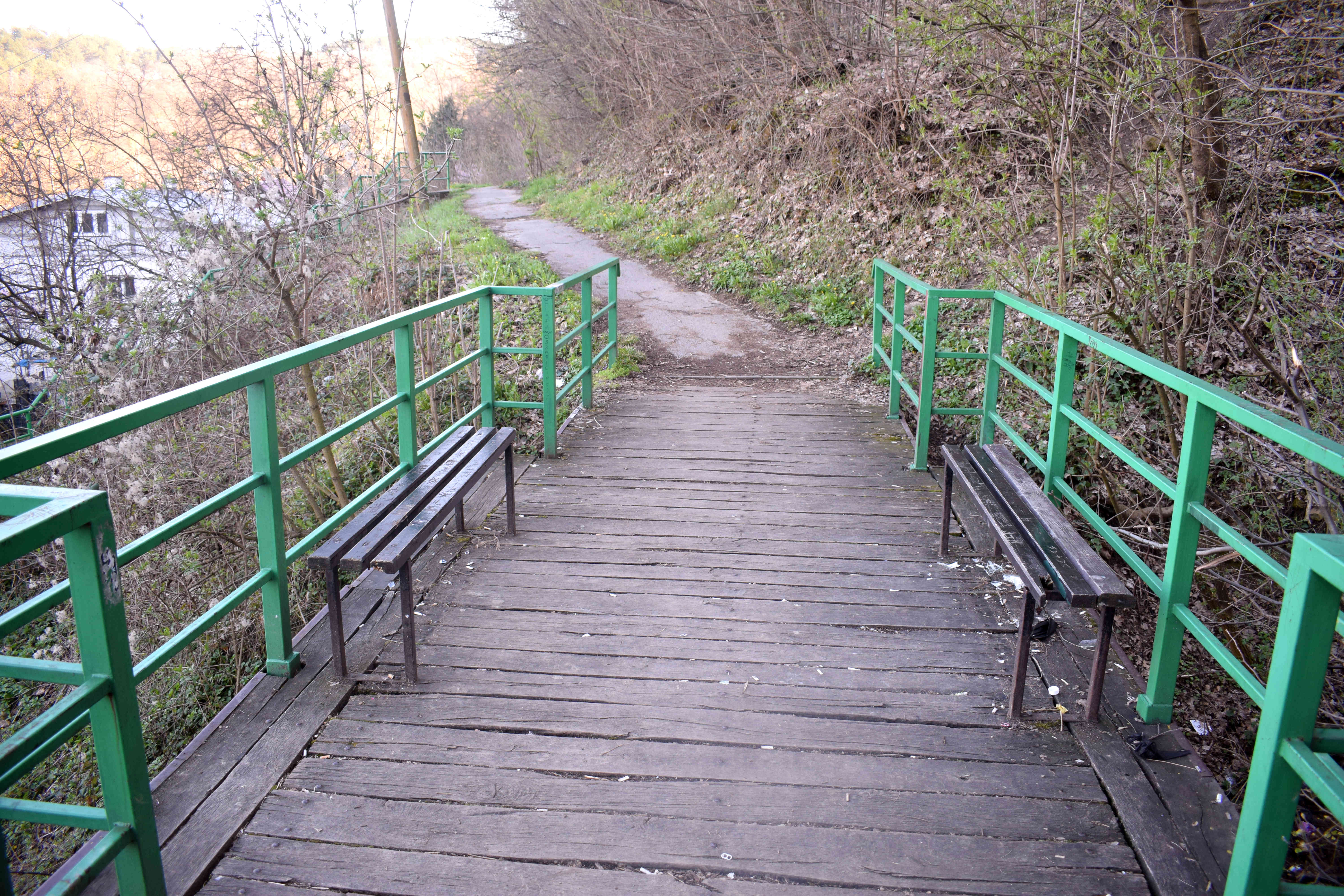 Back in the center I spotted a classic Yugo. In my opinion Serbia should implement a program to have one restored Yugo parked in the center of all of its cities.
Back in the center I spotted a classic Yugo. In my opinion Serbia should implement a program to have one restored Yugo parked in the center of all of its cities.
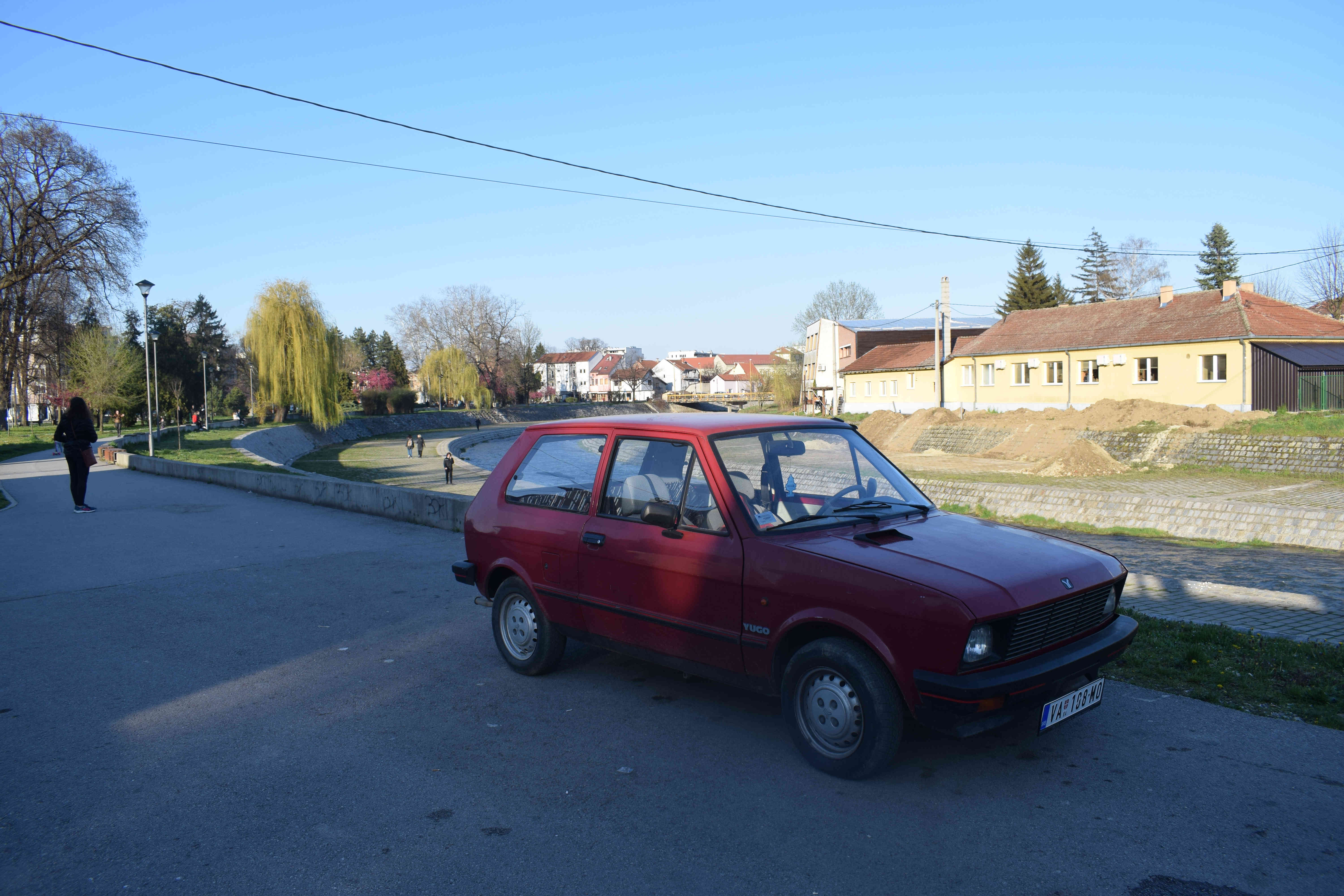 A drinking fountain in the center. Just like other cities in the Balkans located in mountainous areas, Valjevo has clean drinking water.
A drinking fountain in the center. Just like other cities in the Balkans located in mountainous areas, Valjevo has clean drinking water.
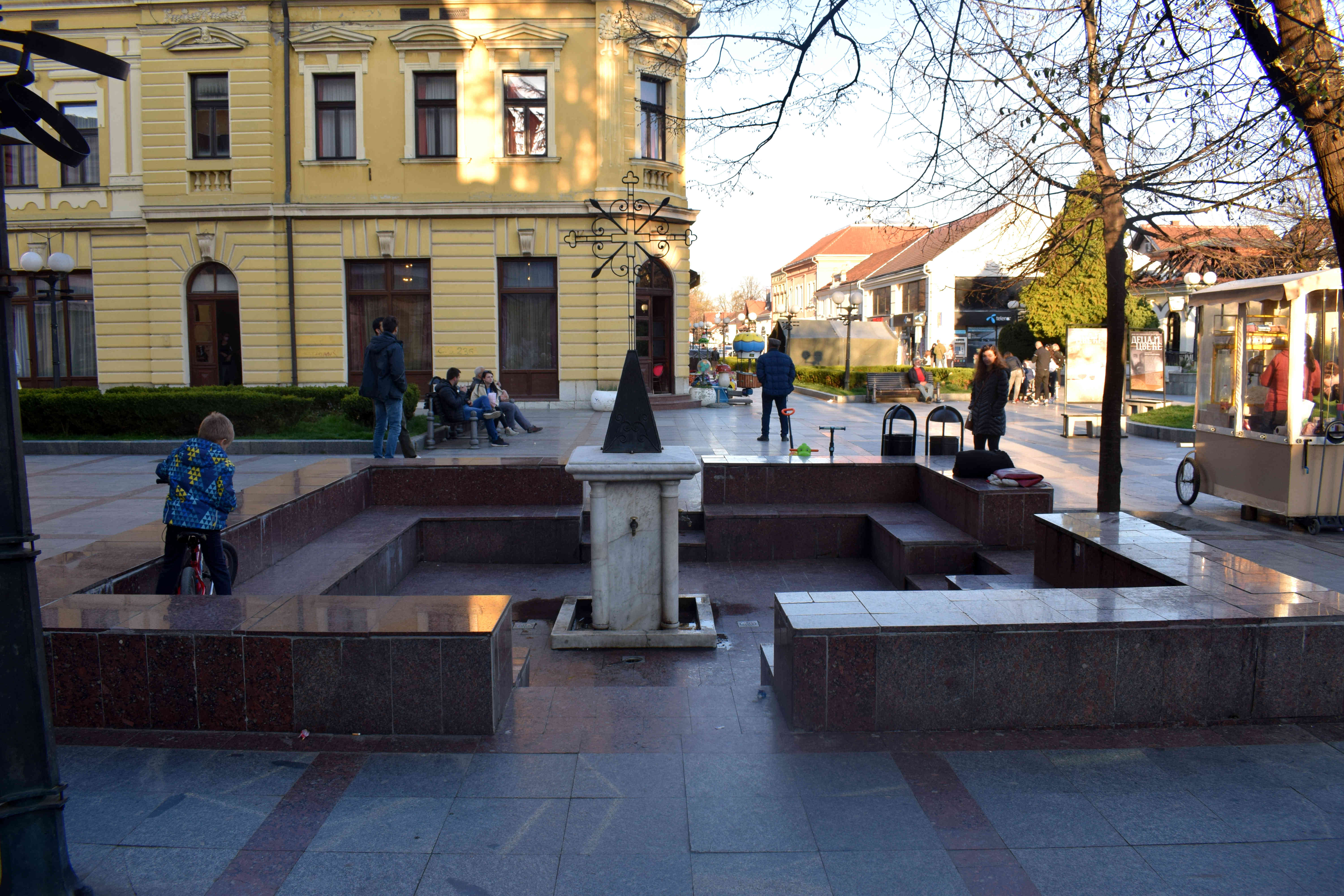 An unpedestrianized section of Knez Milos street. The city should pedestrianize this section of the street as well. Not only is this street made of old cobblestone, Valjevo’s city museum is located on it, along with other historical buildings. Imagine how much nicer this street would be without cars parked everywhere.
An unpedestrianized section of Knez Milos street. The city should pedestrianize this section of the street as well. Not only is this street made of old cobblestone, Valjevo’s city museum is located on it, along with other historical buildings. Imagine how much nicer this street would be without cars parked everywhere.
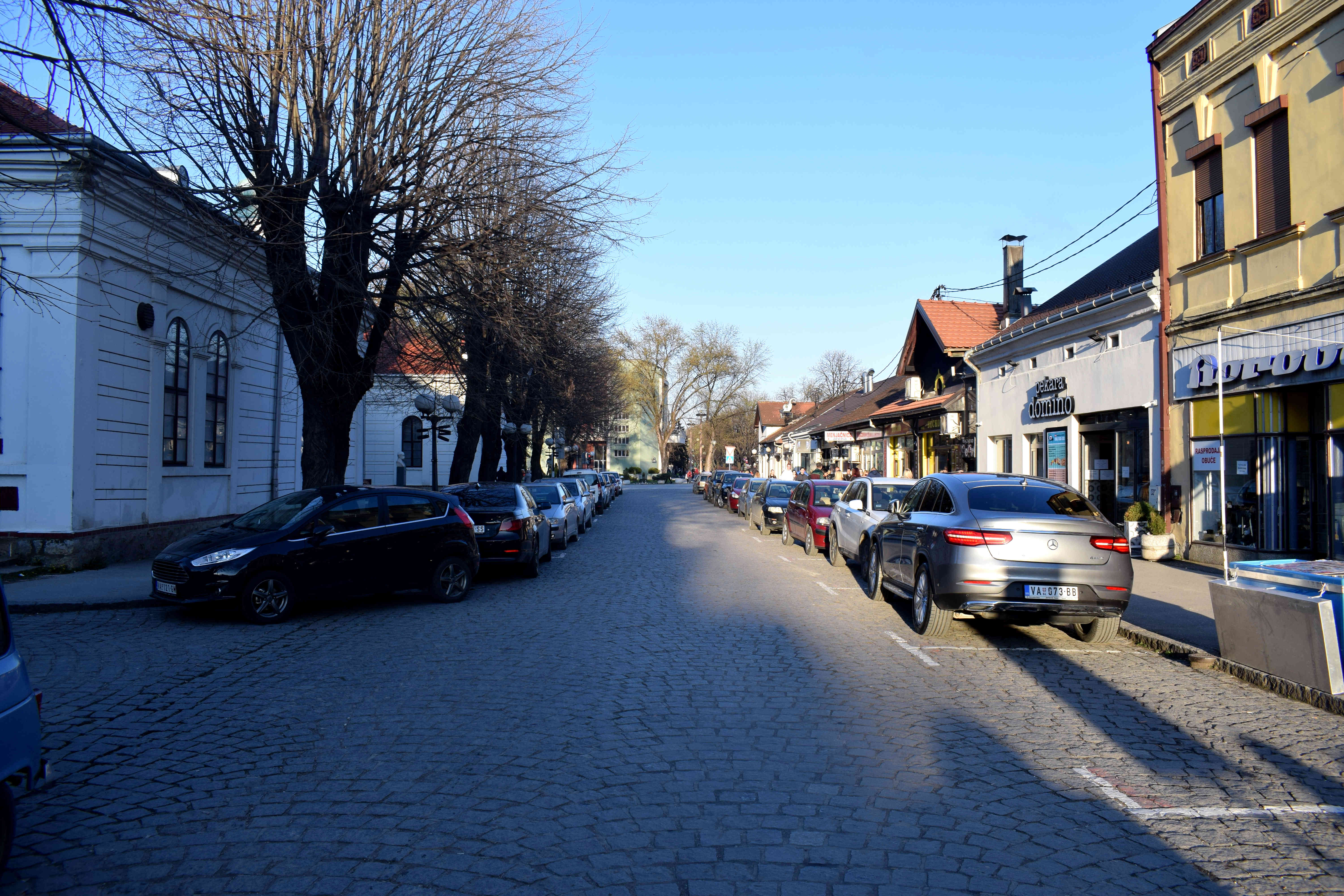 Valjevo’s main grammer school, built in 1870 and reconstructed in 1906, it remains one of the city’s most impressive buildings.
Valjevo’s main grammer school, built in 1870 and reconstructed in 1906, it remains one of the city’s most impressive buildings.
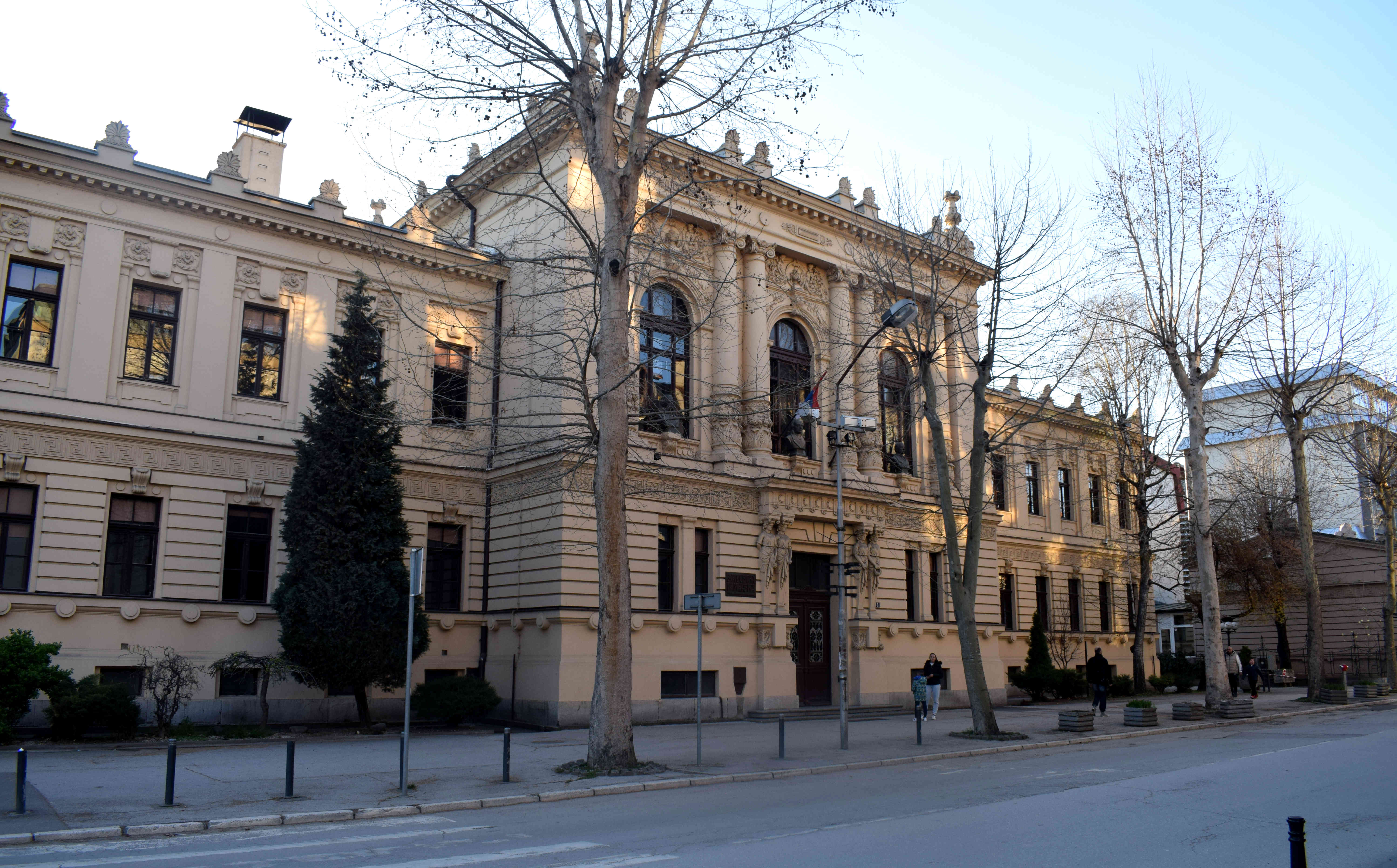 A beautiful wooden door greets students as they enter the building. The school remains in operation today.
A beautiful wooden door greets students as they enter the building. The school remains in operation today.
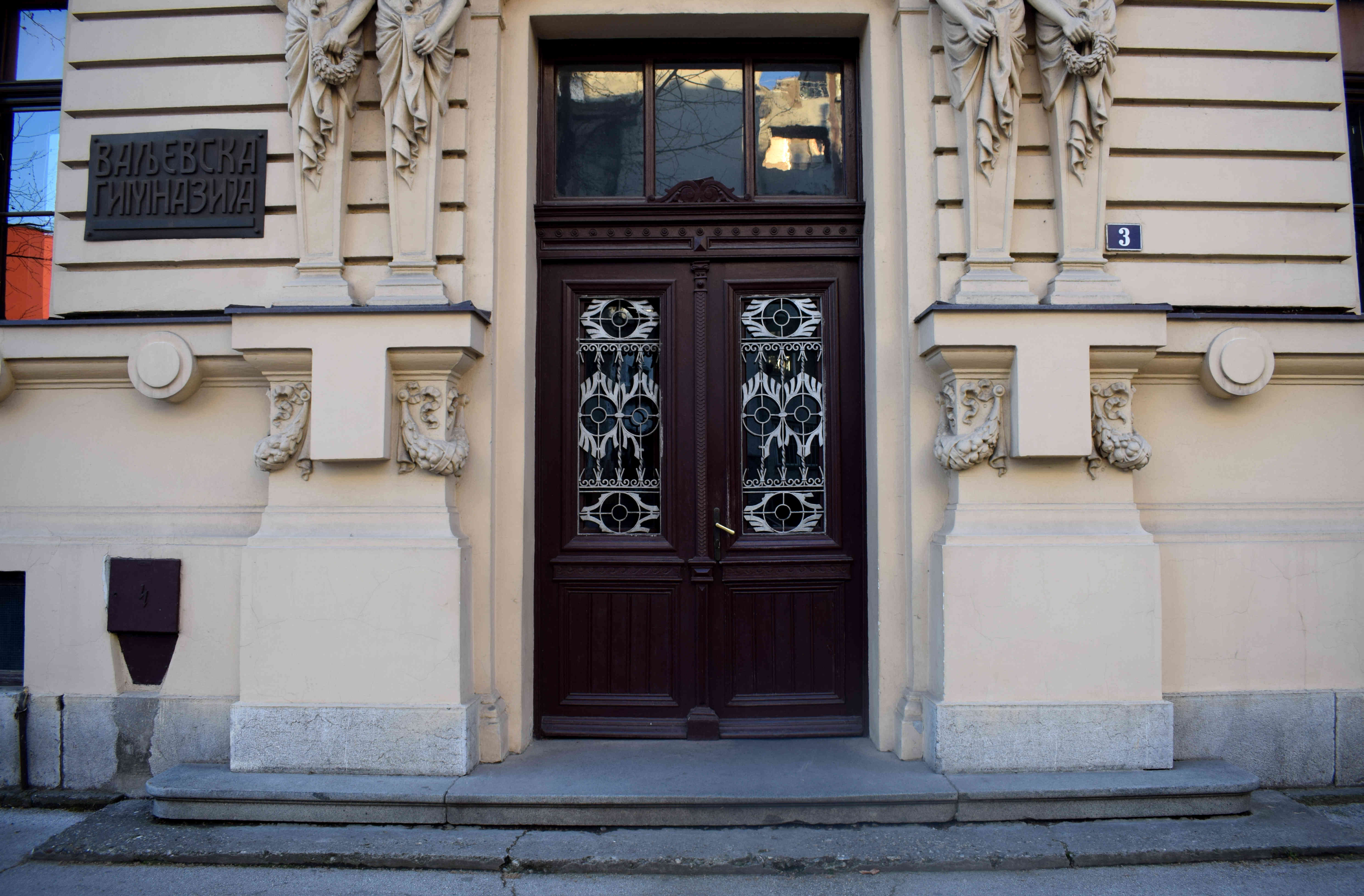 Across from the Valjevo Gymnasium is Valjevo’s Cultural Center. The building is a protected monument from the communist era, built between 1953-1960.
Across from the Valjevo Gymnasium is Valjevo’s Cultural Center. The building is a protected monument from the communist era, built between 1953-1960.
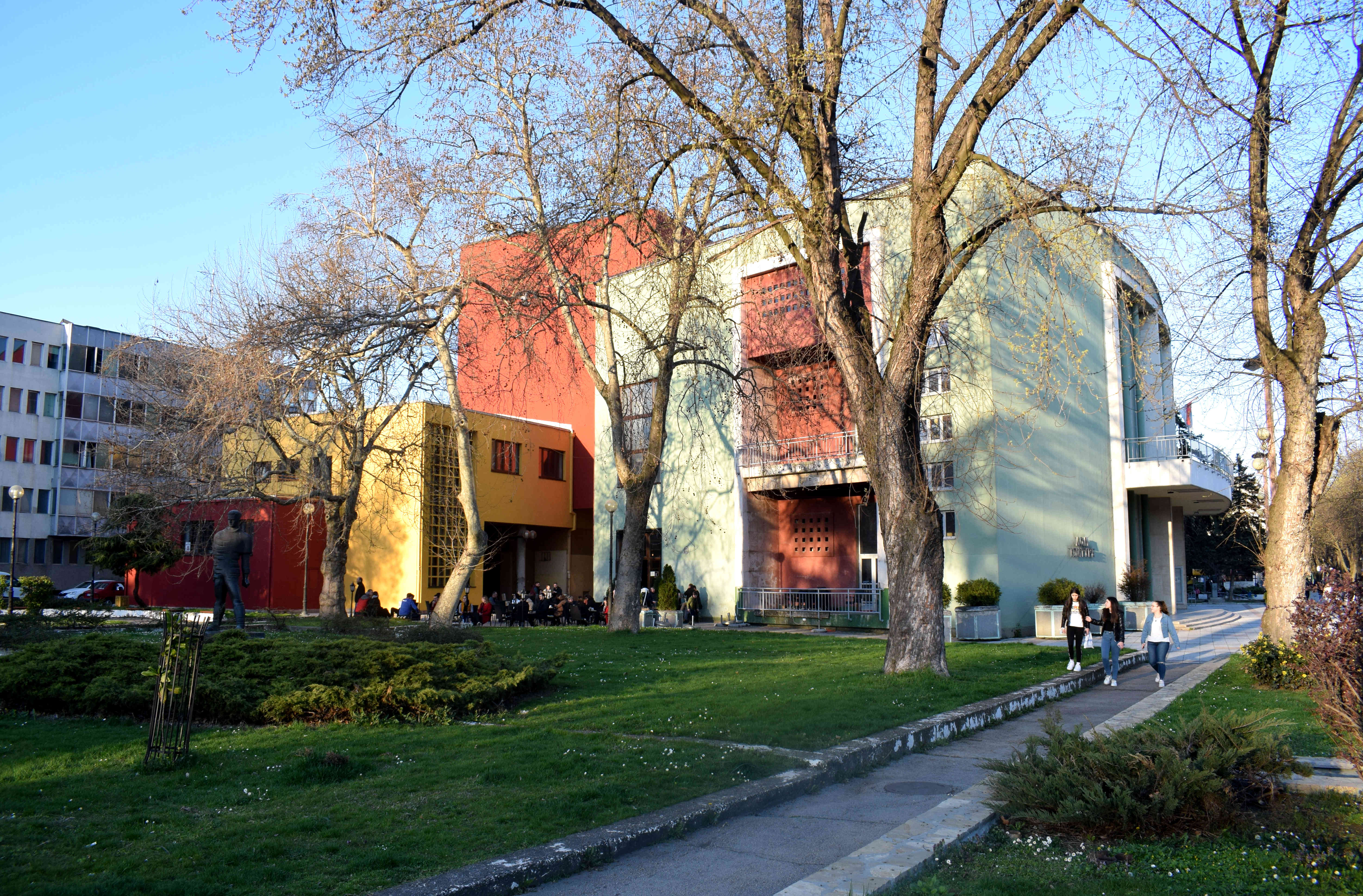 In front of the building is a pedestrian area where there were several kids playing, riding bikes, rollerblading and parents walking their dogs.
In front of the building is a pedestrian area where there were several kids playing, riding bikes, rollerblading and parents walking their dogs.
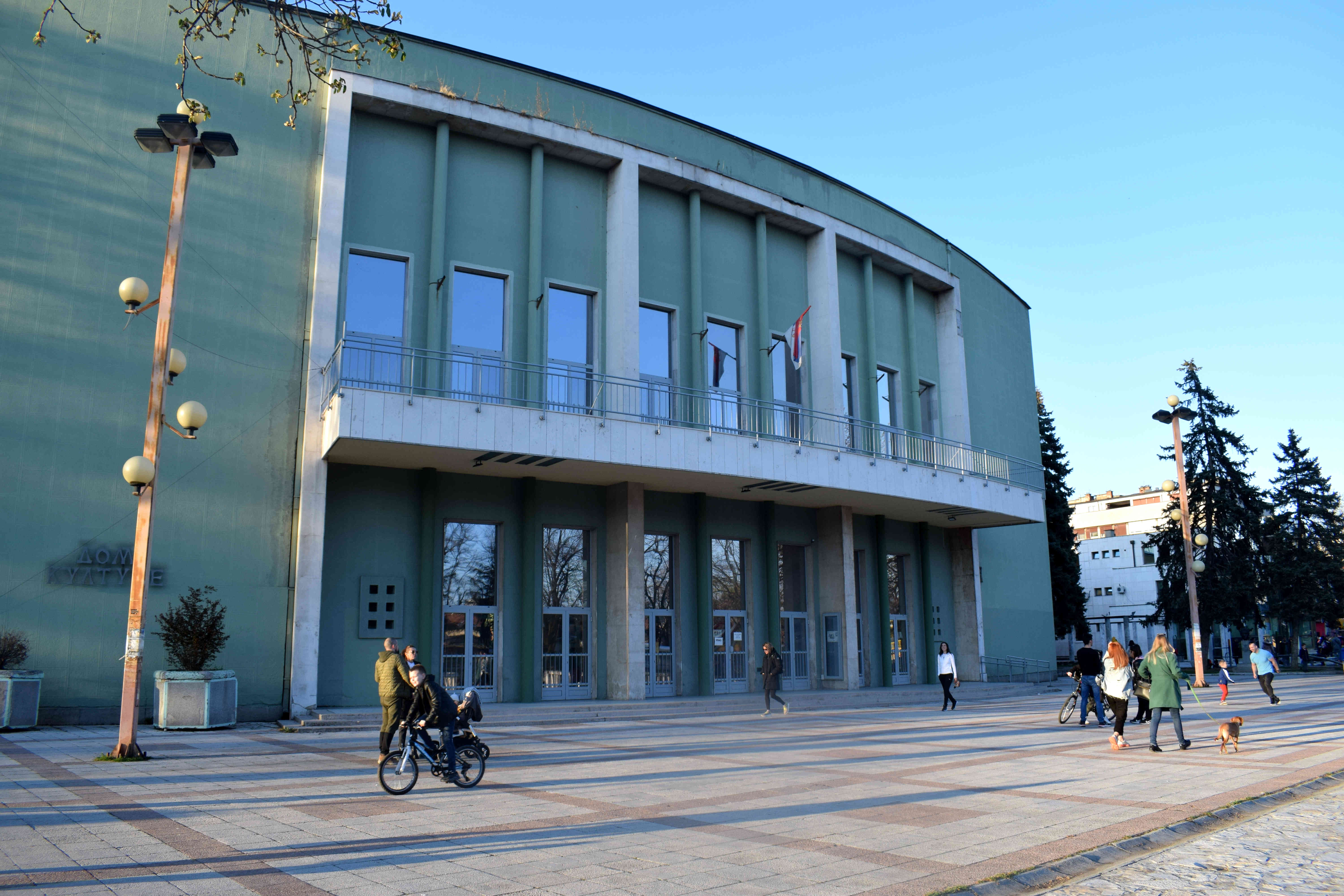 There’s also an impressive staircase that offers access to the Kolubara.
There’s also an impressive staircase that offers access to the Kolubara.
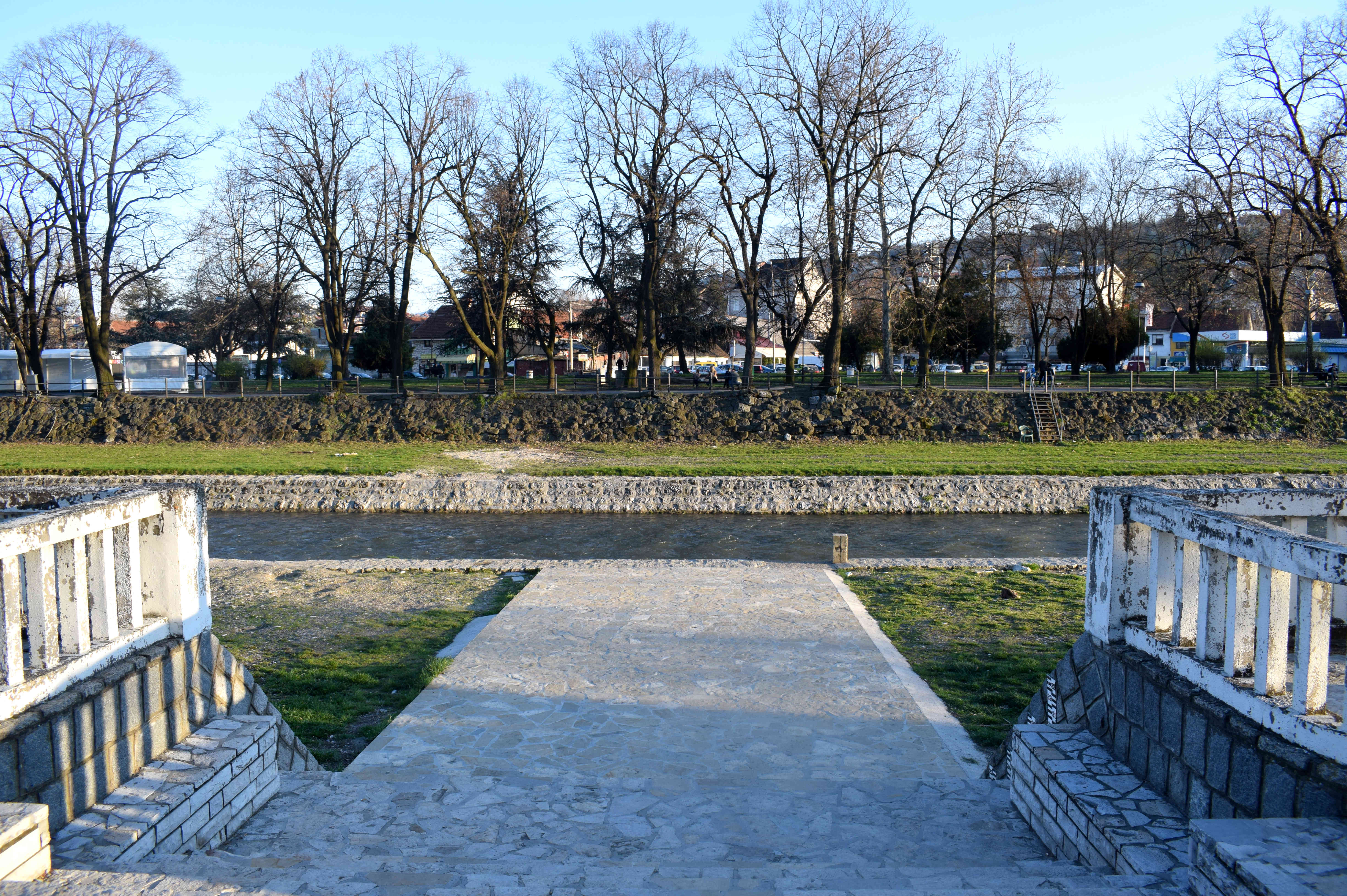 A decent playground for kids to play in.
A decent playground for kids to play in.
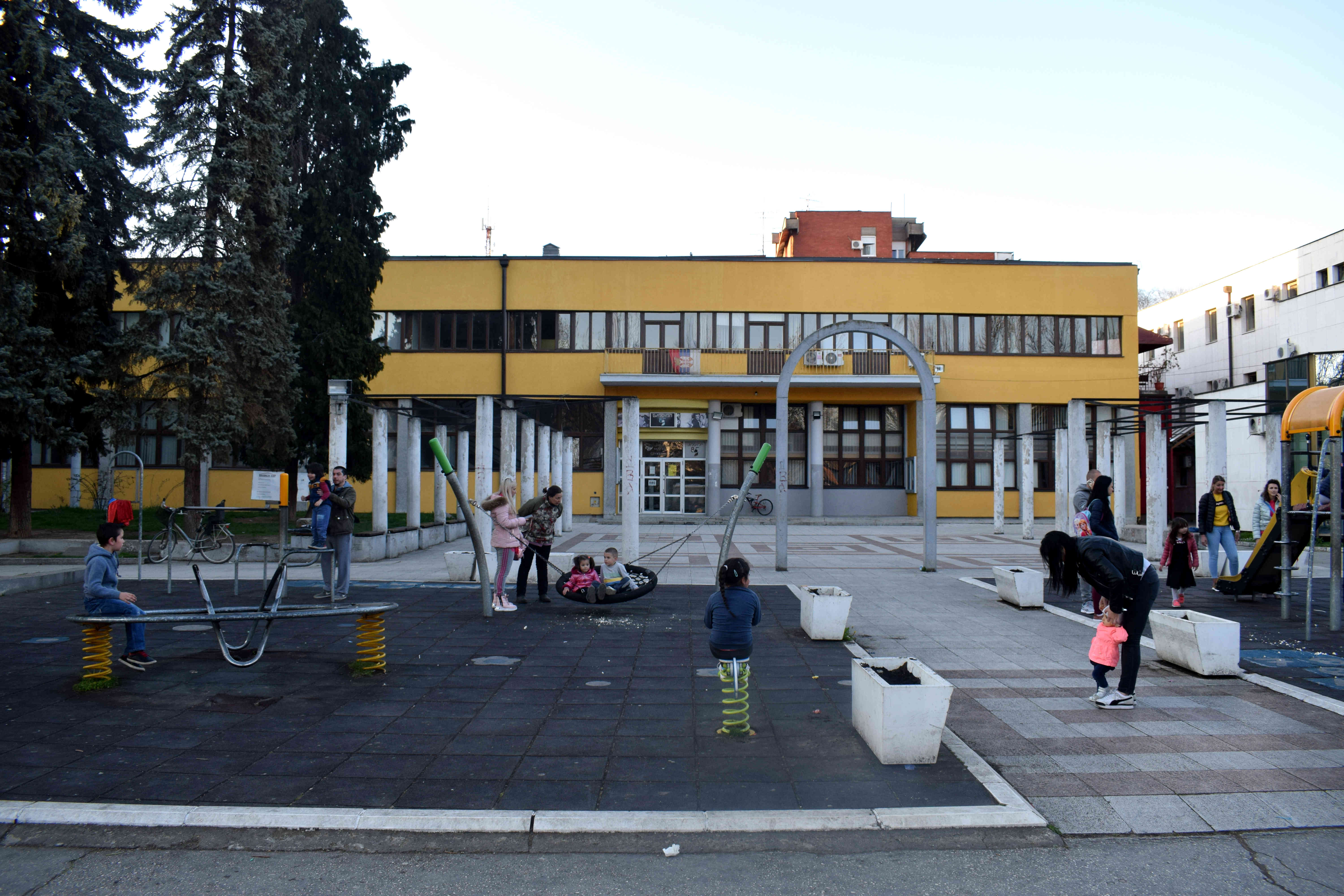 Valjevo also has several pedestrian bridges in the city. This one was recently renovated with funding from the European Union.
Valjevo also has several pedestrian bridges in the city. This one was recently renovated with funding from the European Union.
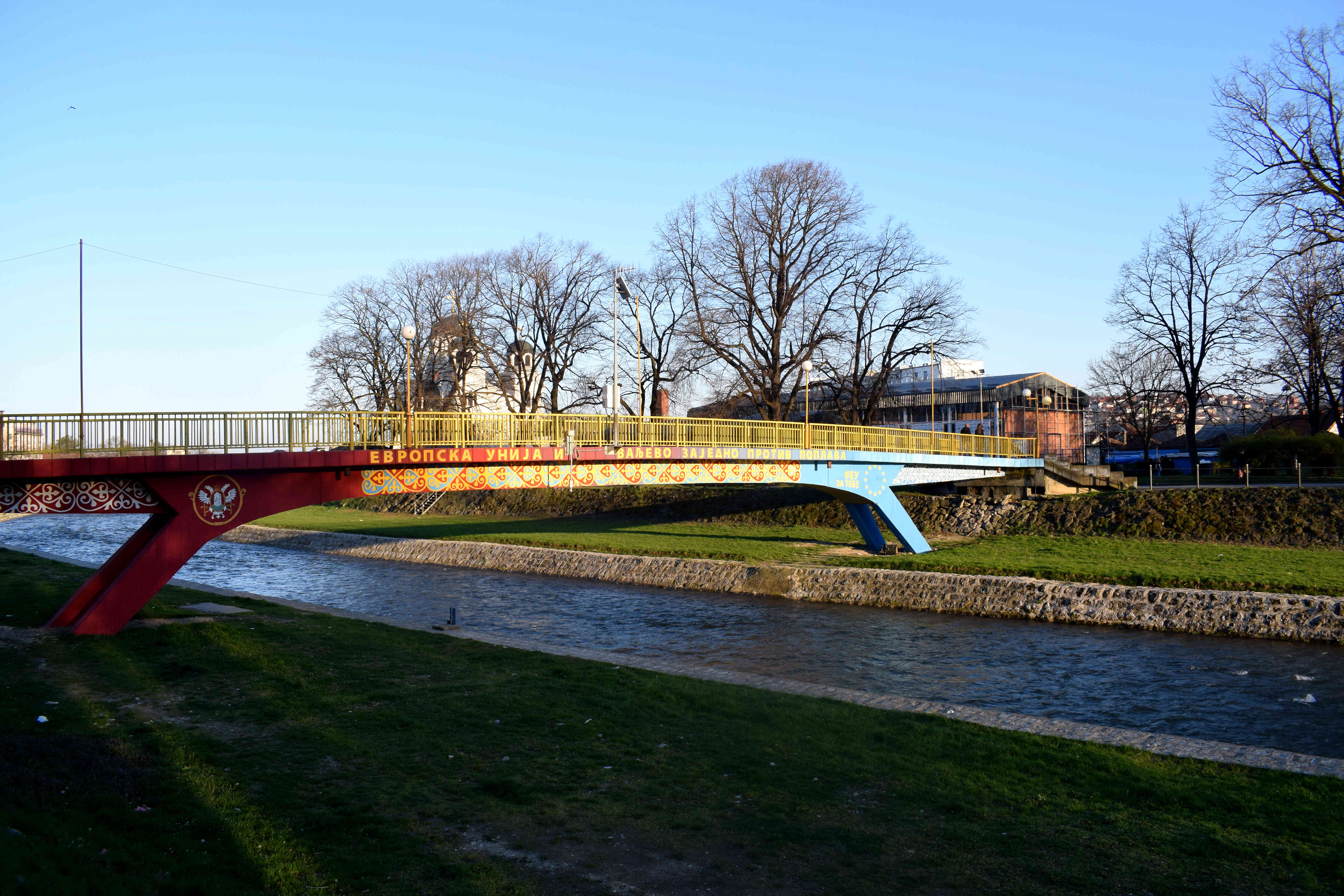 Crossing the bridge.
Crossing the bridge.
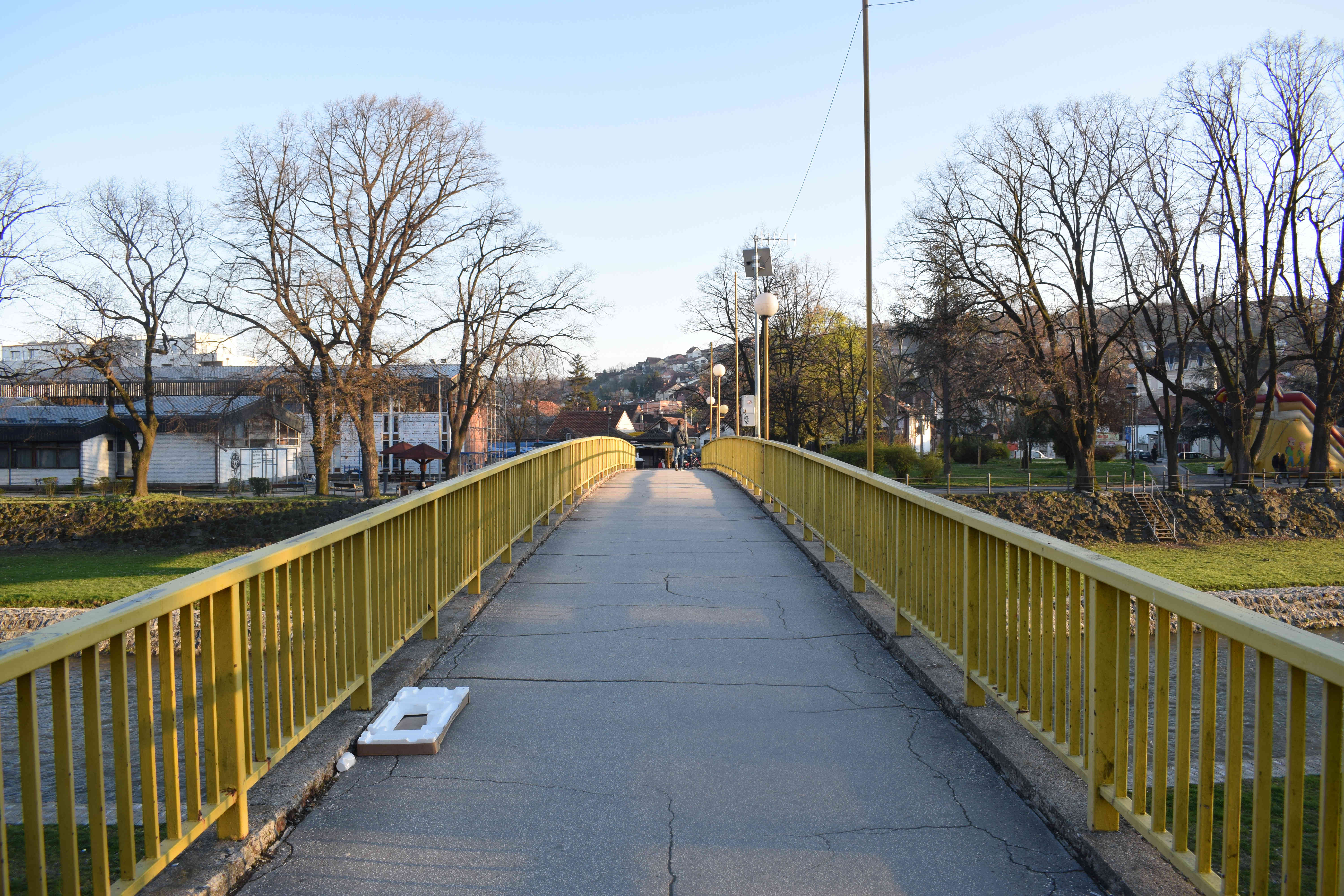 Further along the Kolubara River you reach a section with several cafes and bars. I can imagine this being a lively place in the summer when all the bars are working with lots of nightlife.
Further along the Kolubara River you reach a section with several cafes and bars. I can imagine this being a lively place in the summer when all the bars are working with lots of nightlife.
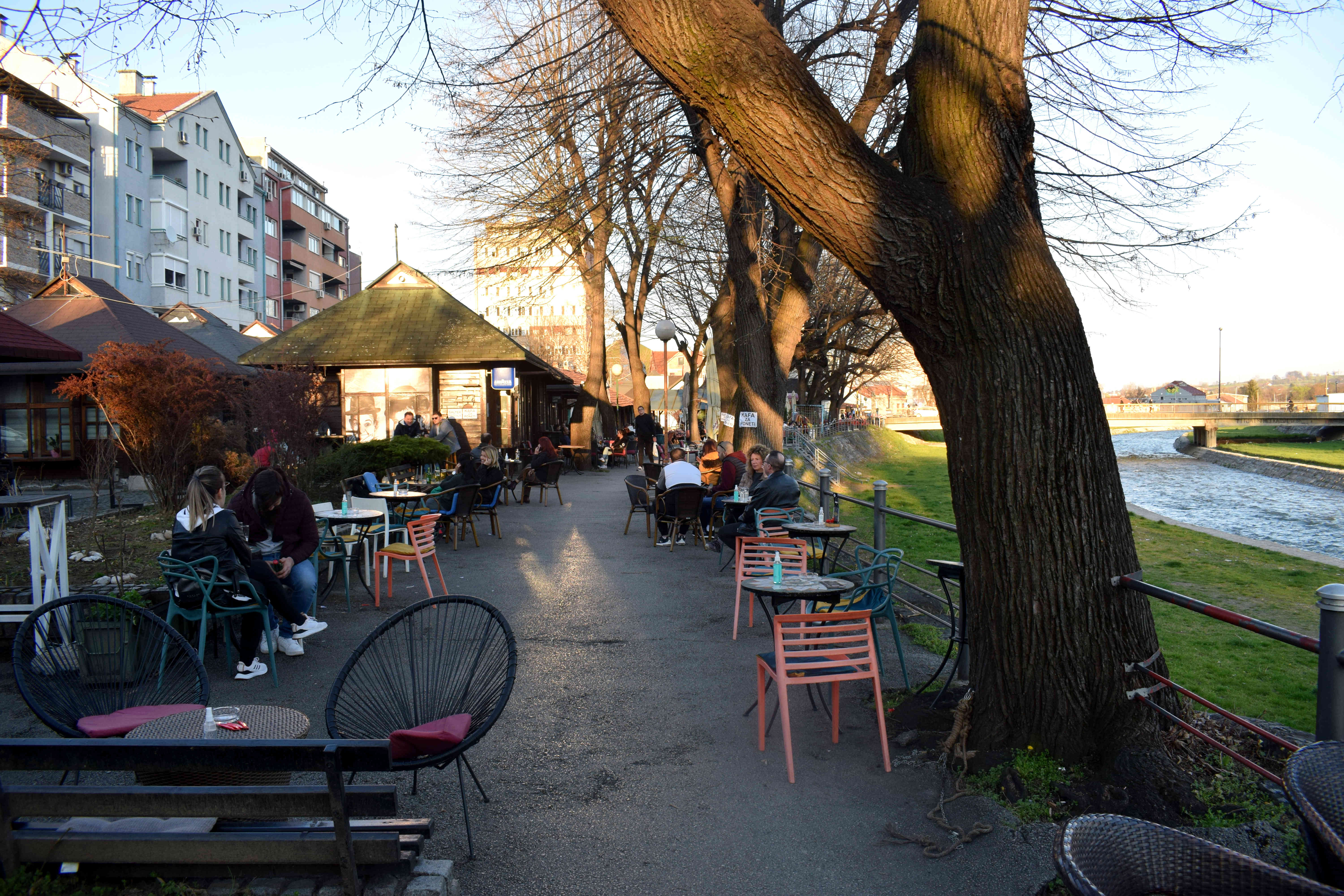 Towards the end of the urban part of the Kolubara you reach Valjevo’s Vaskresenje Temple. Construction of the church began in 1992 before being stalled almost two decades due to the Balkan wars. The exterior of the church was finished only in 2010, while work is still underway to finish the interior.
Towards the end of the urban part of the Kolubara you reach Valjevo’s Vaskresenje Temple. Construction of the church began in 1992 before being stalled almost two decades due to the Balkan wars. The exterior of the church was finished only in 2010, while work is still underway to finish the interior.
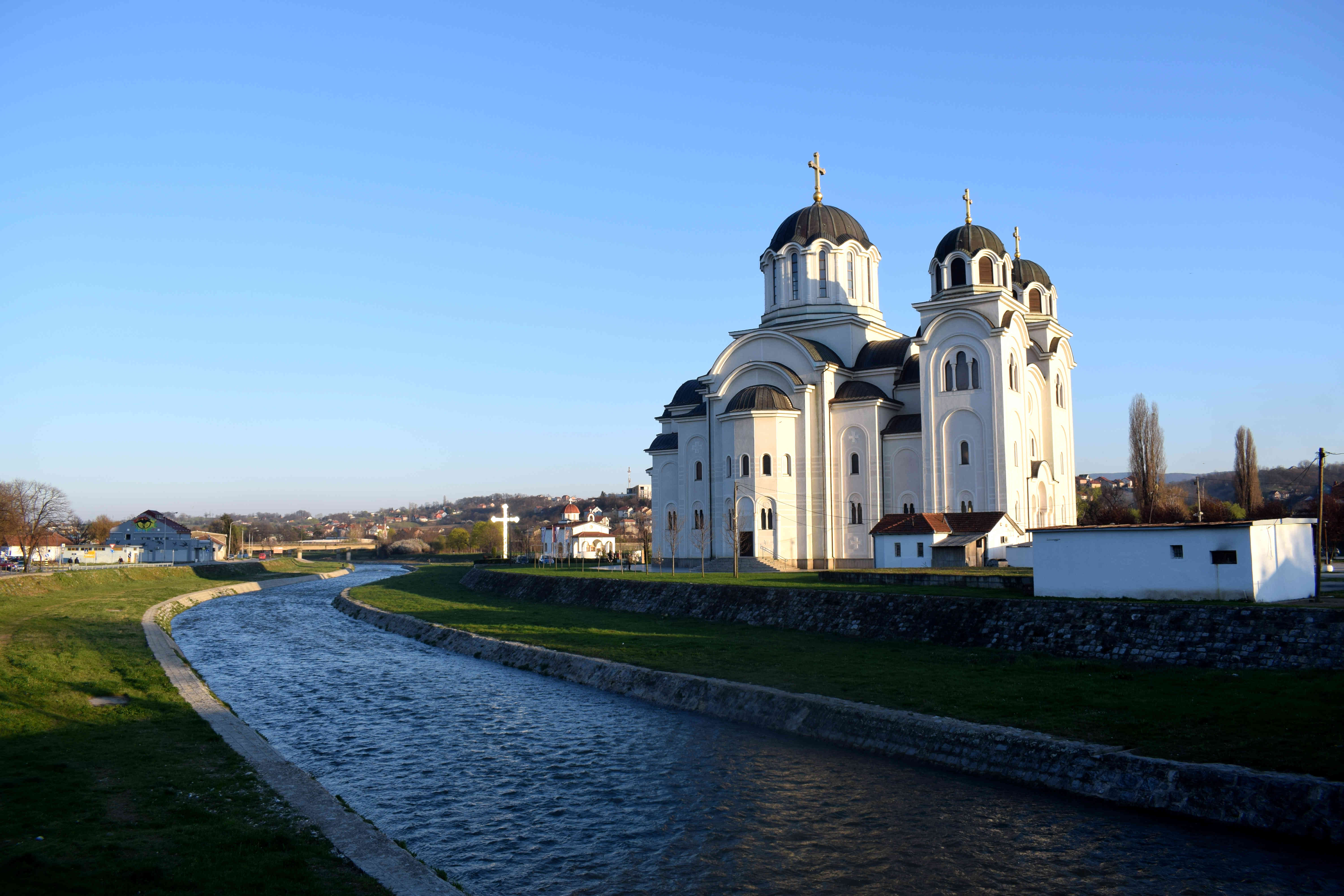 Across the church is the city’s main food market, or ‘pijaca’ in Serbian. The Valjevo Pijaca is a perfect example of how pijacas across Serbia should look like. The stands are clean and neat.
Across the church is the city’s main food market, or ‘pijaca’ in Serbian. The Valjevo Pijaca is a perfect example of how pijacas across Serbia should look like. The stands are clean and neat.
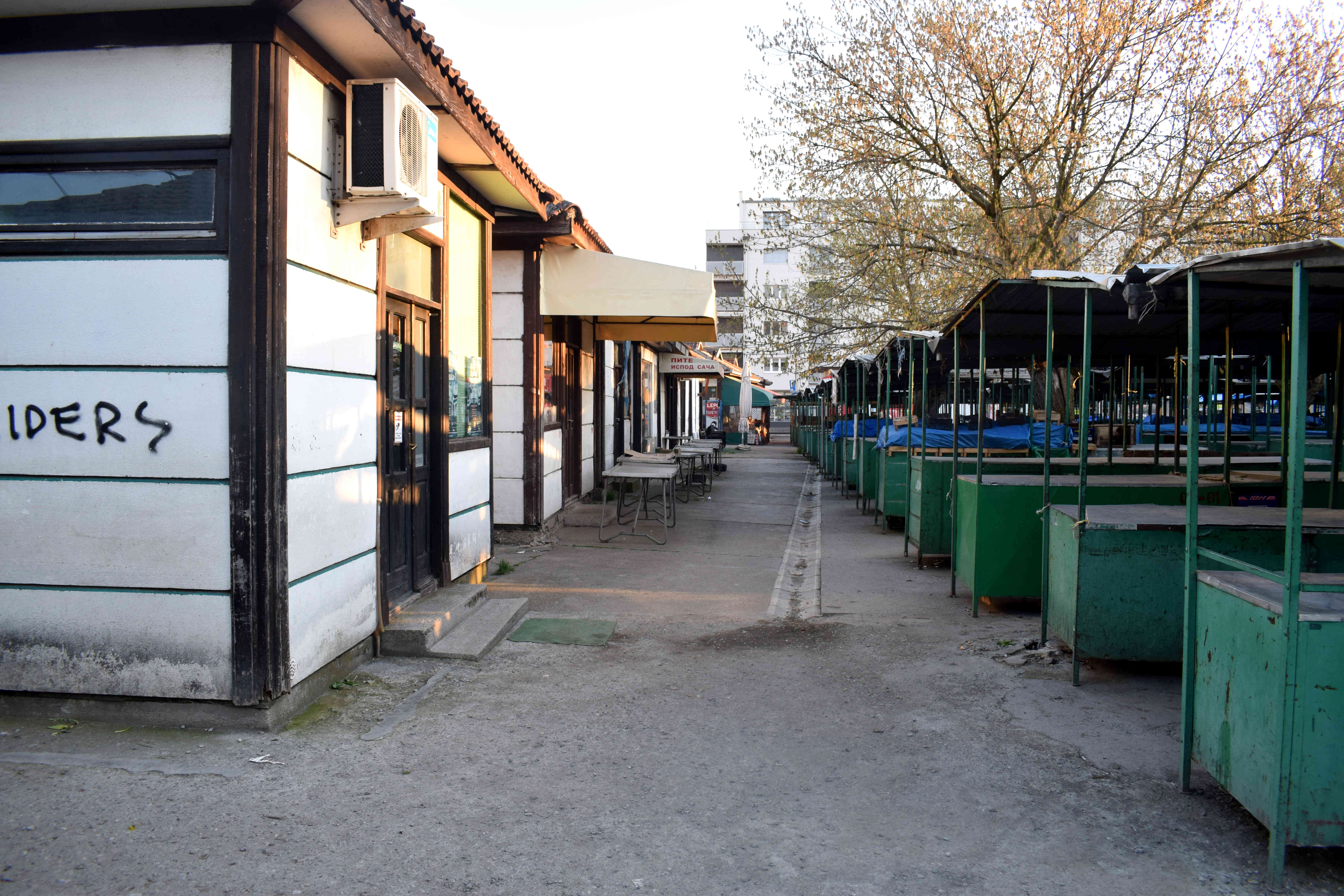 And the surrounding buildings are set up in a traditional style.
And the surrounding buildings are set up in a traditional style.
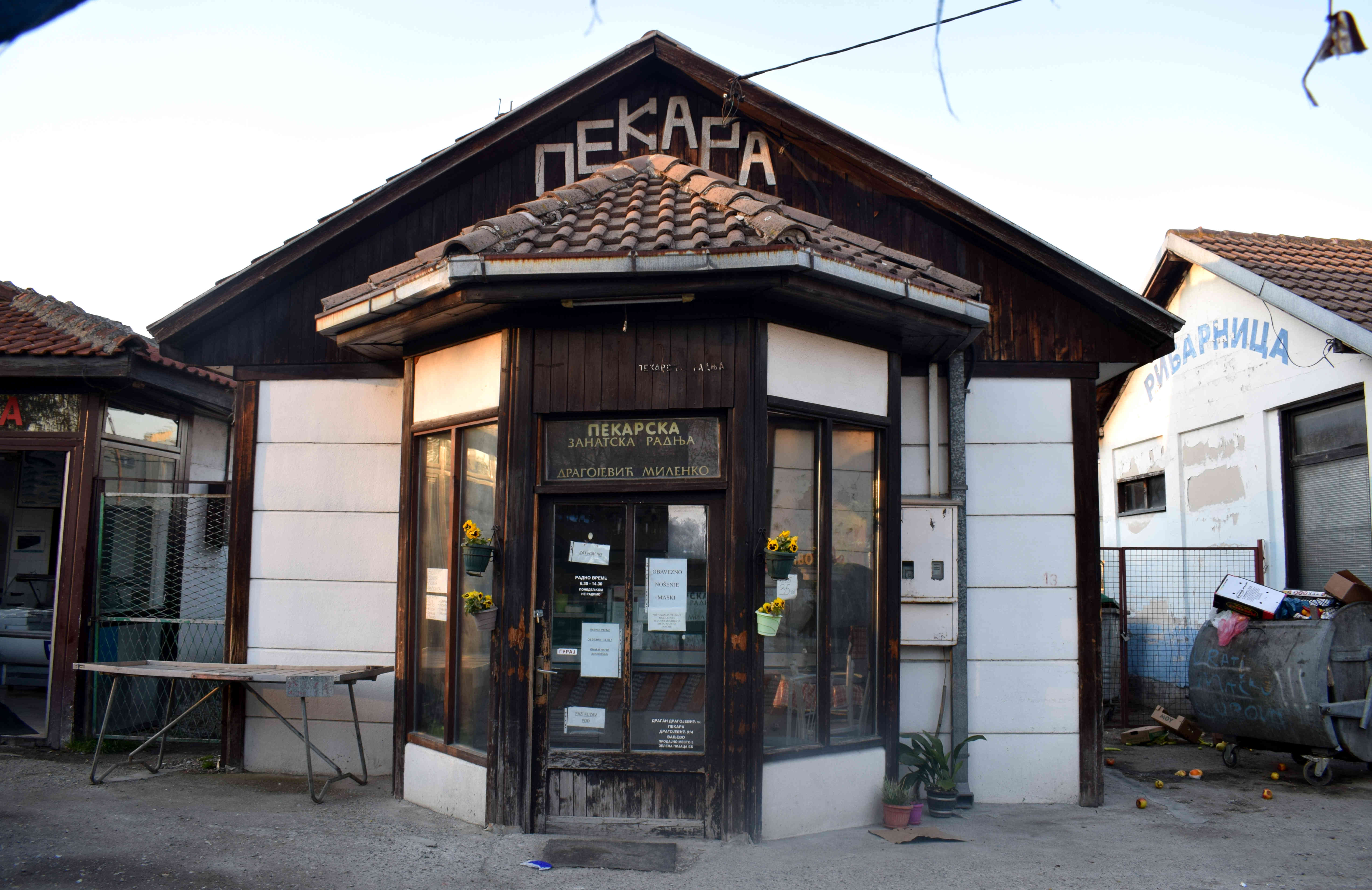 Some friendly locals.
Some friendly locals.
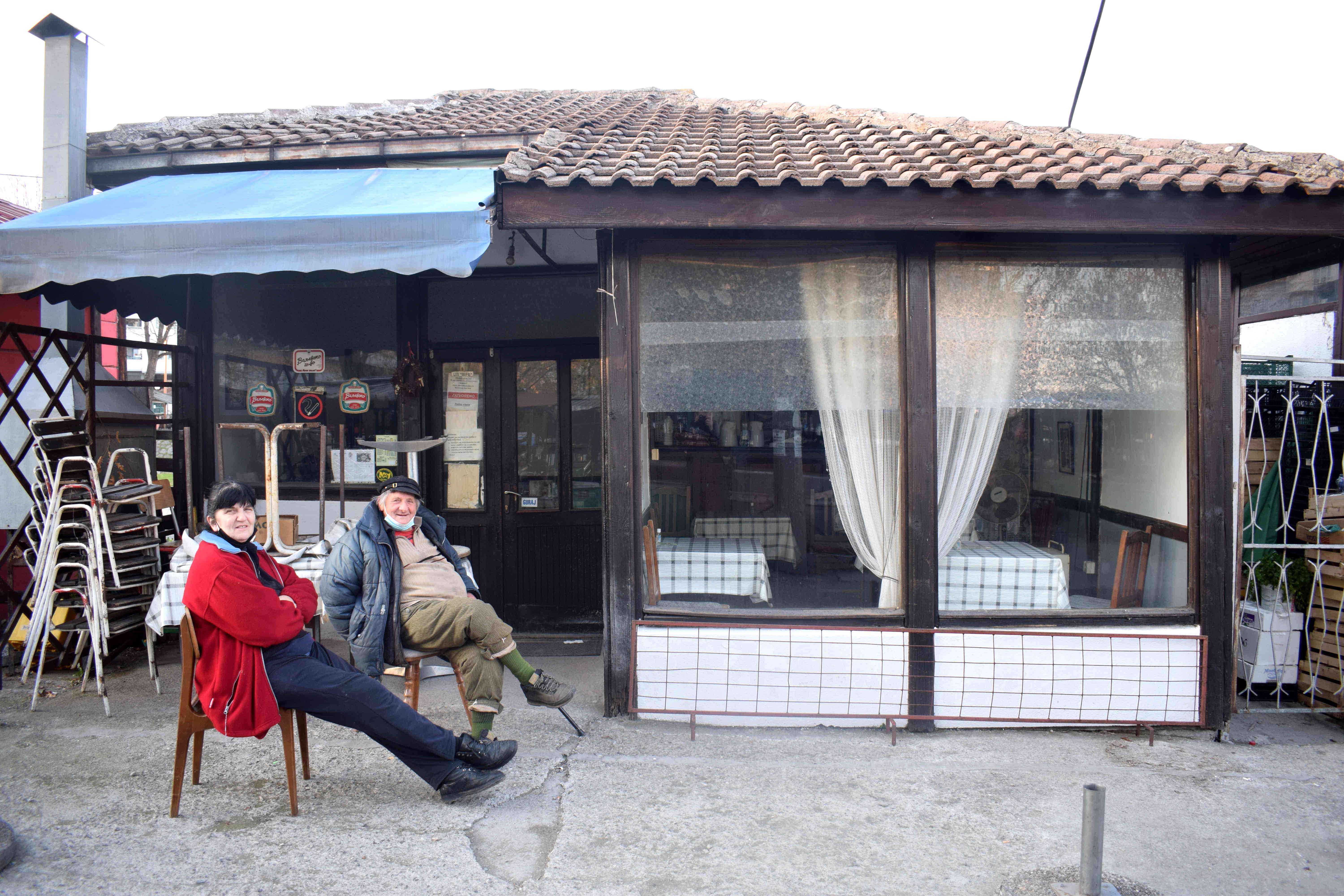 We passed through a small pocket park while heading back to the train station. On the other side of the Kolubara are the cafes and the nightlife district we just passed.
We passed through a small pocket park while heading back to the train station. On the other side of the Kolubara are the cafes and the nightlife district we just passed.
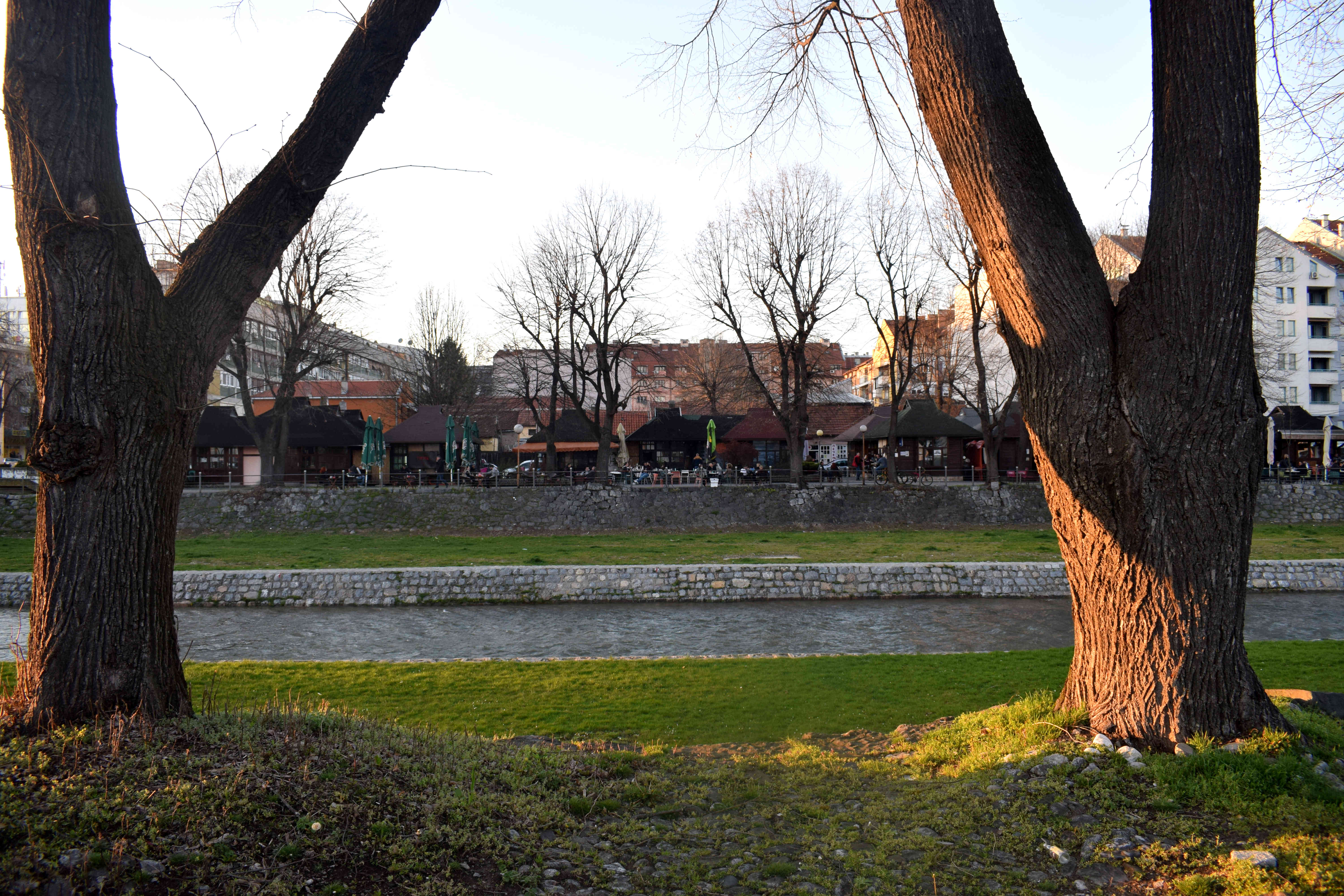 On the tree you can see an outdoor bookshelf. These bookshelves are a great way to promote the reading in cities. They are popular in neighborhoods in the USA and Europe. Something didn’t work out in Serbia though, because all the books were gone.
On the tree you can see an outdoor bookshelf. These bookshelves are a great way to promote the reading in cities. They are popular in neighborhoods in the USA and Europe. Something didn’t work out in Serbia though, because all the books were gone.
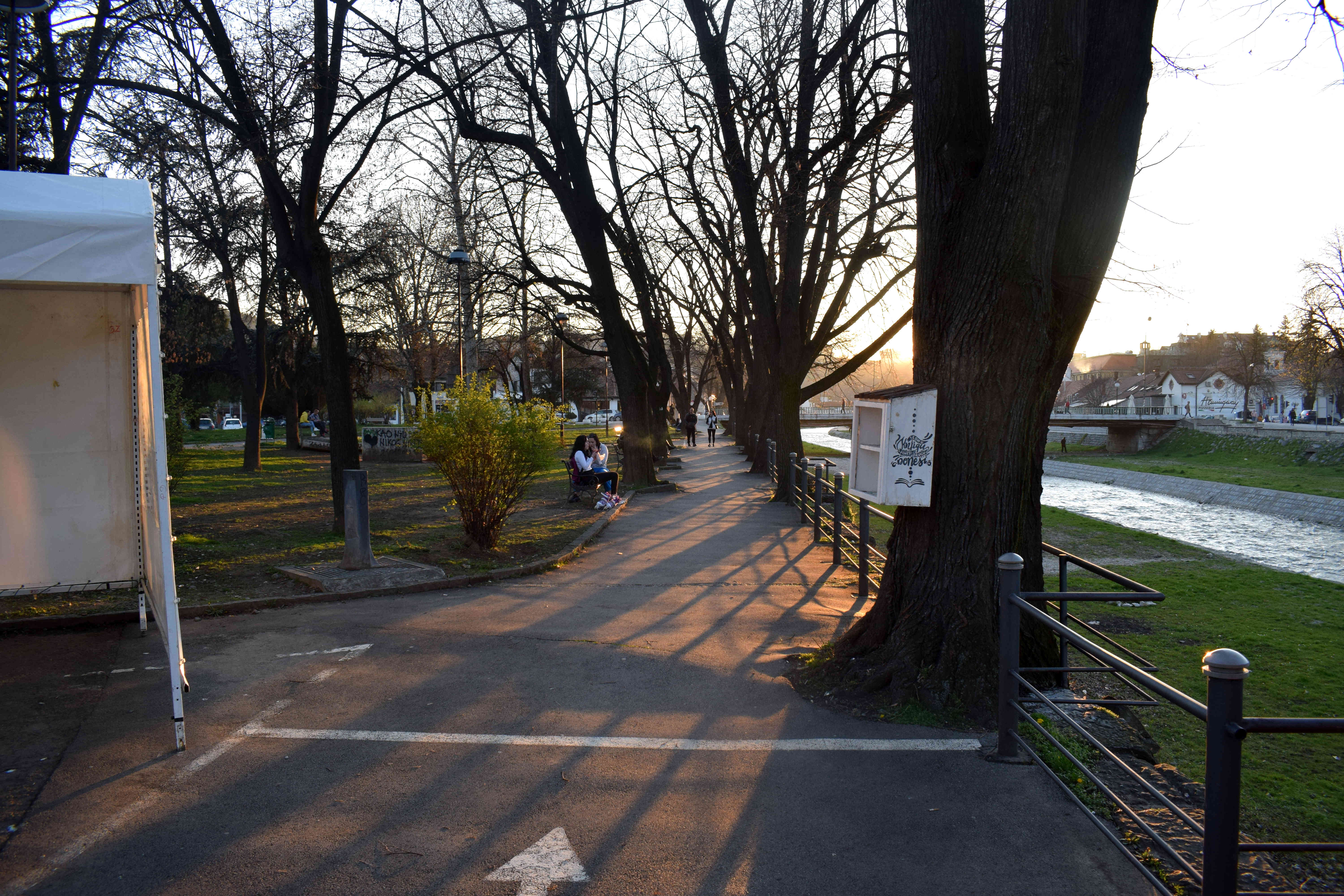 A look at Valjevo’s Culture Center from the other side of the river.
A look at Valjevo’s Culture Center from the other side of the river.
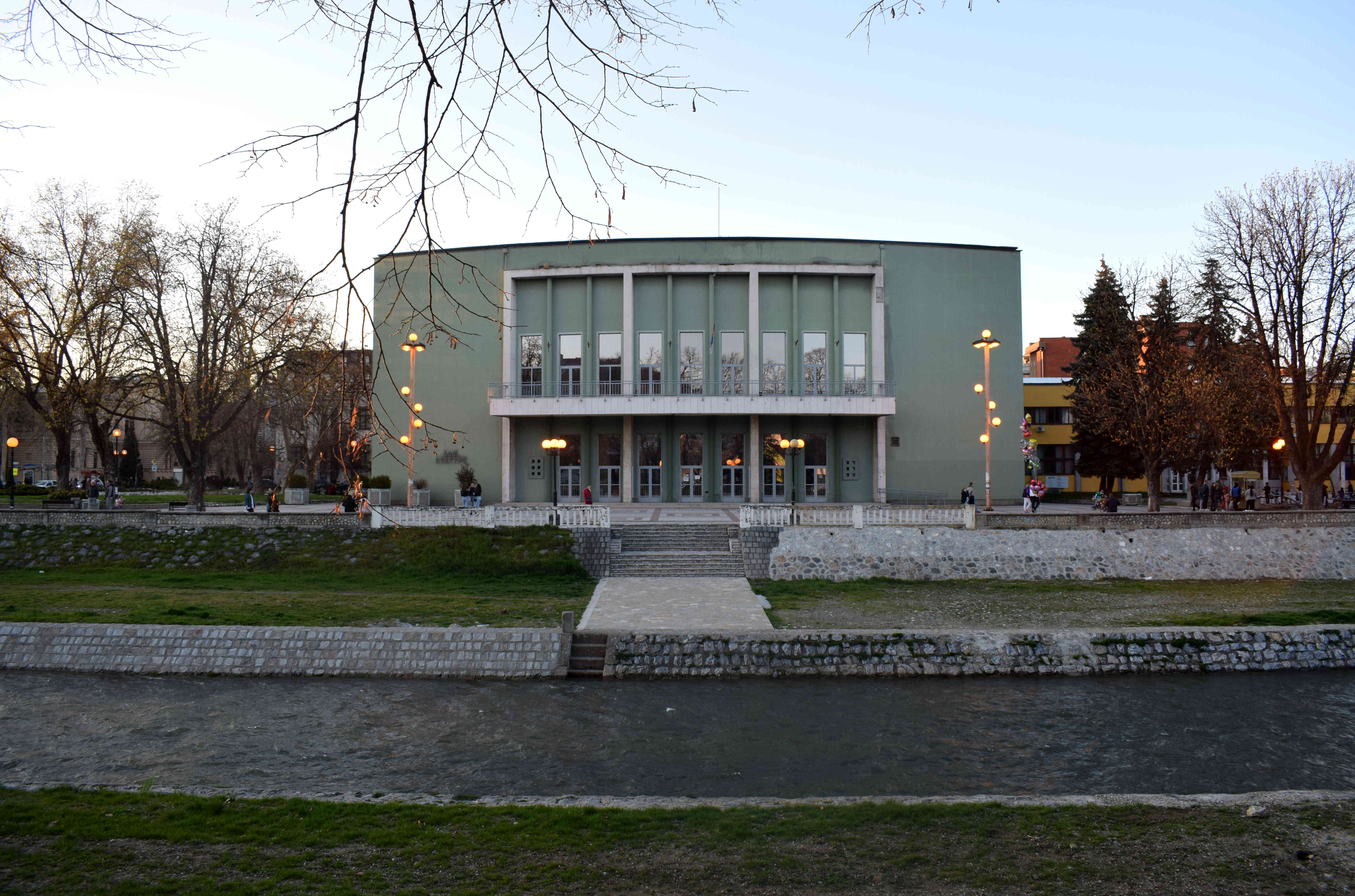 Heading back toward the train station, I passed by an antique store selling some retro alarm clocks.
Heading back toward the train station, I passed by an antique store selling some retro alarm clocks.
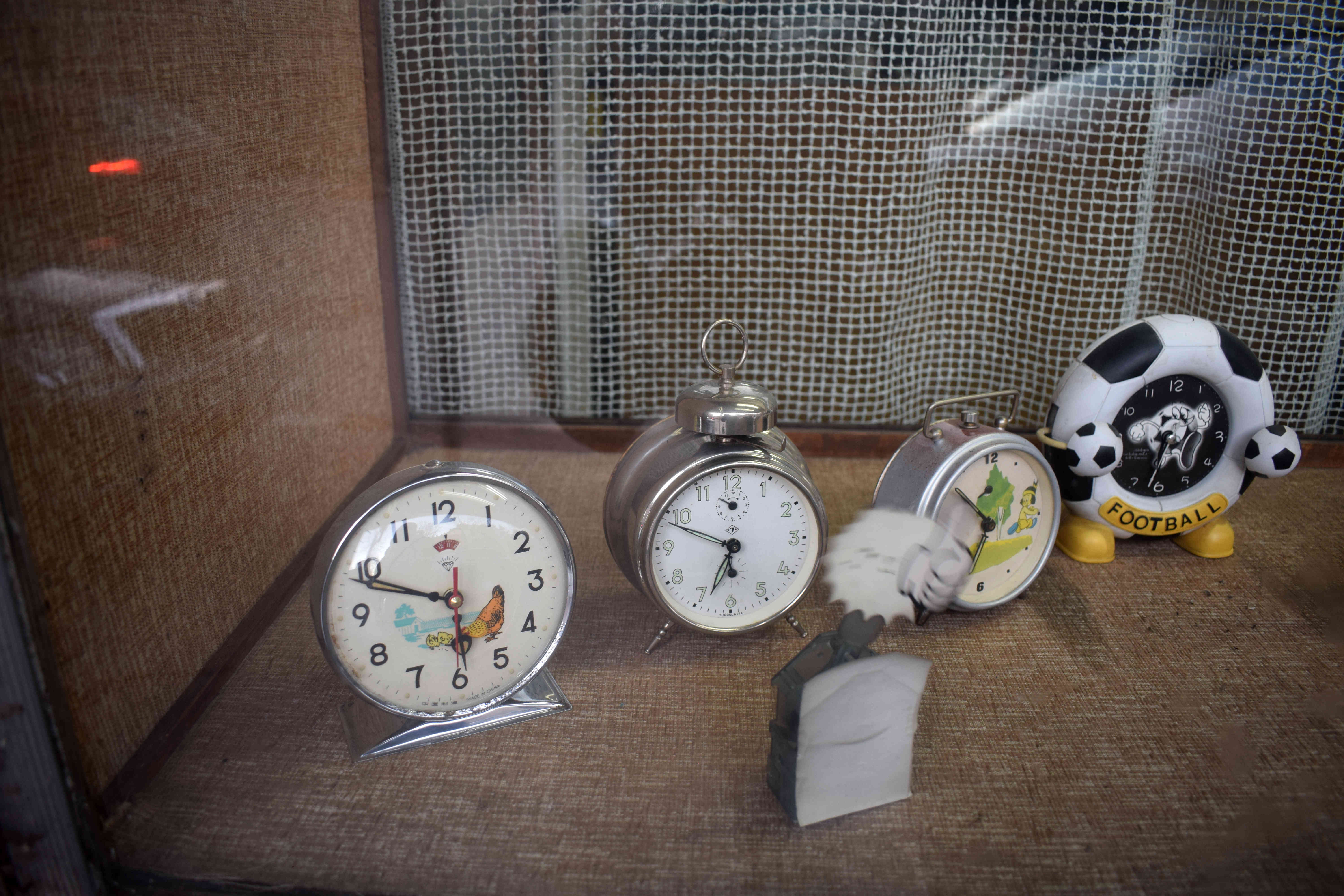 And finally, for the end, a picture of a historic mailbox from 1840. These mailboxes still exist in lots of Serbian cities and are still in use today. I spotted one in Cacak, as well as Belgrade.
And finally, for the end, a picture of a historic mailbox from 1840. These mailboxes still exist in lots of Serbian cities and are still in use today. I spotted one in Cacak, as well as Belgrade.
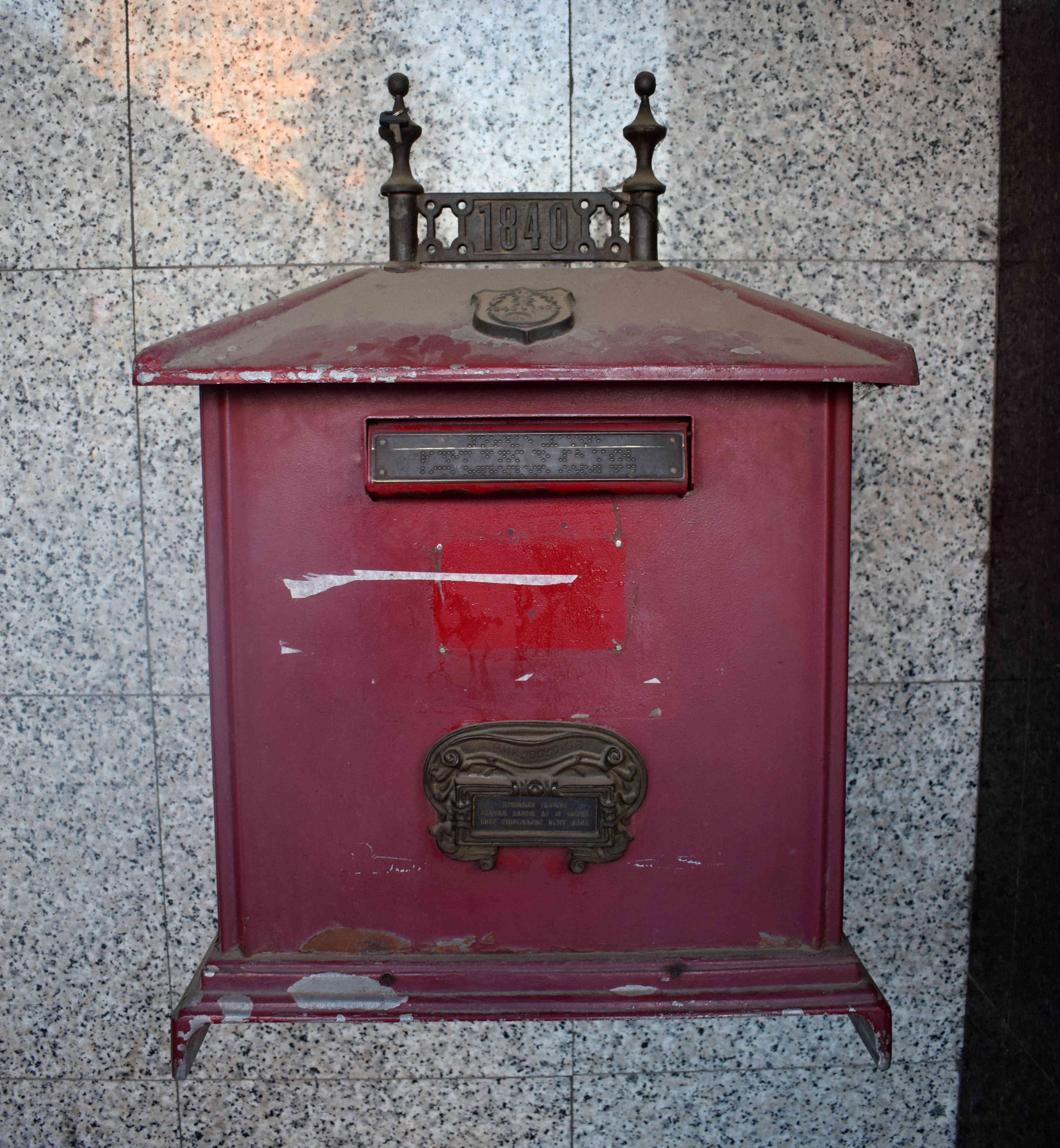
Overall, Valjevo impressed me. The city’s Tesnjar District is a perfect example of how a Serbian city can protect its architecture and history from unrestrained development.
Traditional Serbian architecture is a unique blend of Ottoman, European and Byzantine styles. This cultural and historical legacy is manifested in the buildings that were built across cities in Serbia in the 17th, 18th and 19th centuries.
But in the 20th century, this cultural legacy came under threat with wars and communism. Lots of old building were torn down with socialist structures built in their place.
In the 21st century the assault continues, with modern structures getting erected ad alarming rates.
In all the cities I’ve been to in the Balkans, I’ve seen historic districts absolutely ruined by one modern structure that sticks out and towers over the rest.
In Valjevo, there was almost none of this, which made me happy. It’s a city where you can really feel what life was like in Serbia in the 19th century.
And while I’m sure if I dug a little deeper I could find countless historic structures that have been torn down, the center of the city does not feel that way.
In Valjevo you get a sense that the city actually cares about its historic buildings, instead of just tolerating them like so many other cities do.
